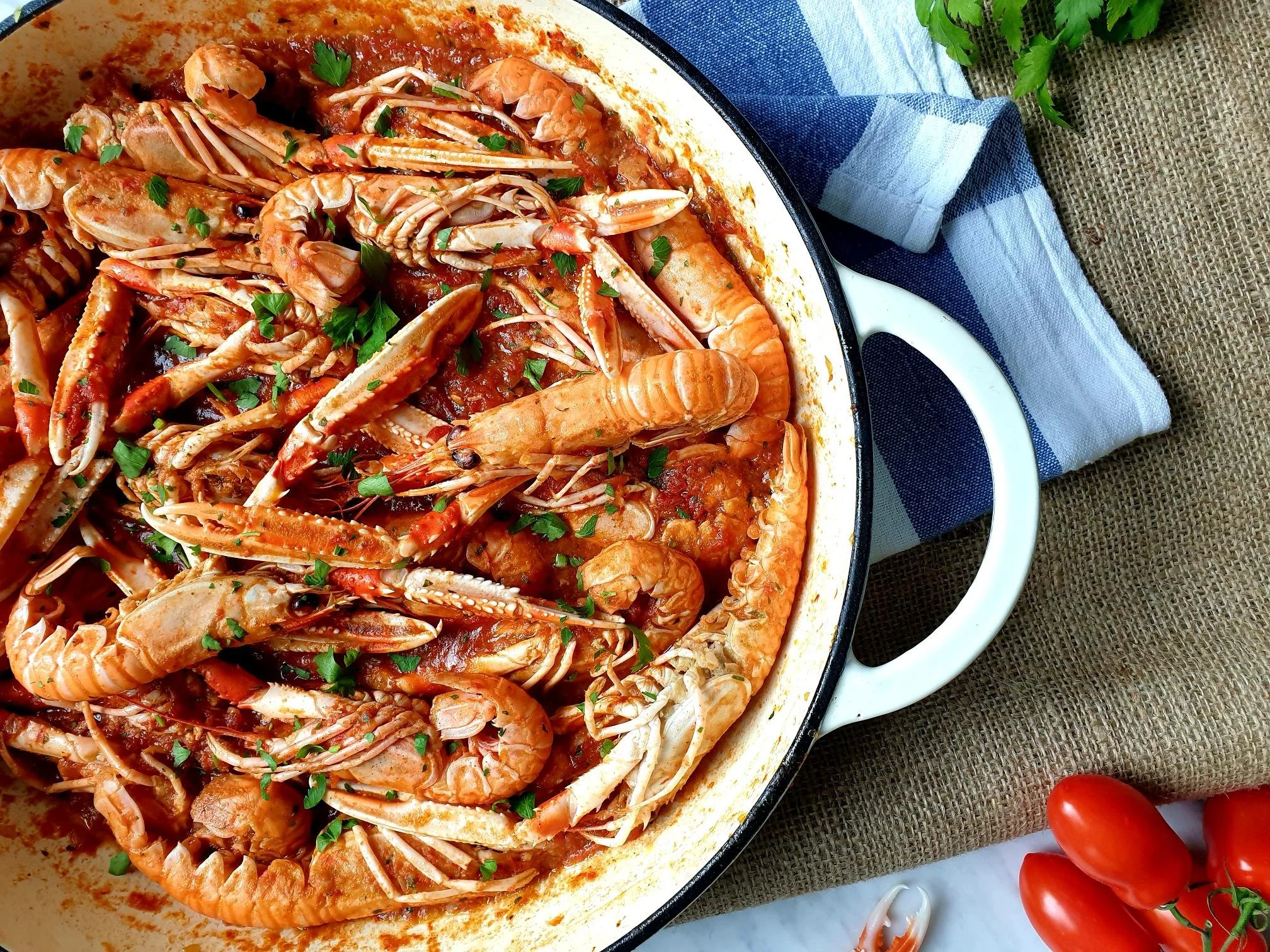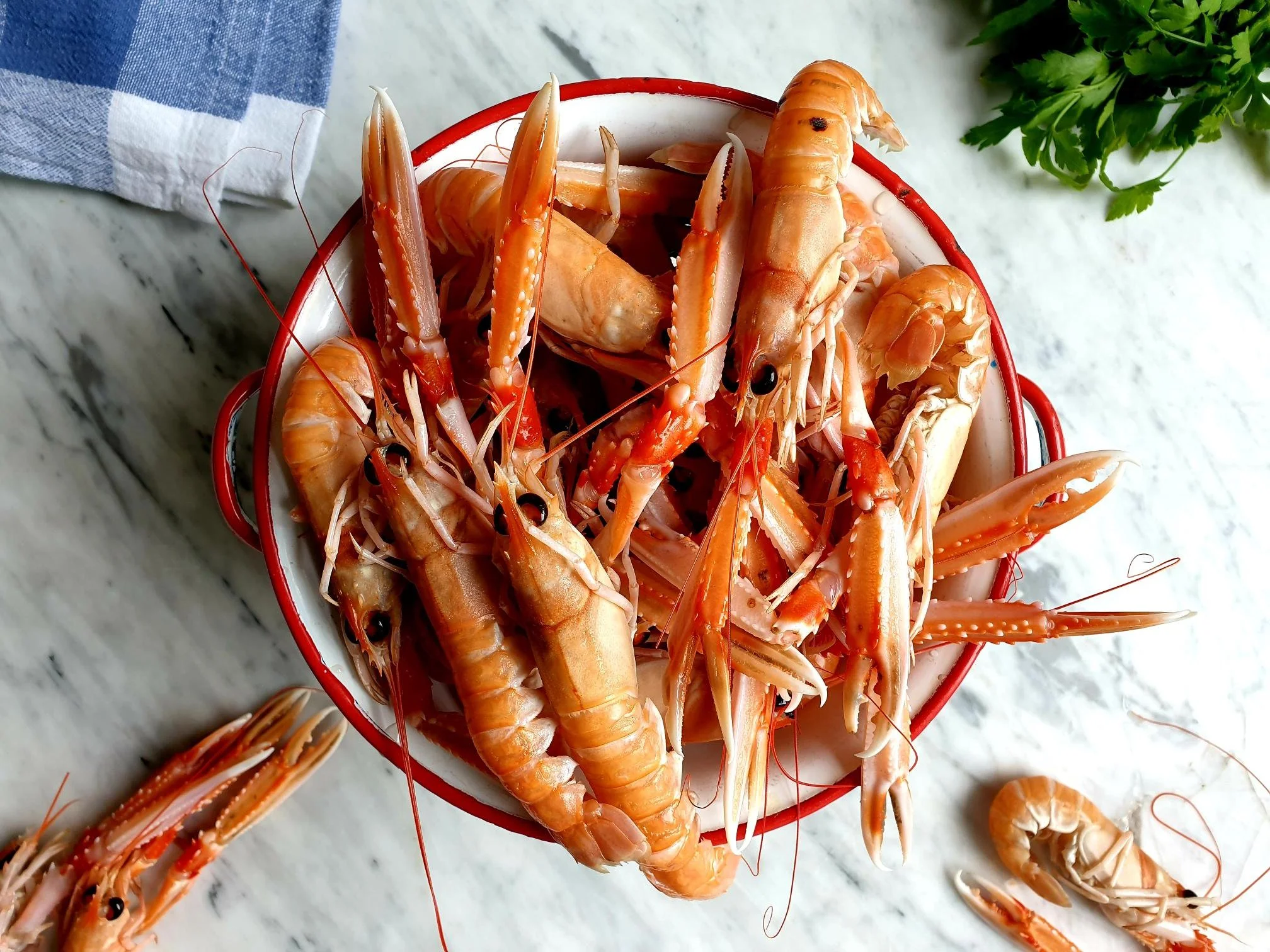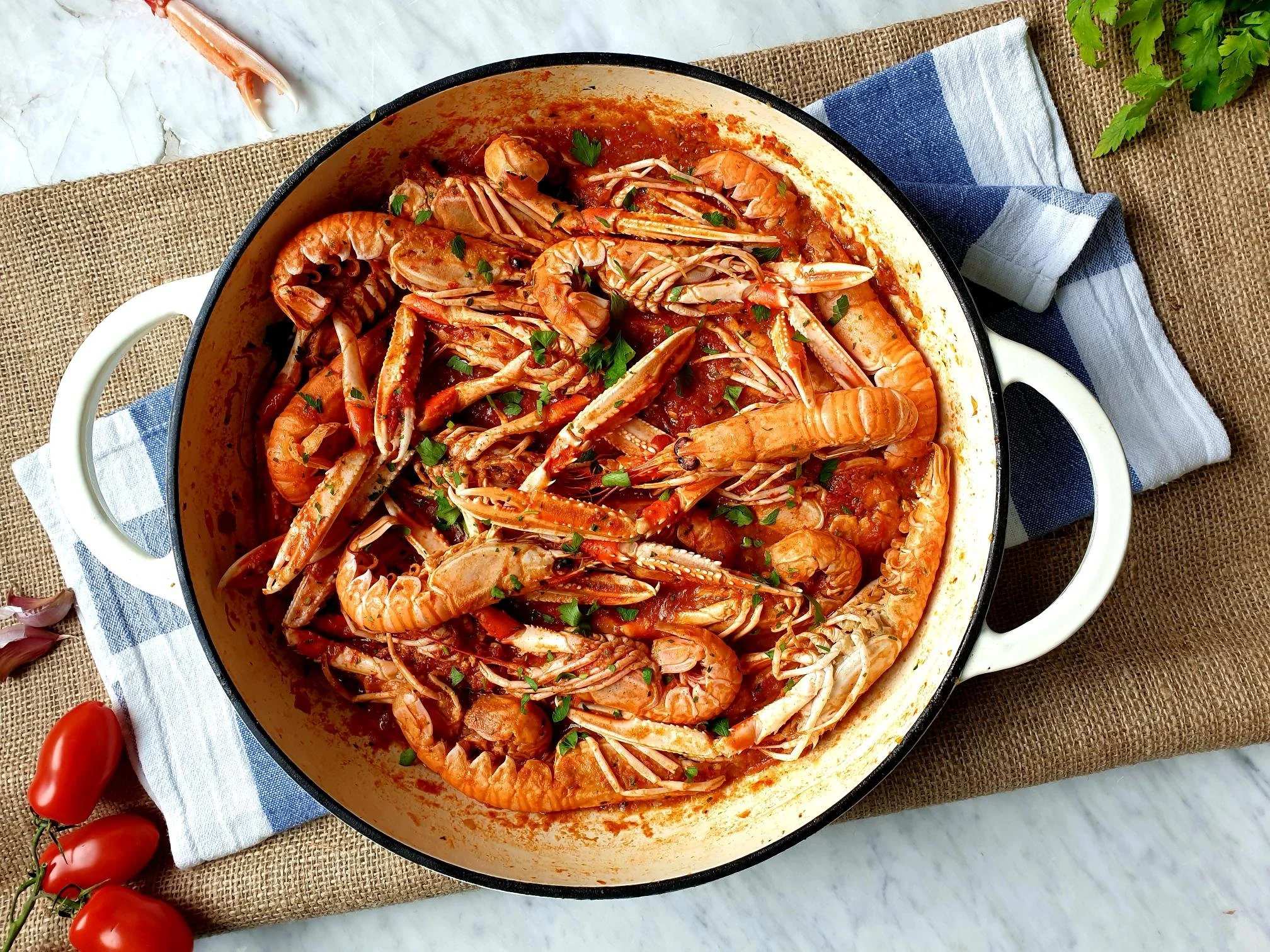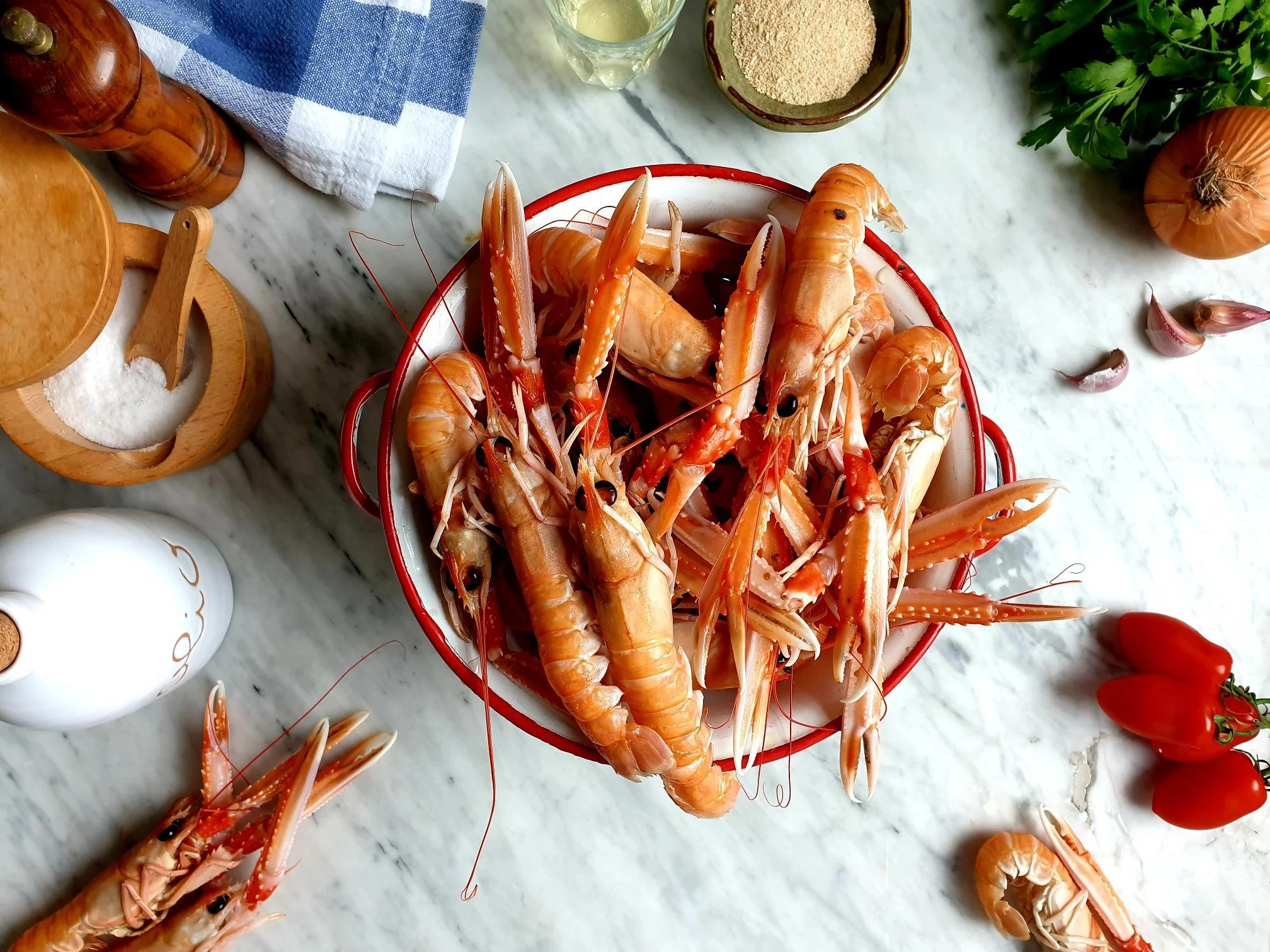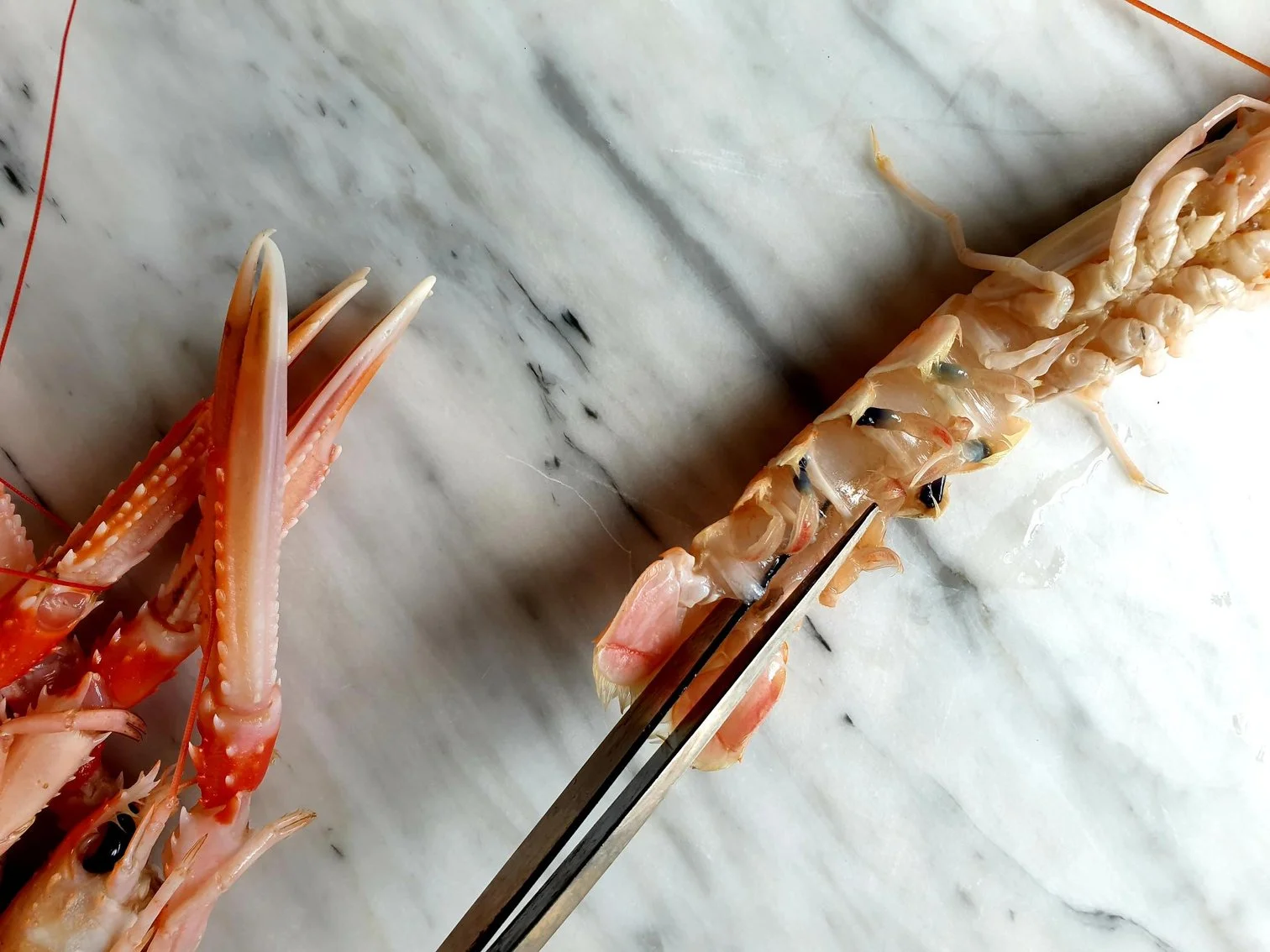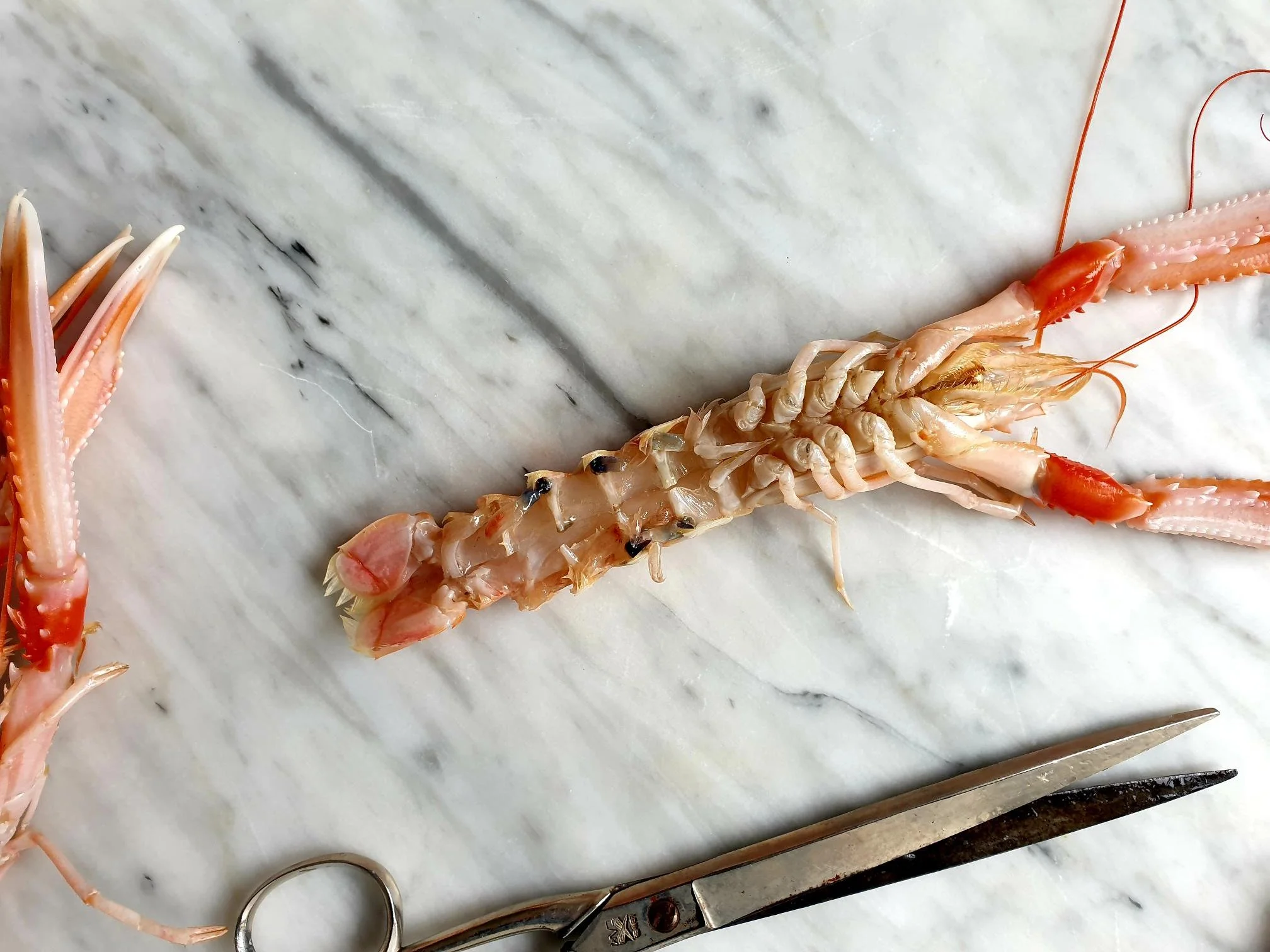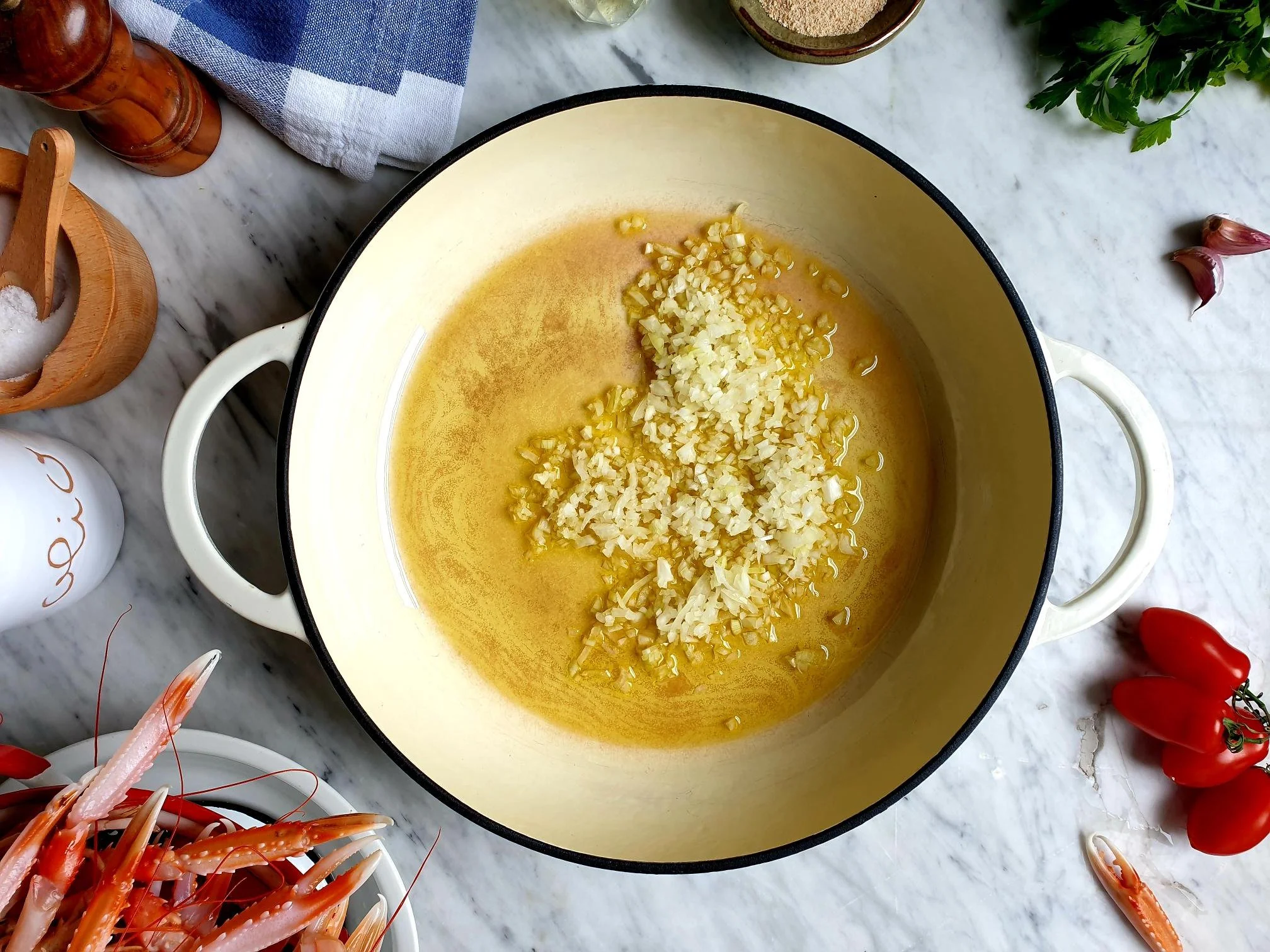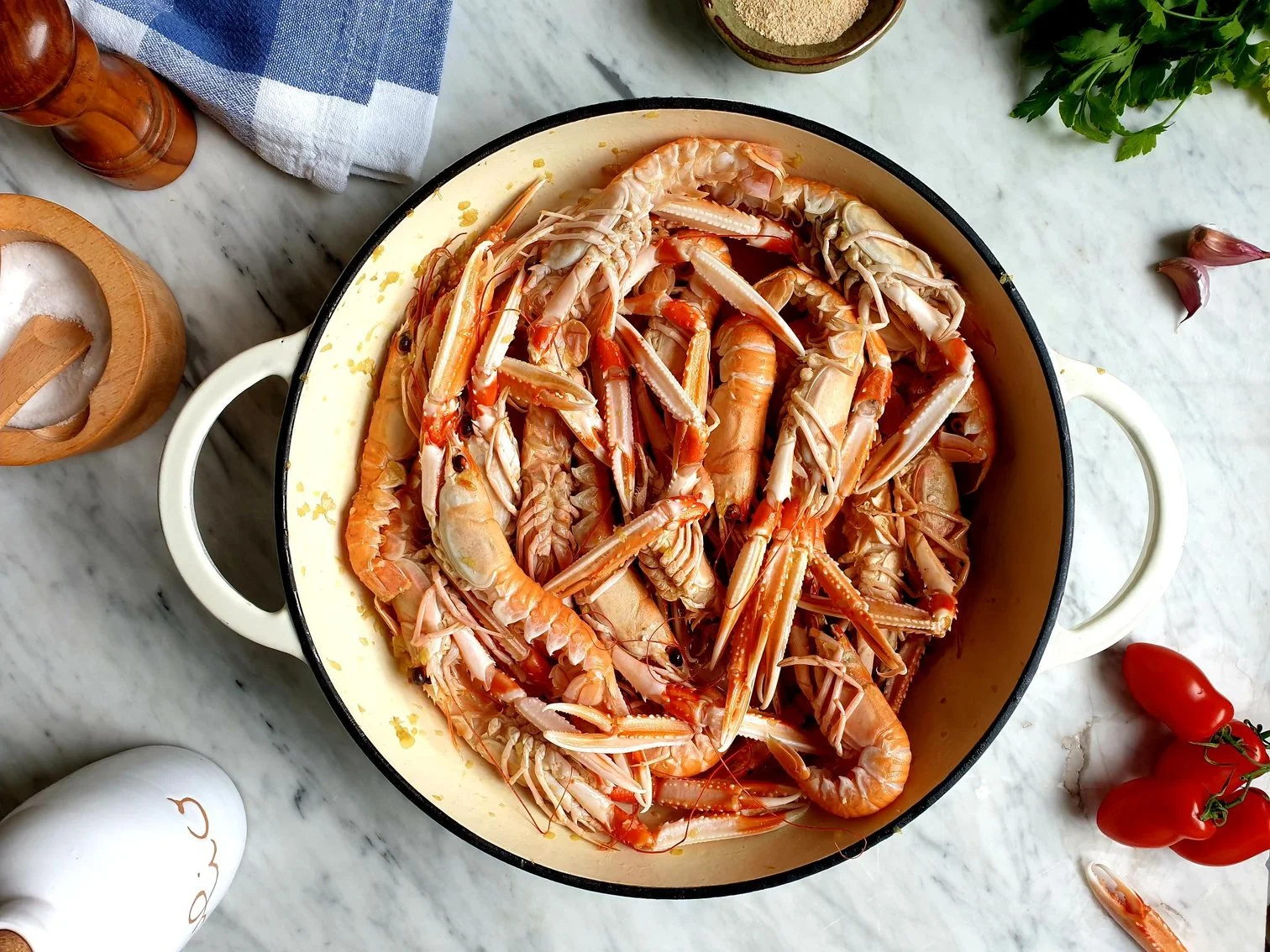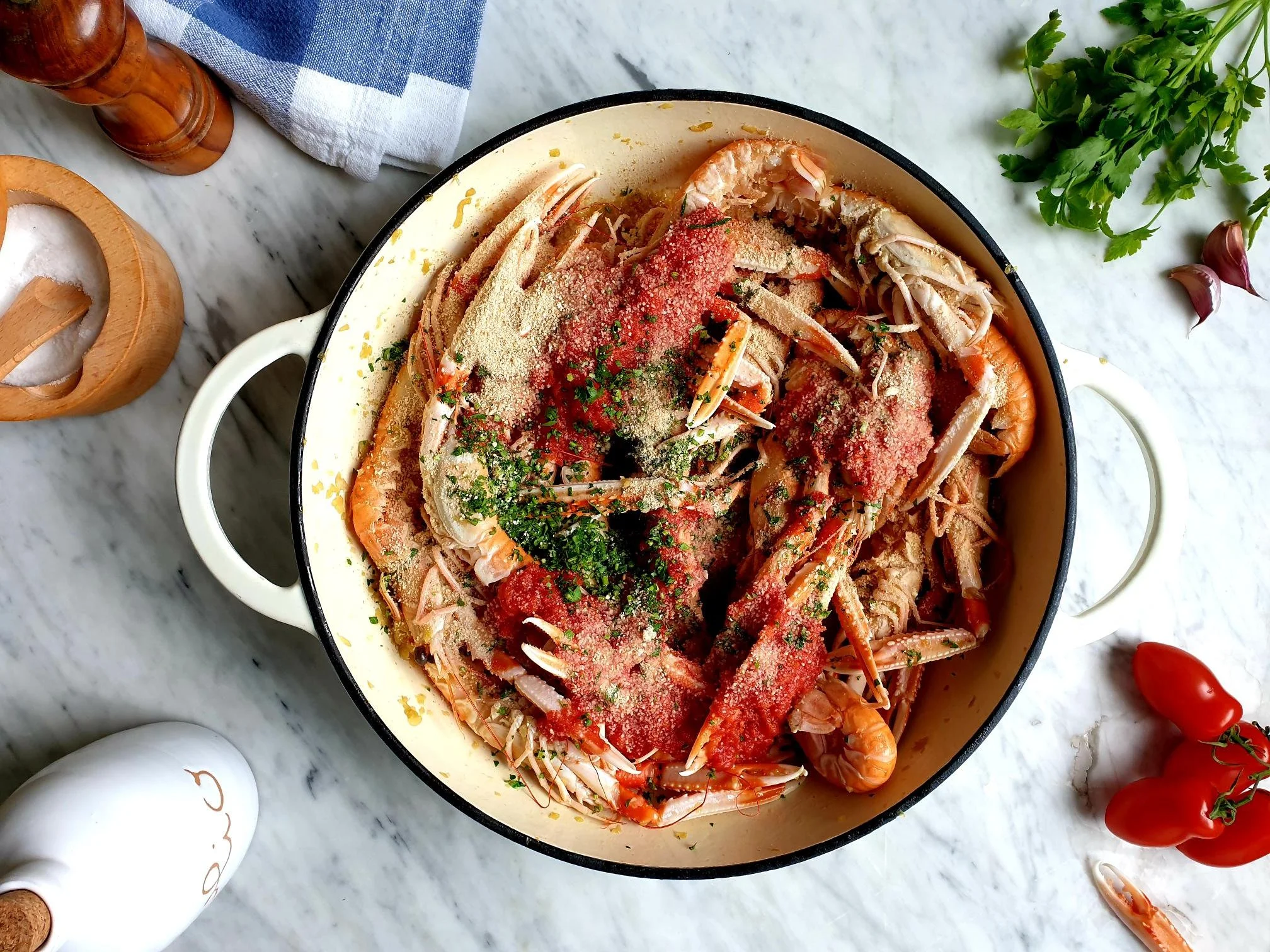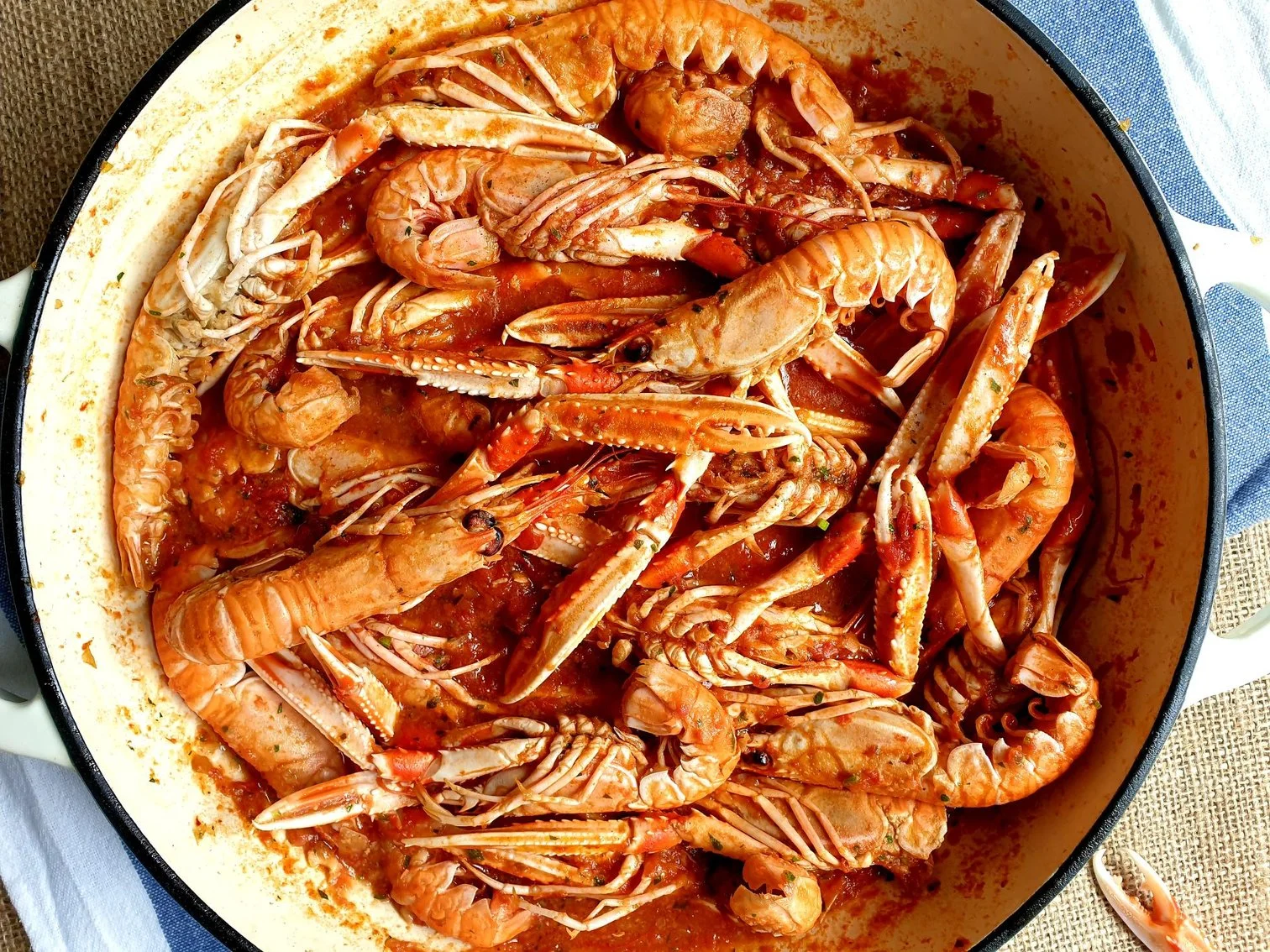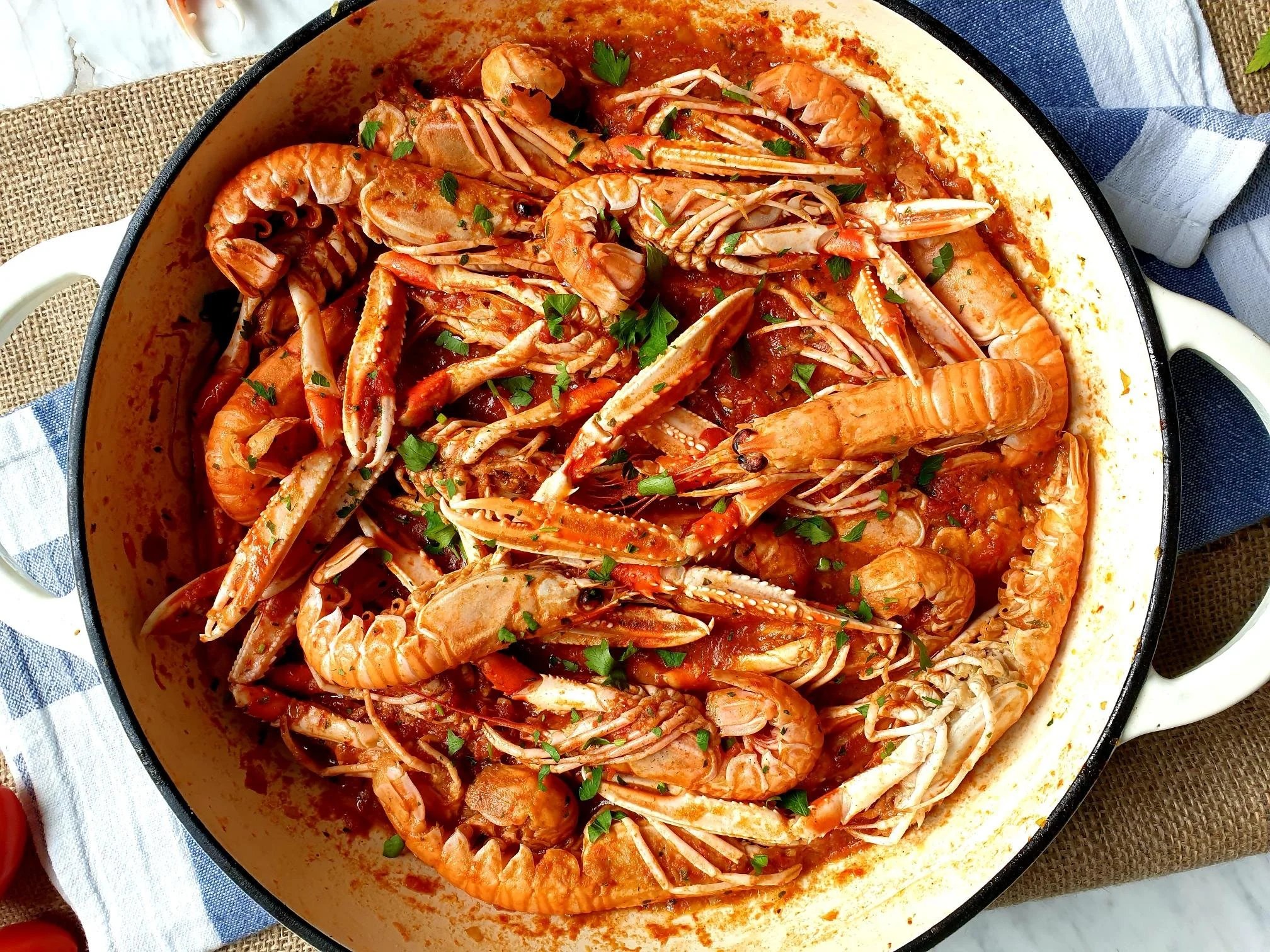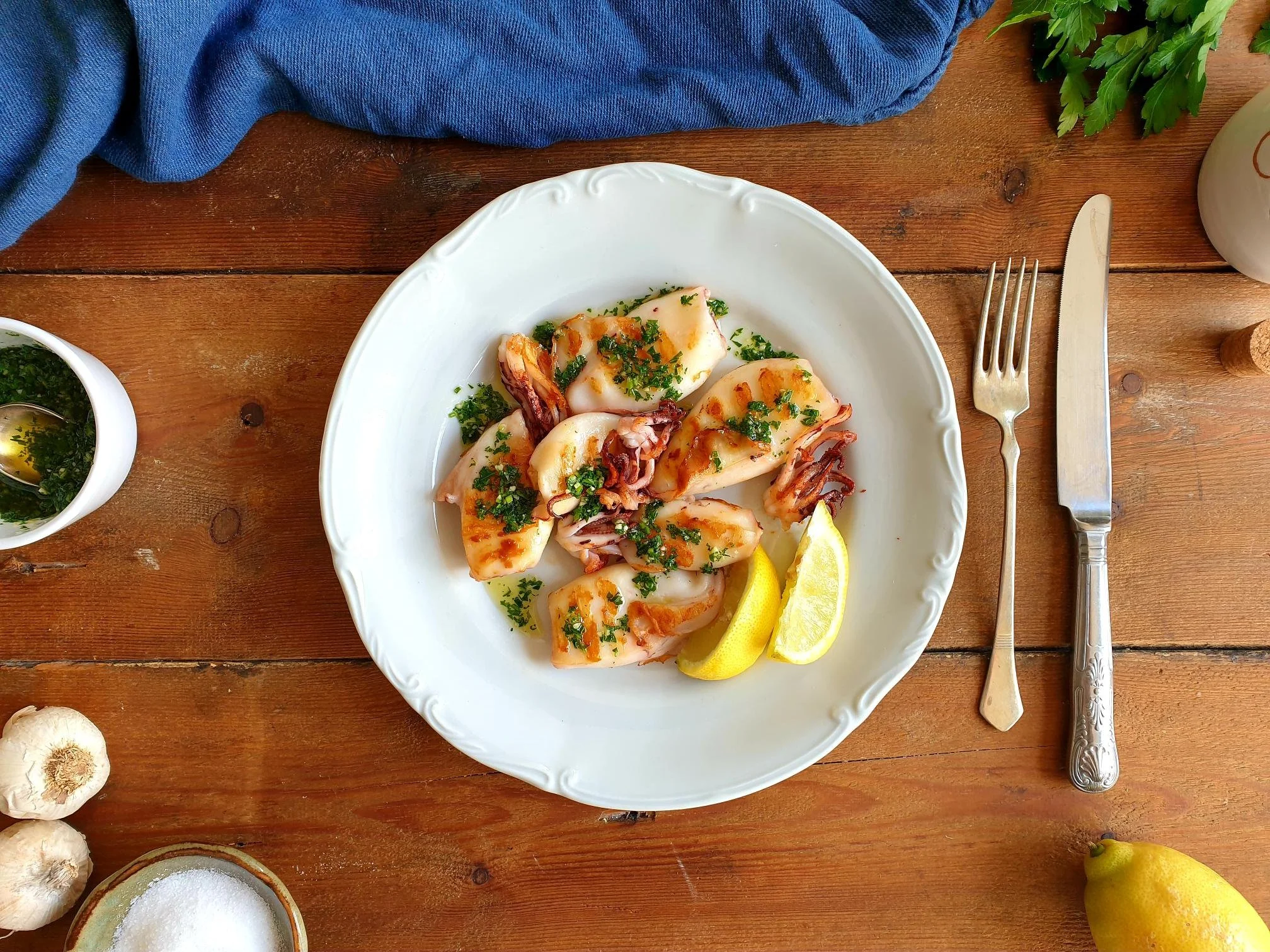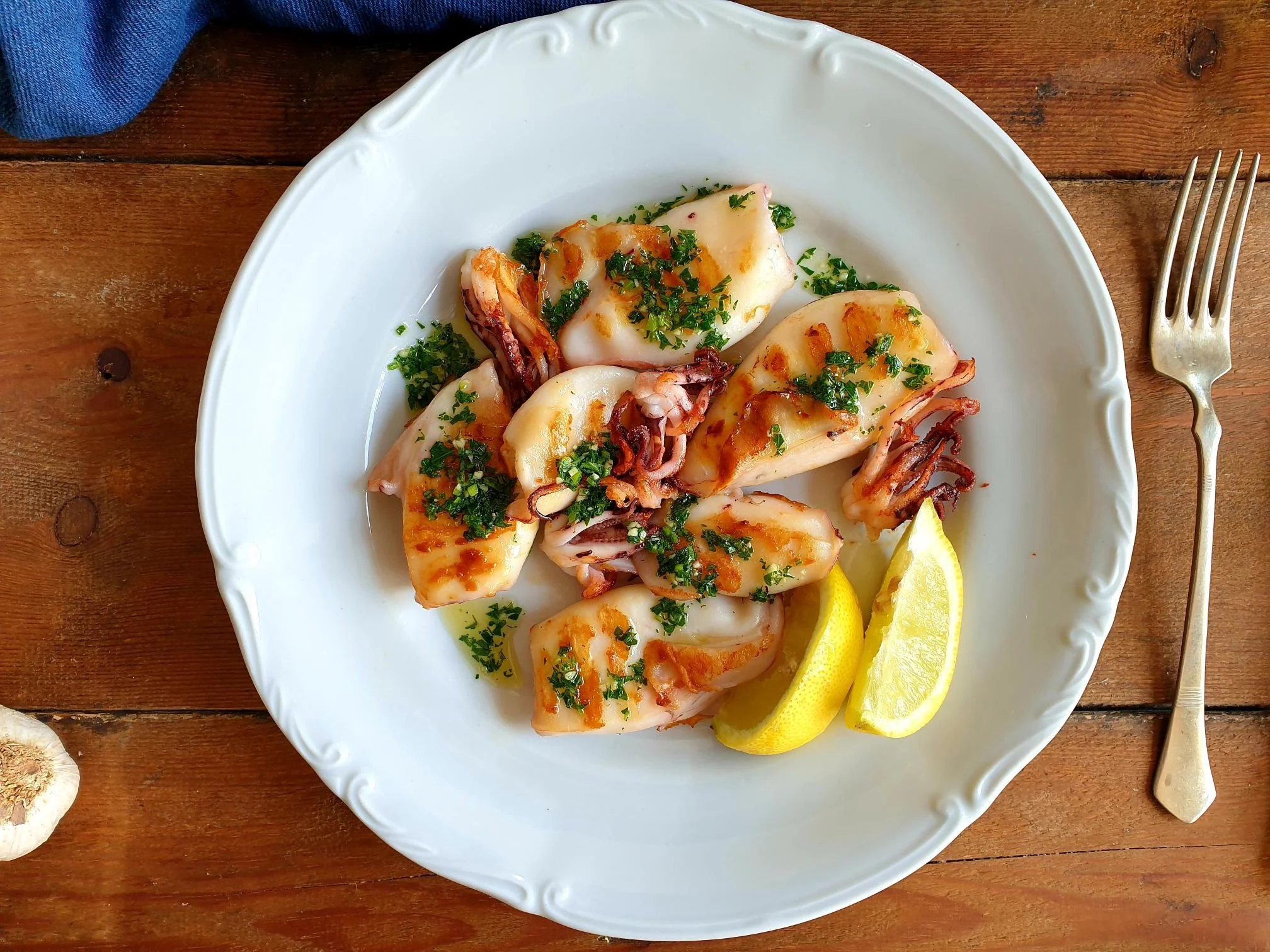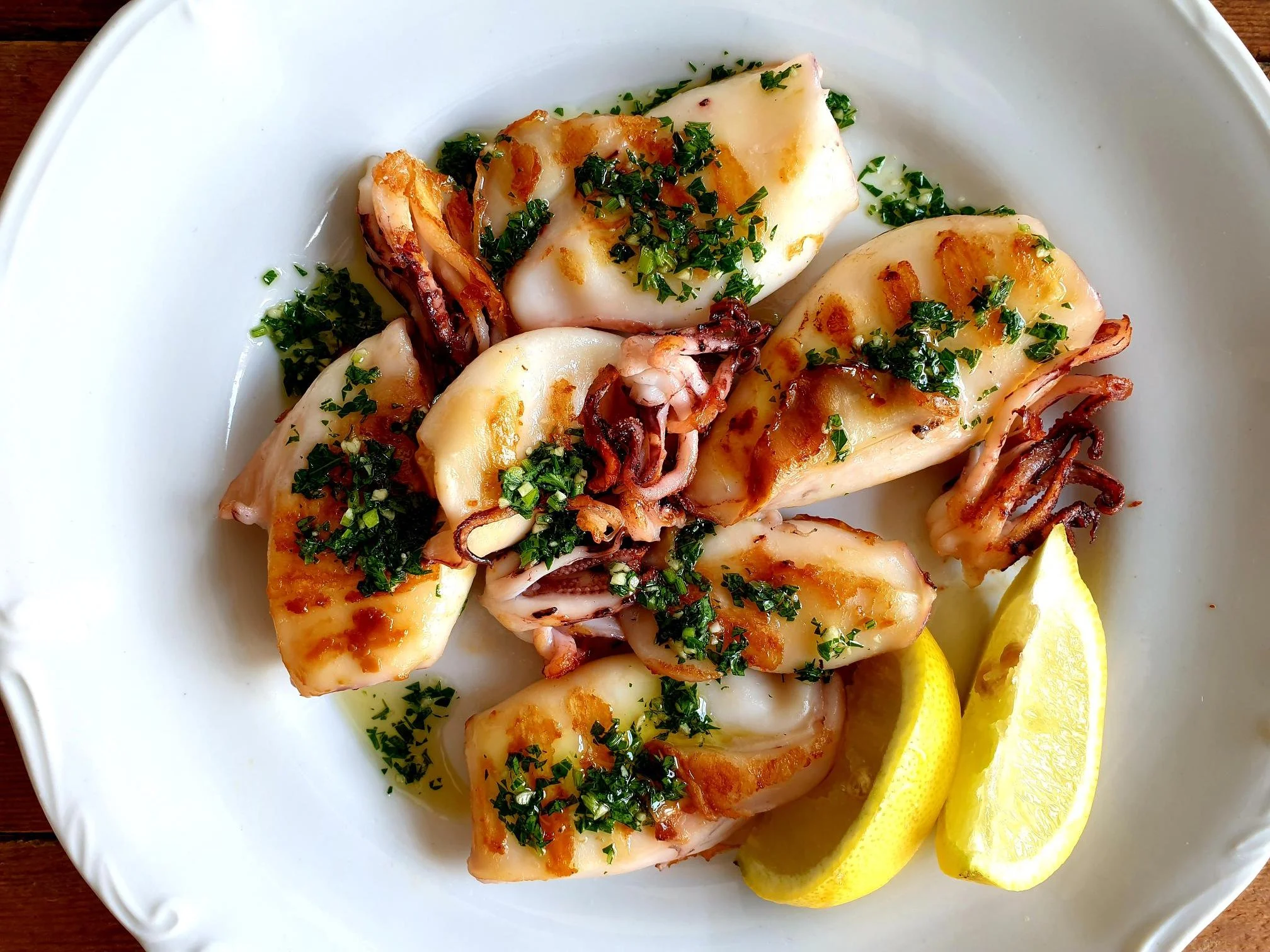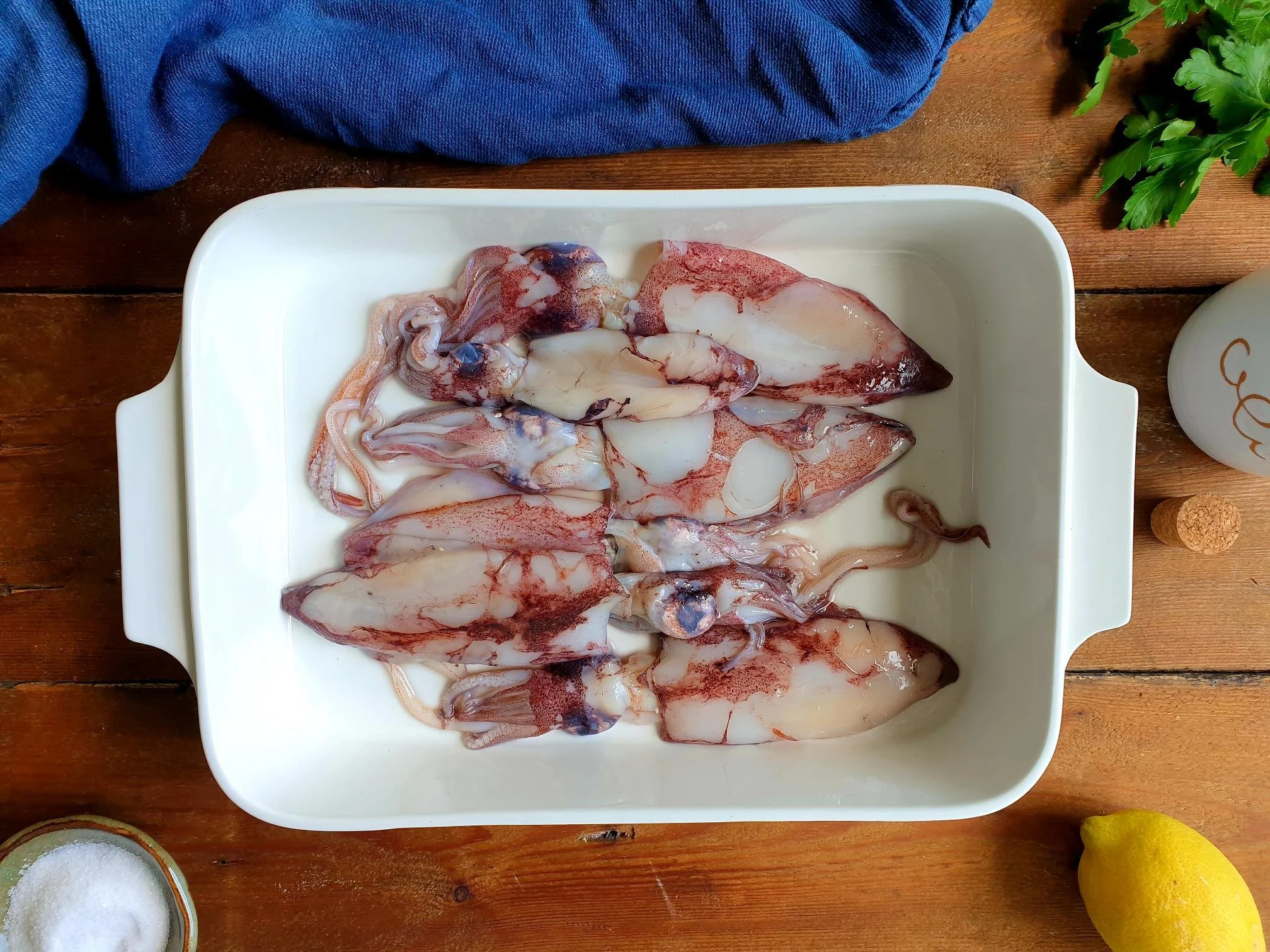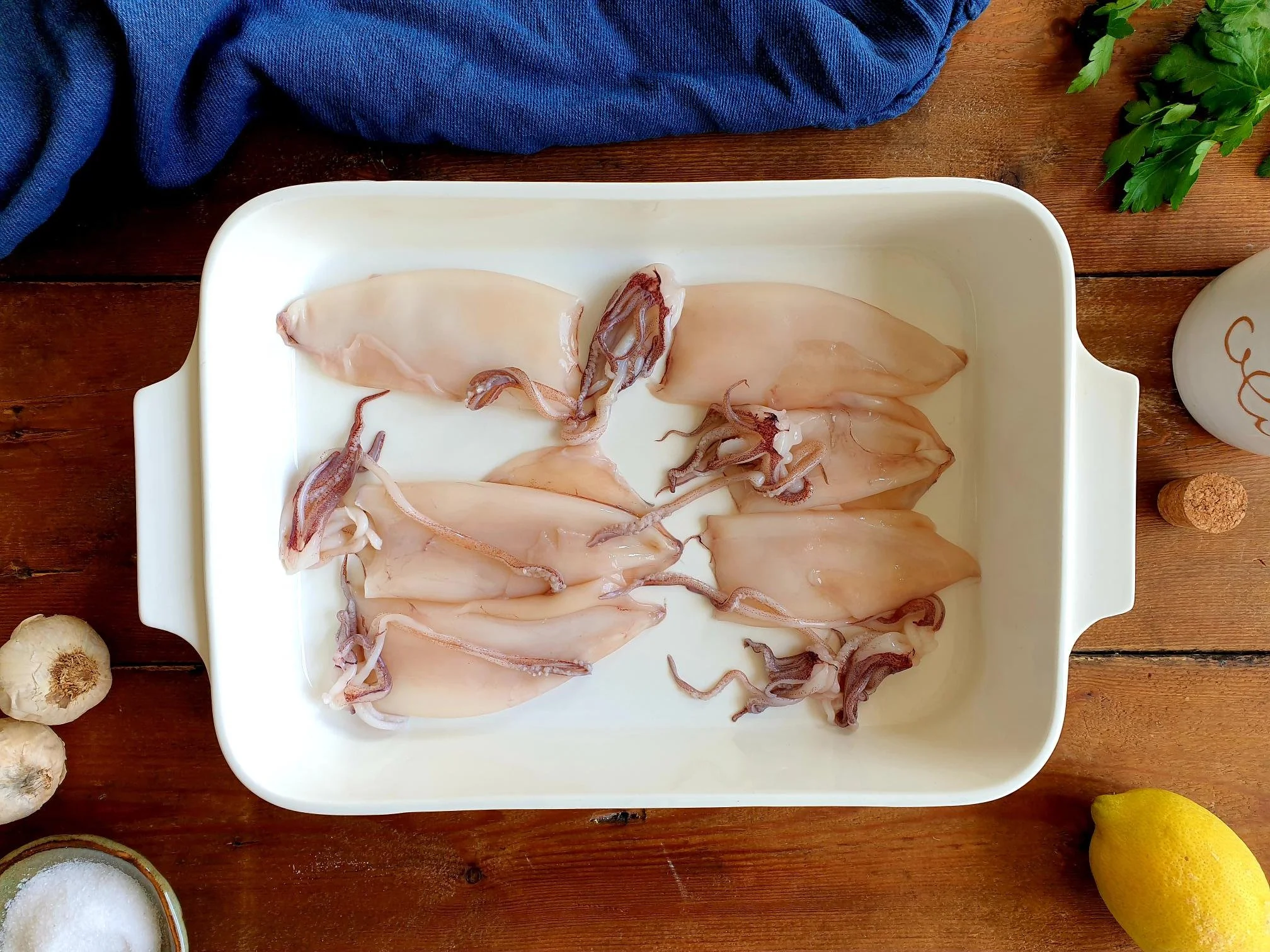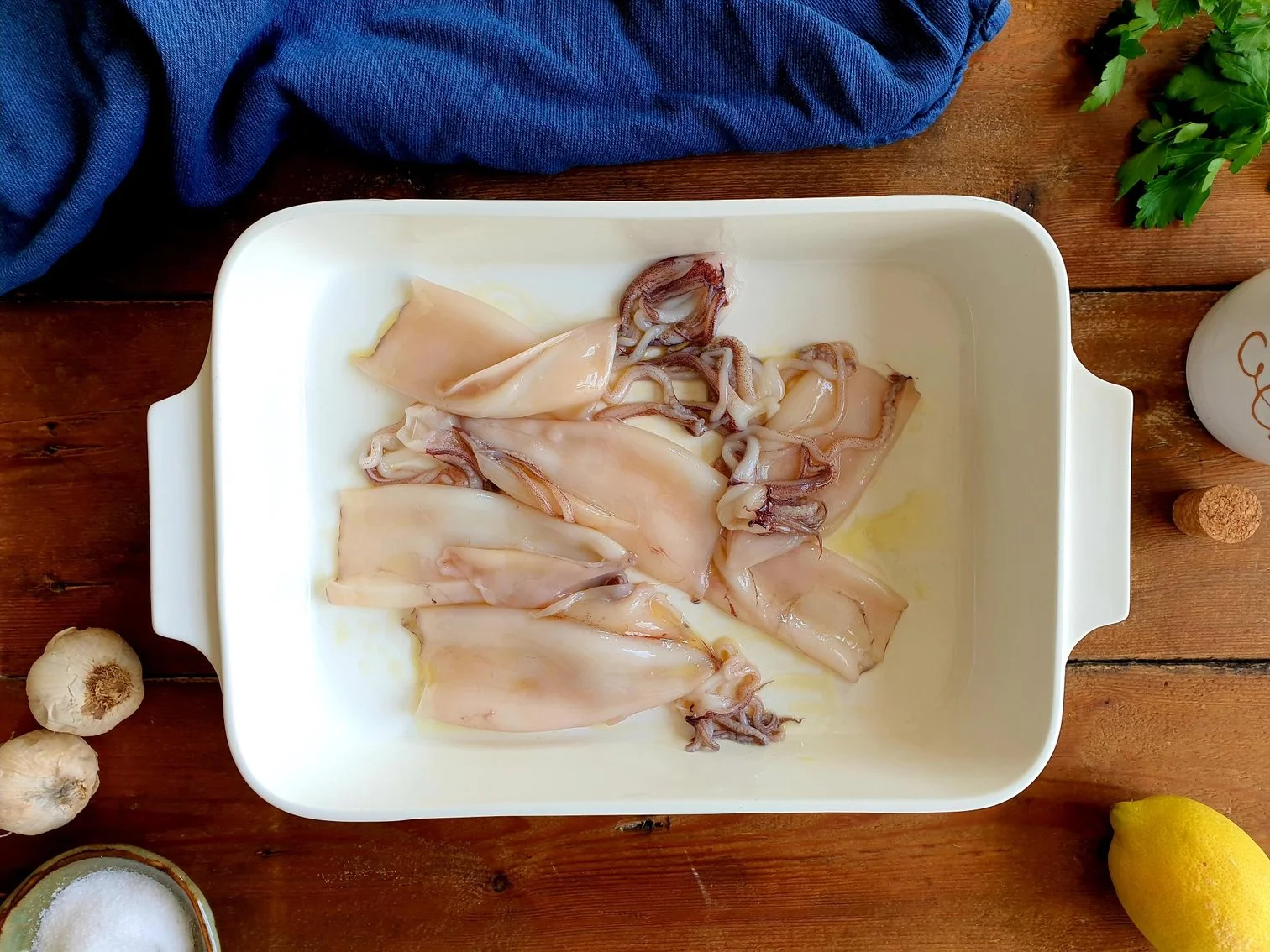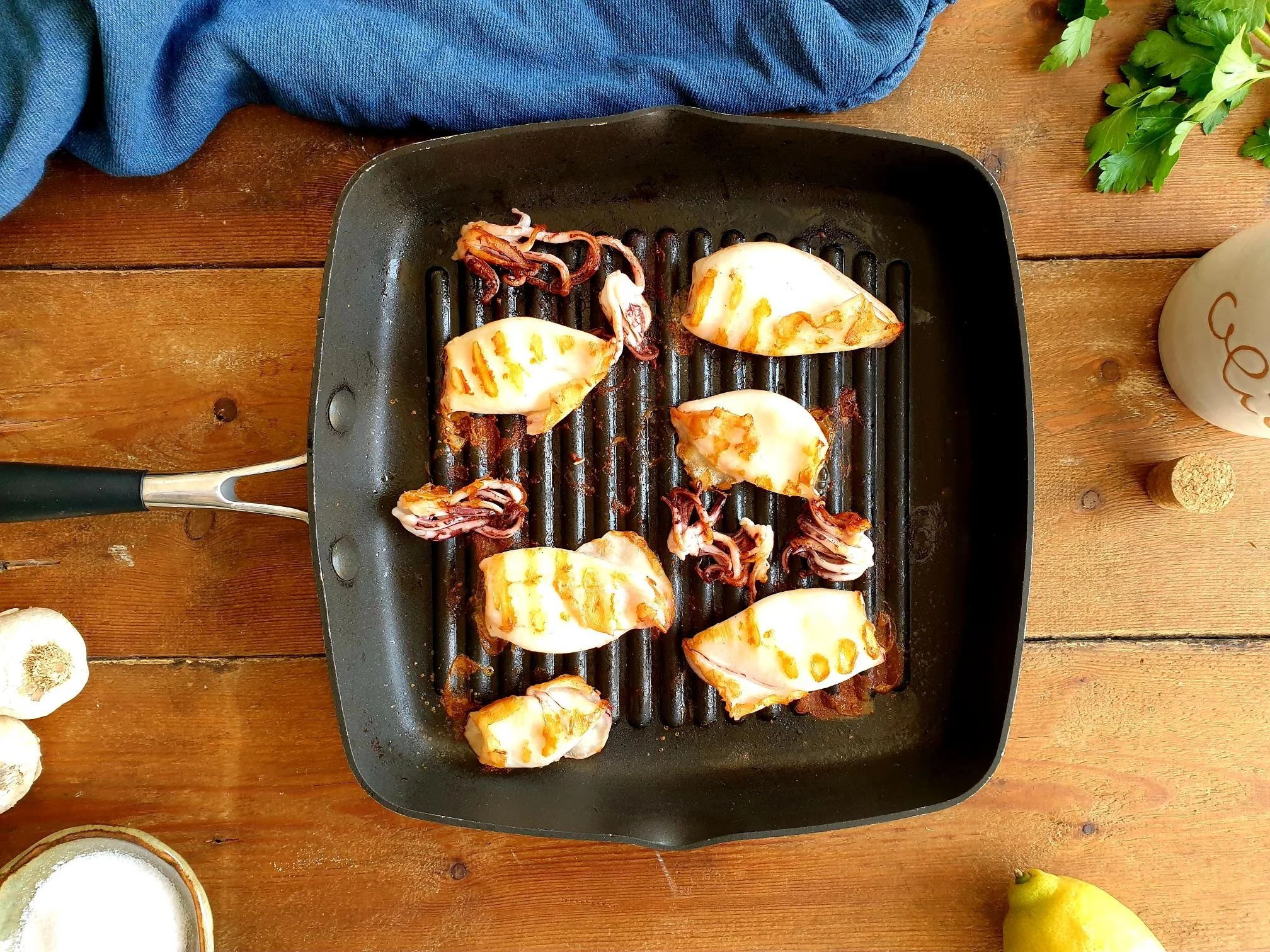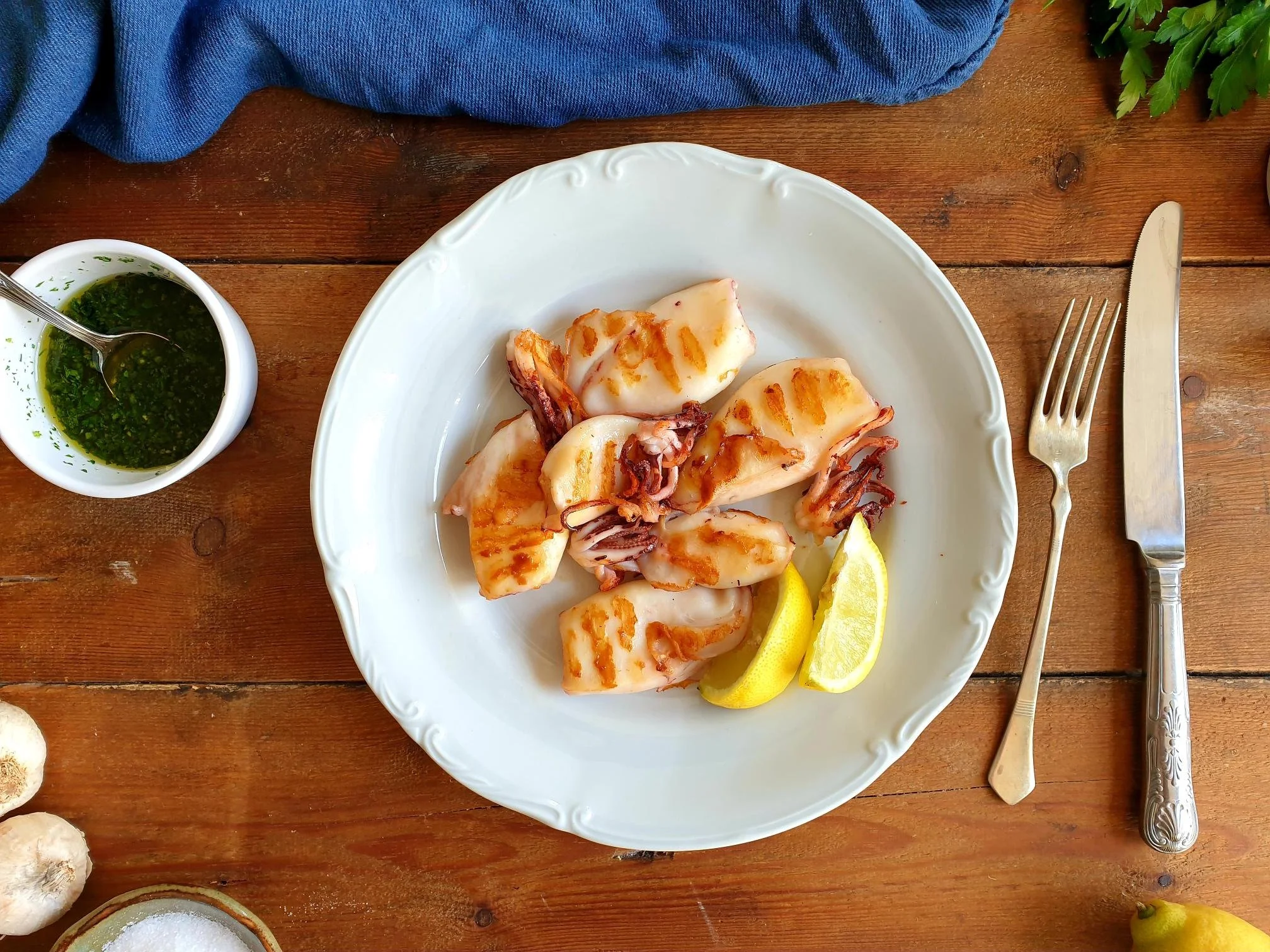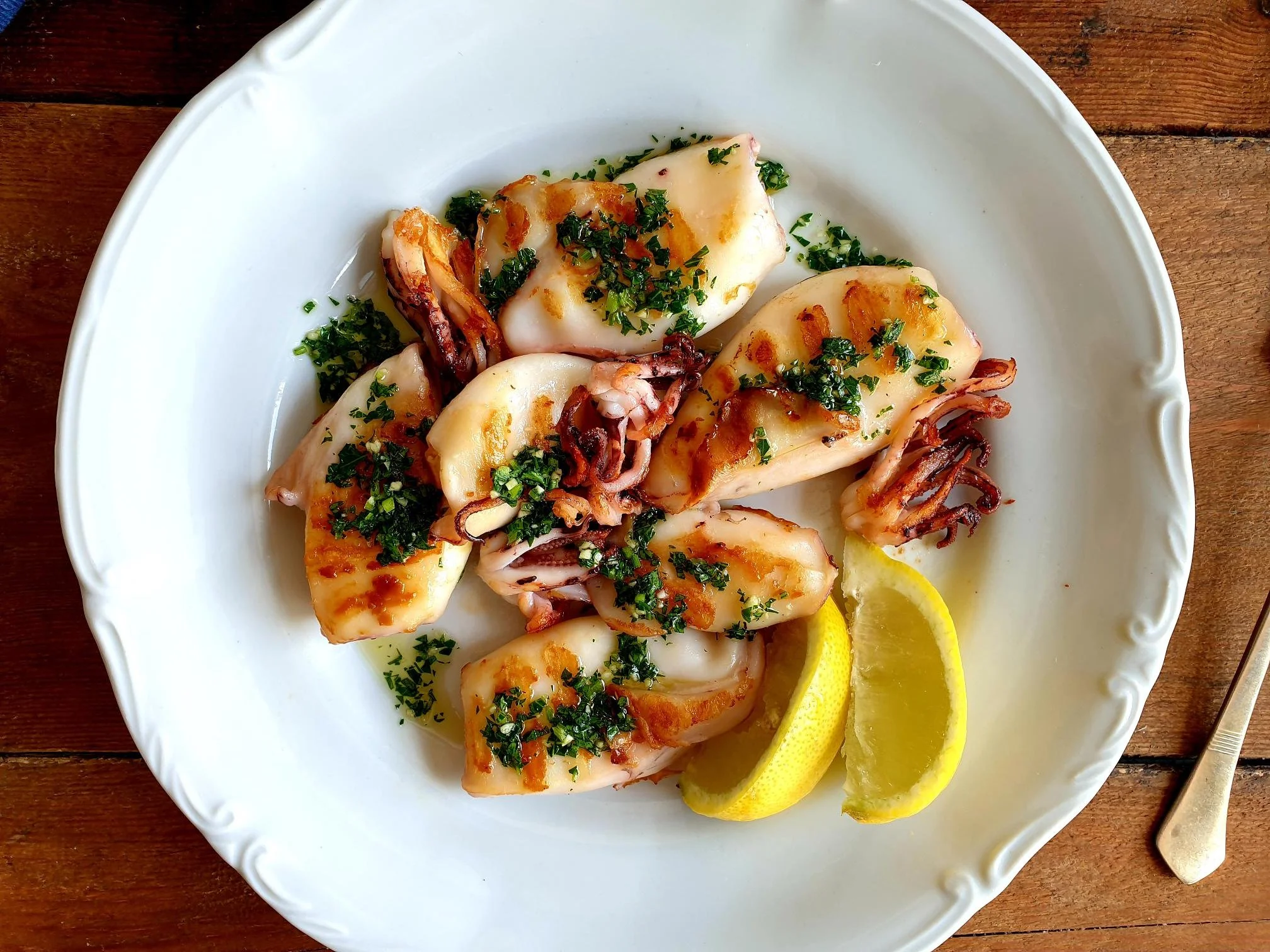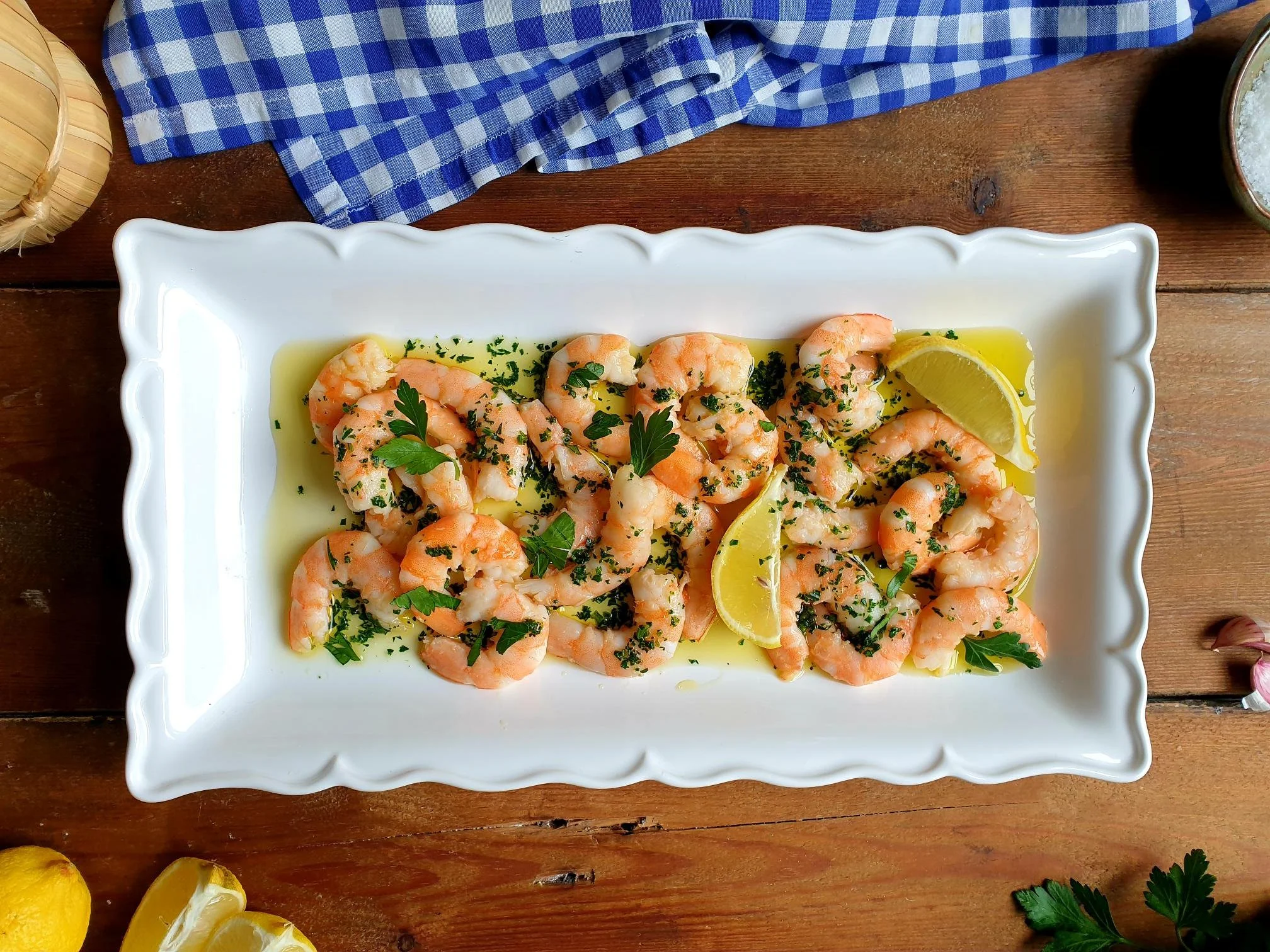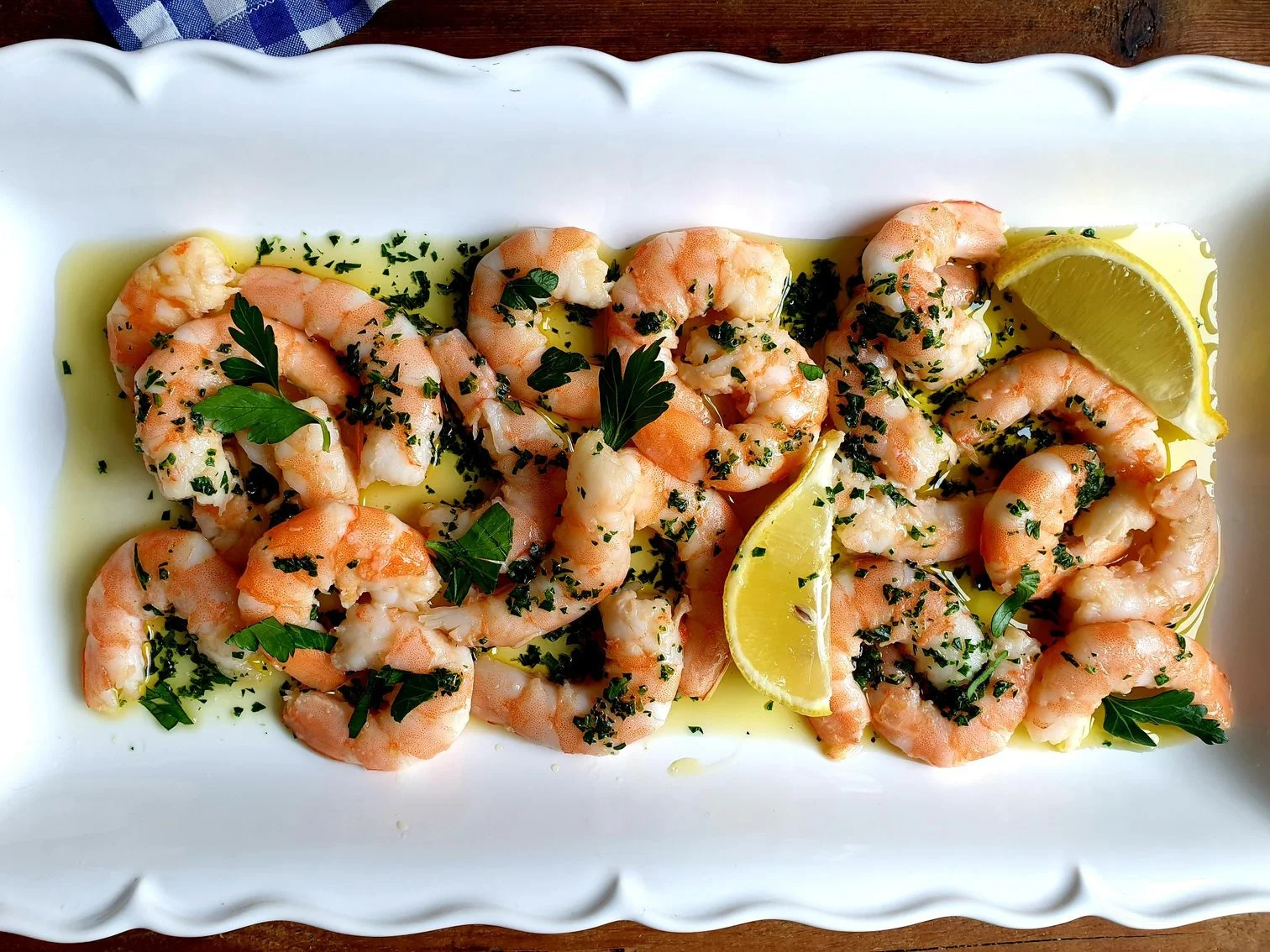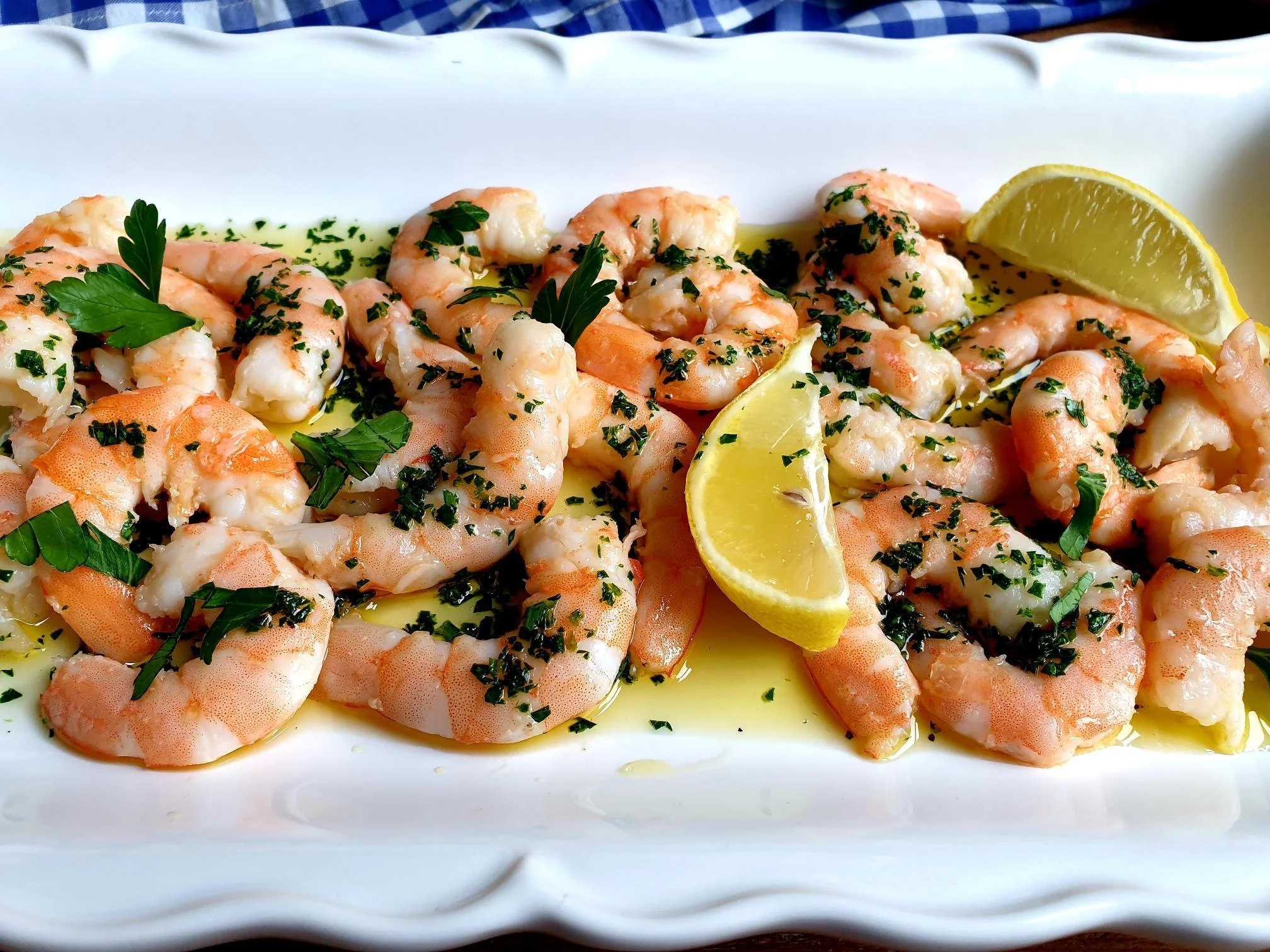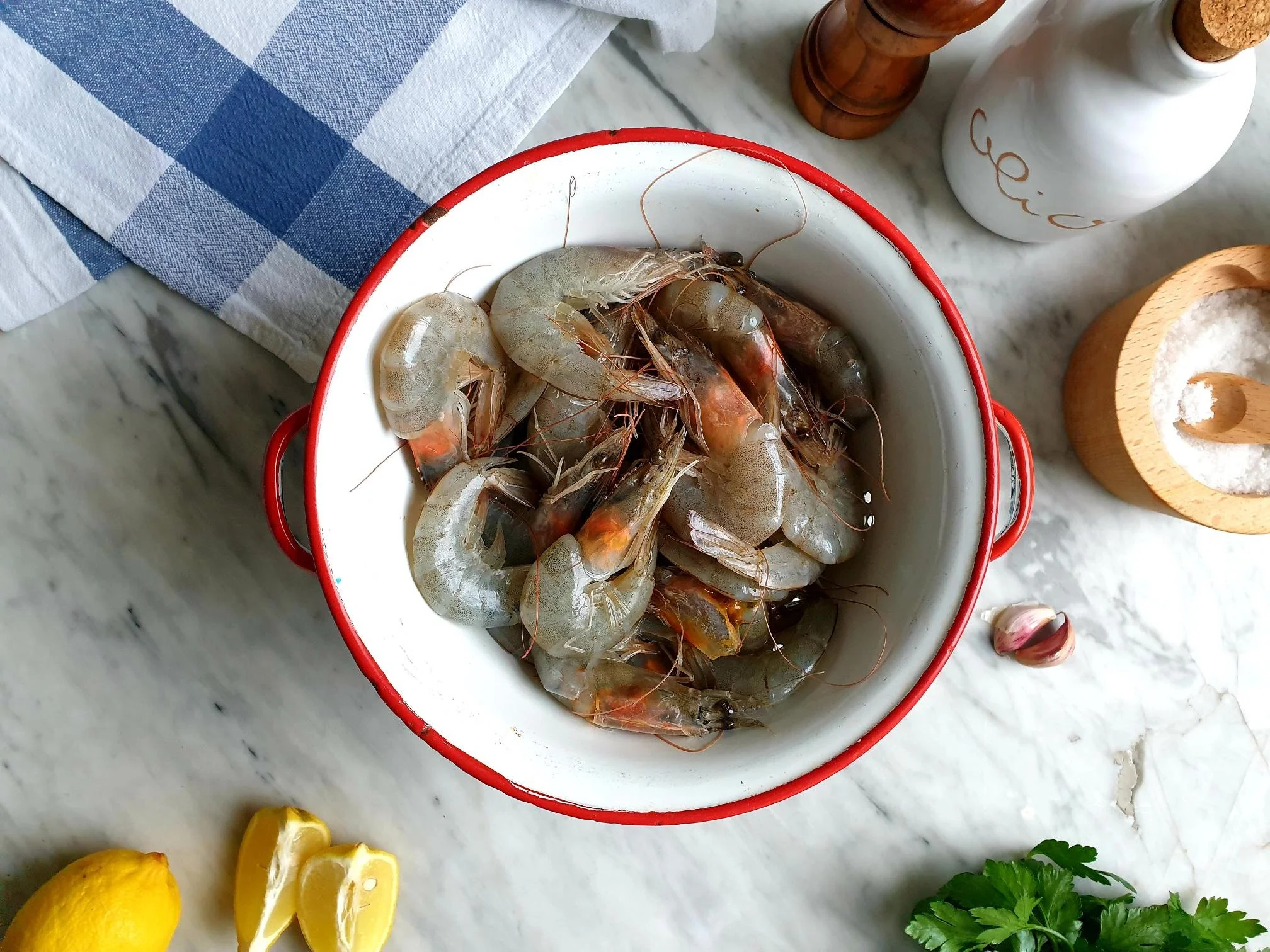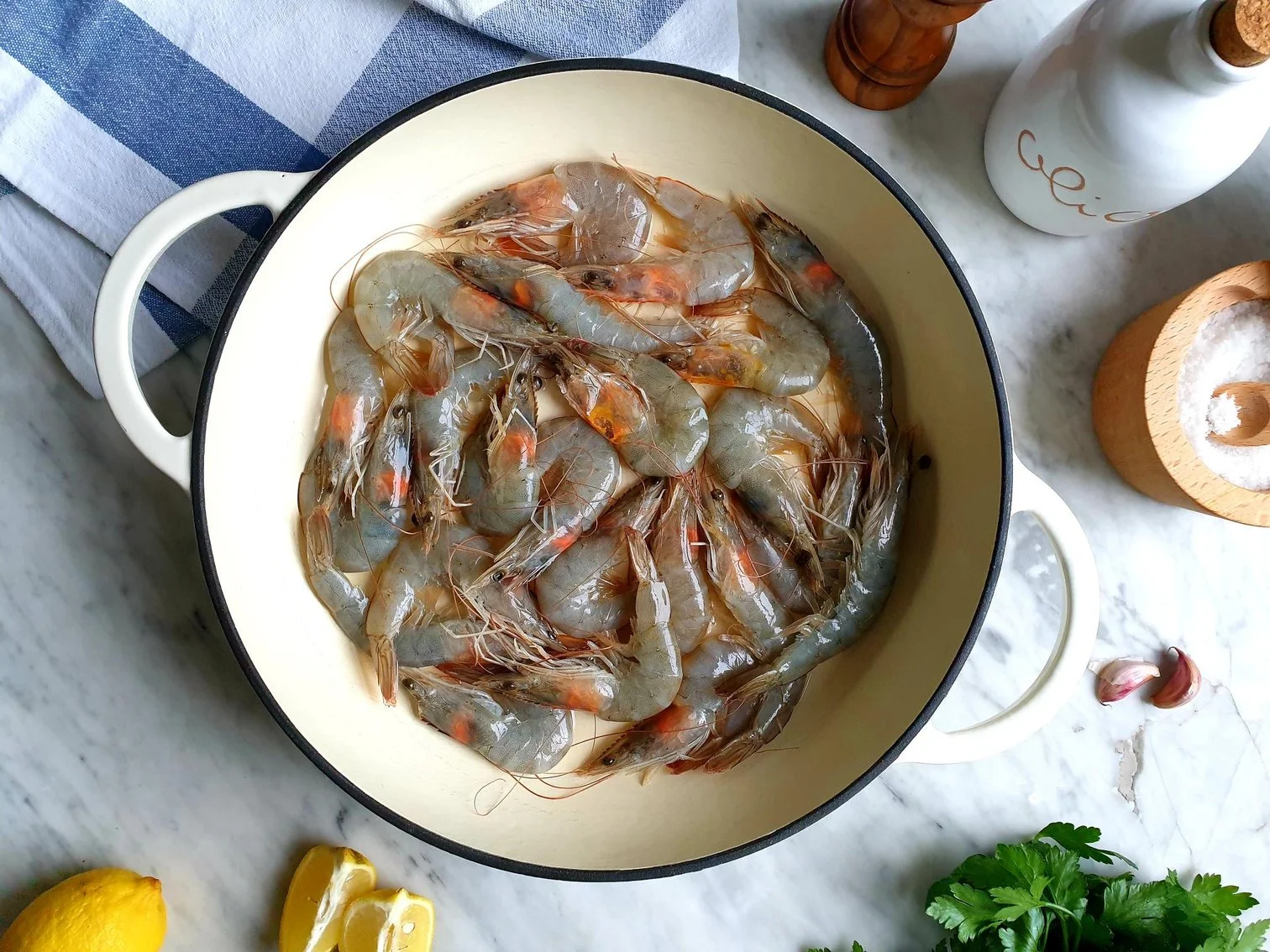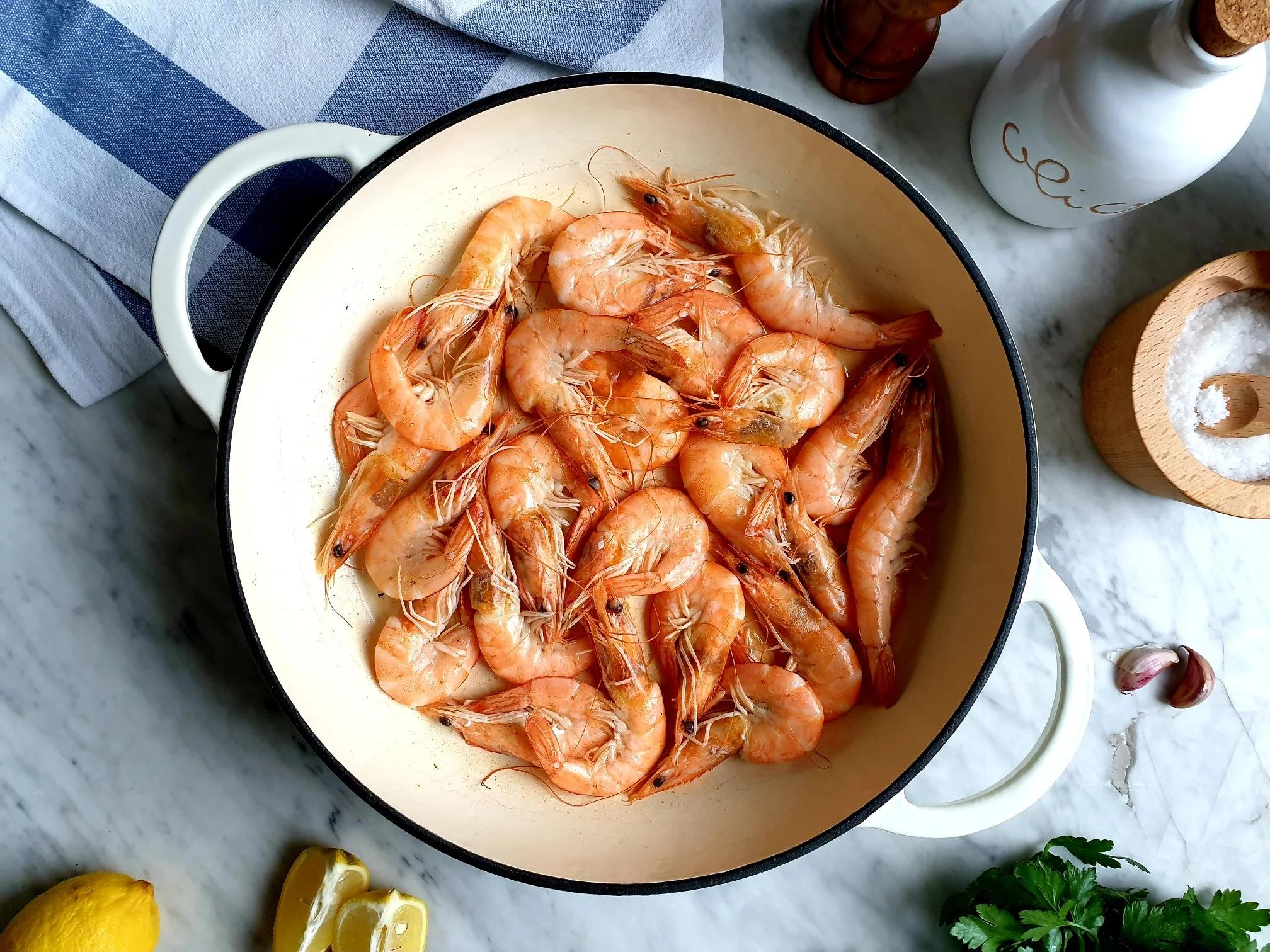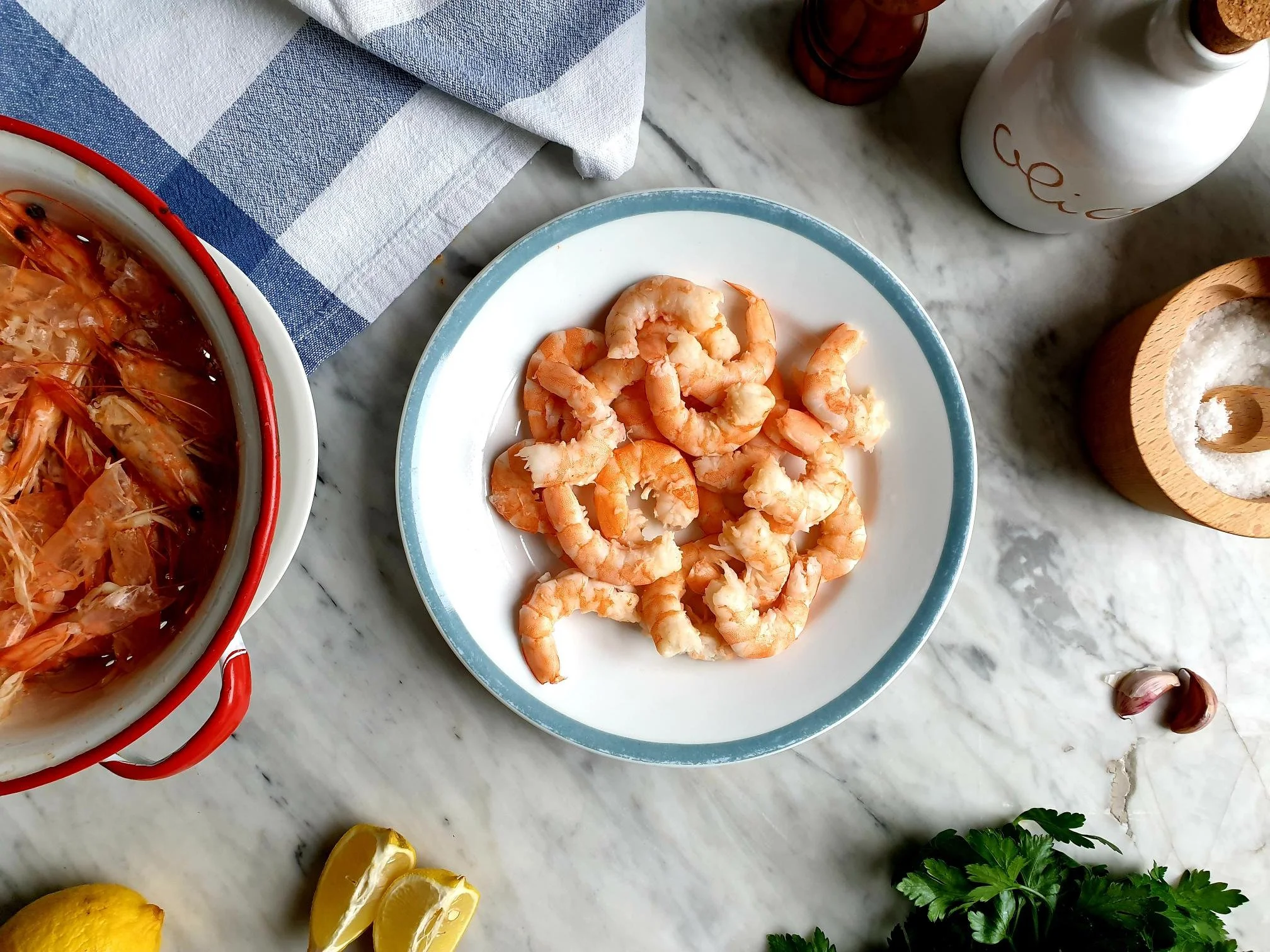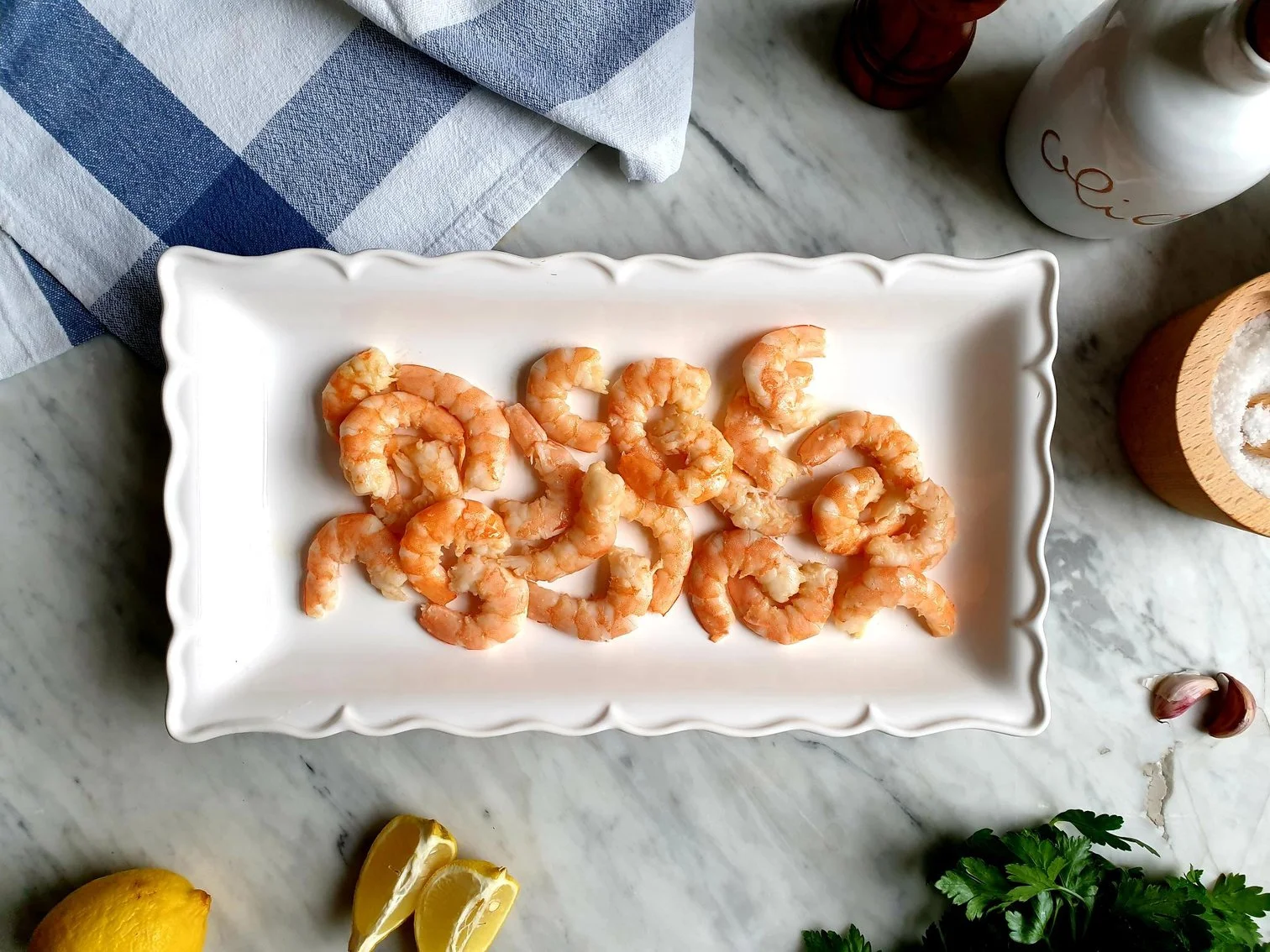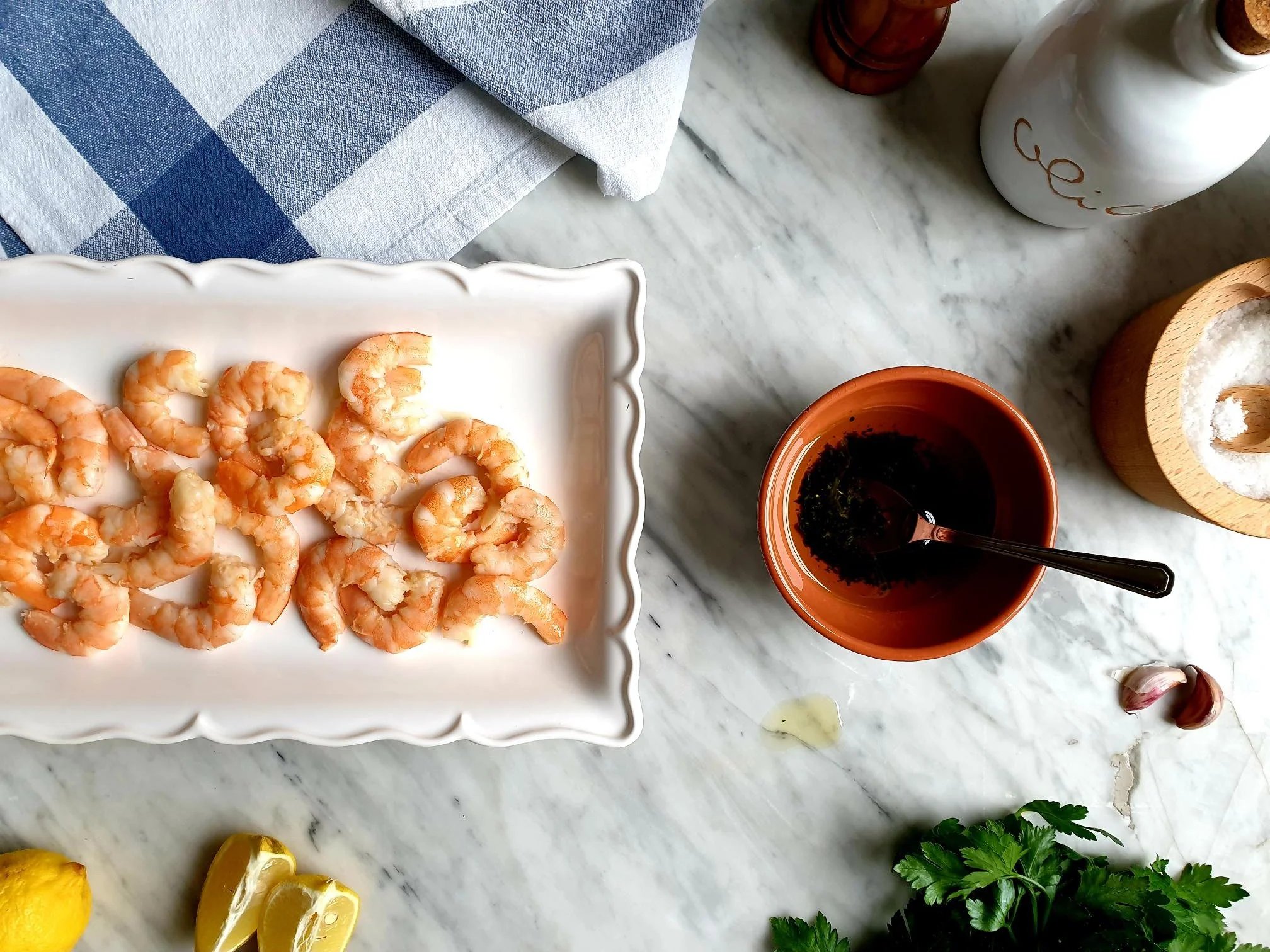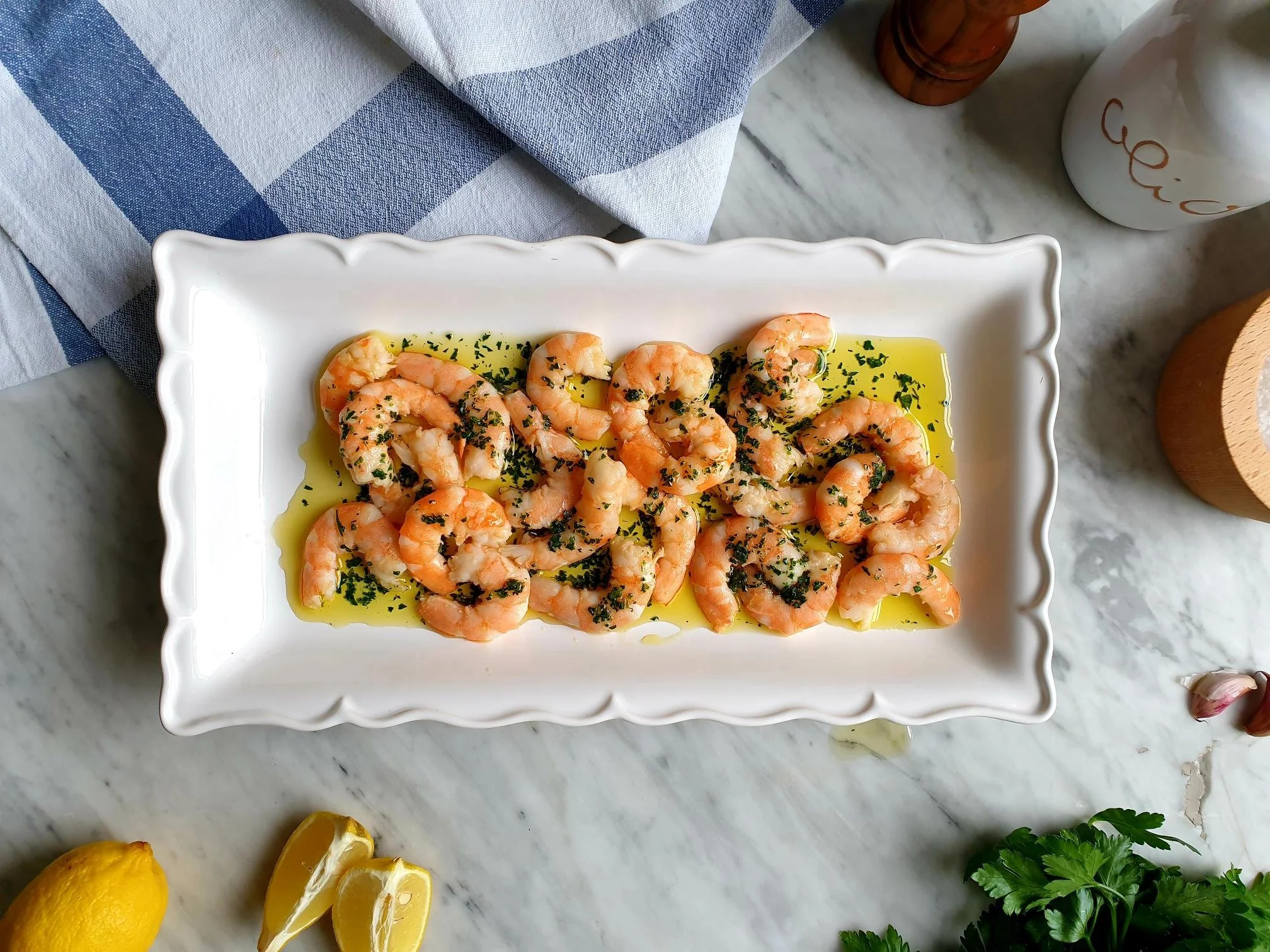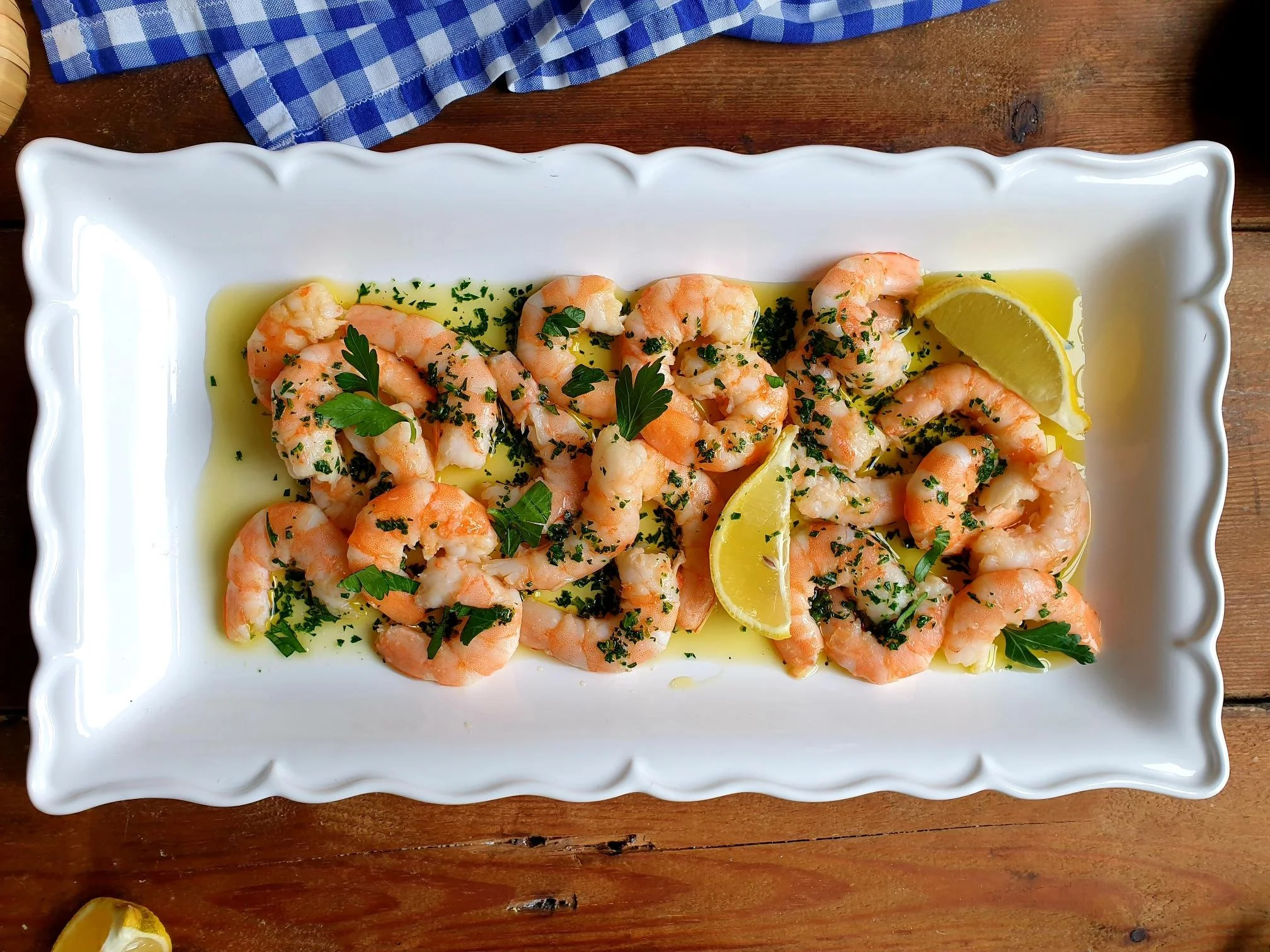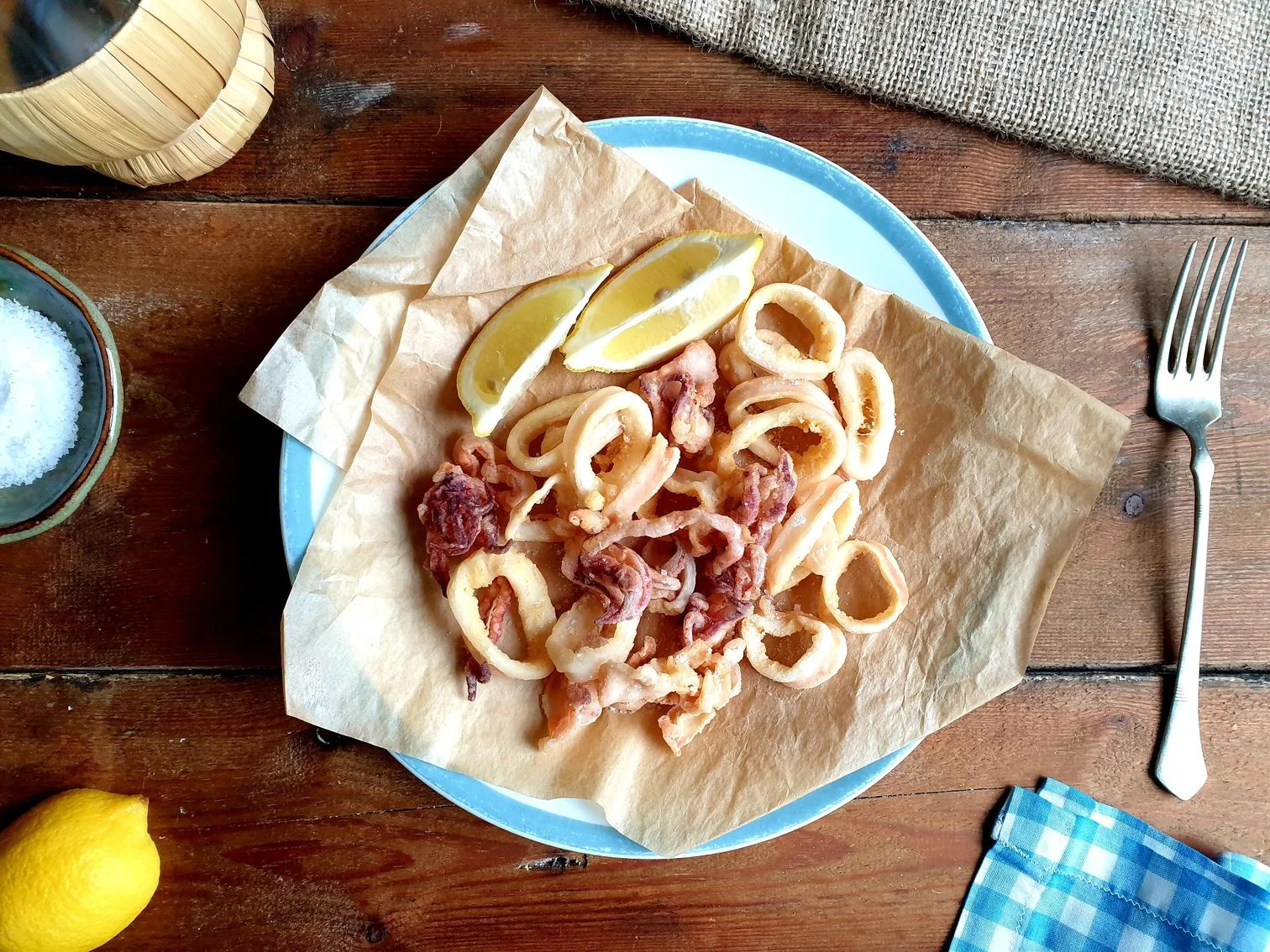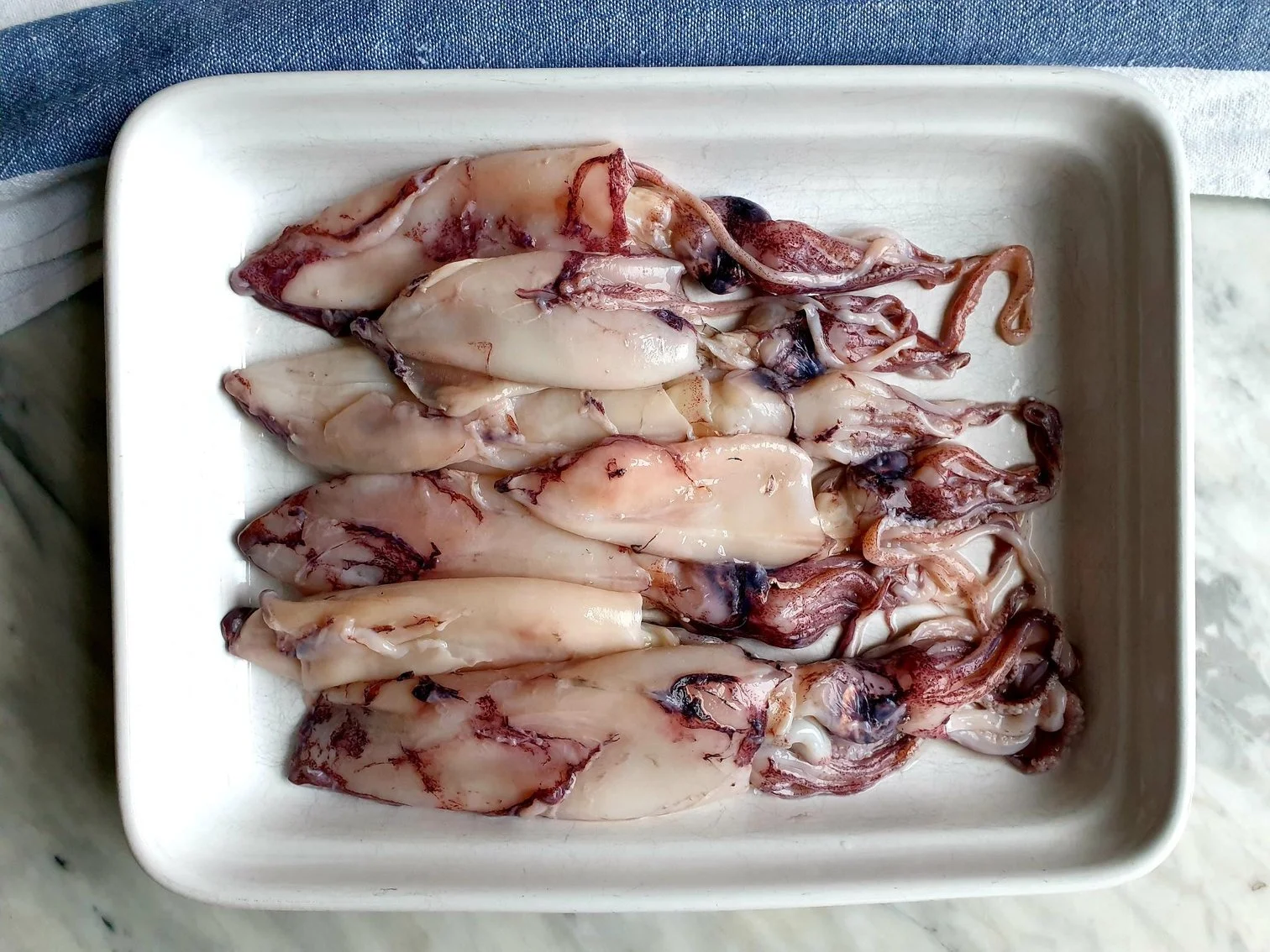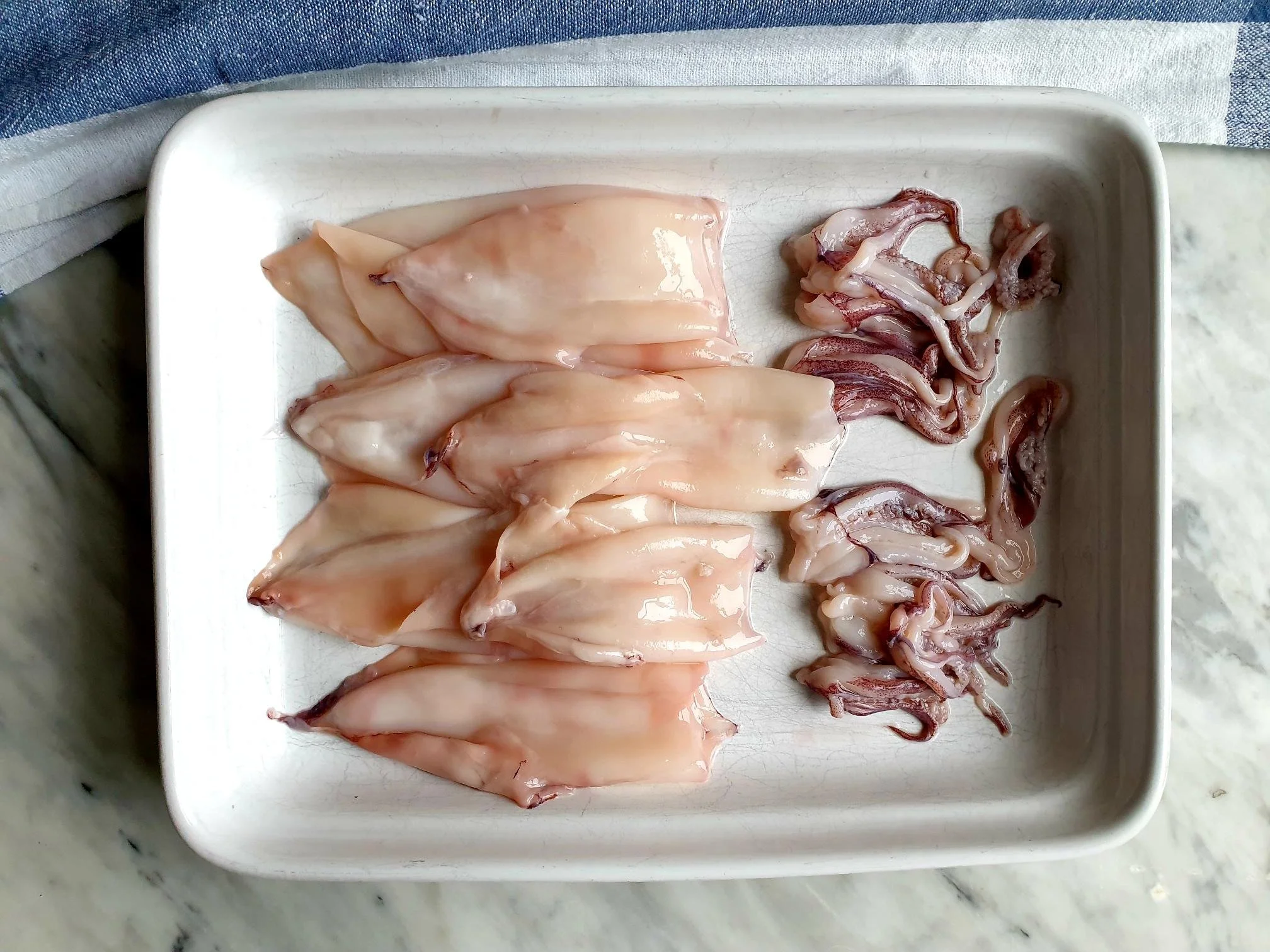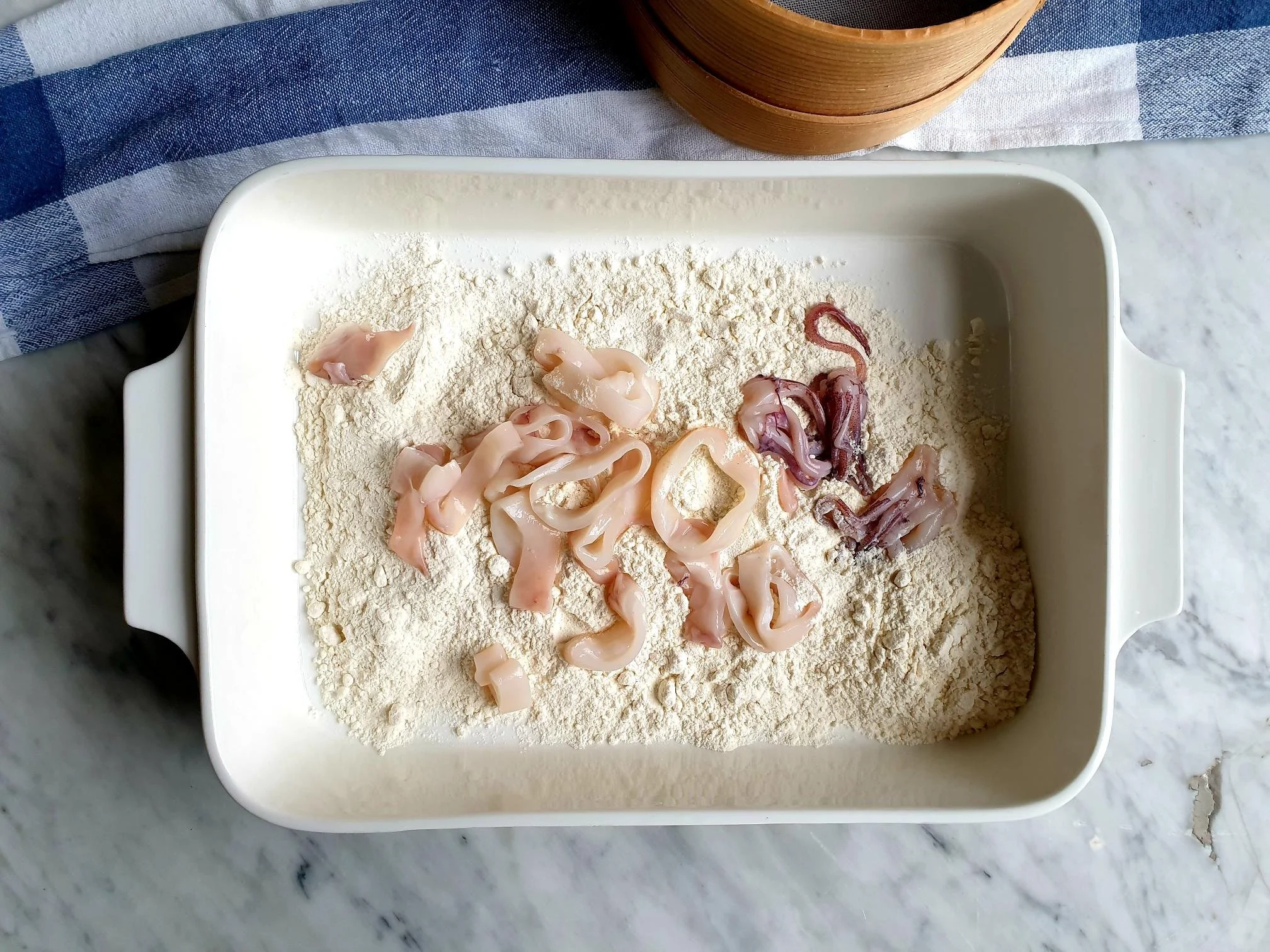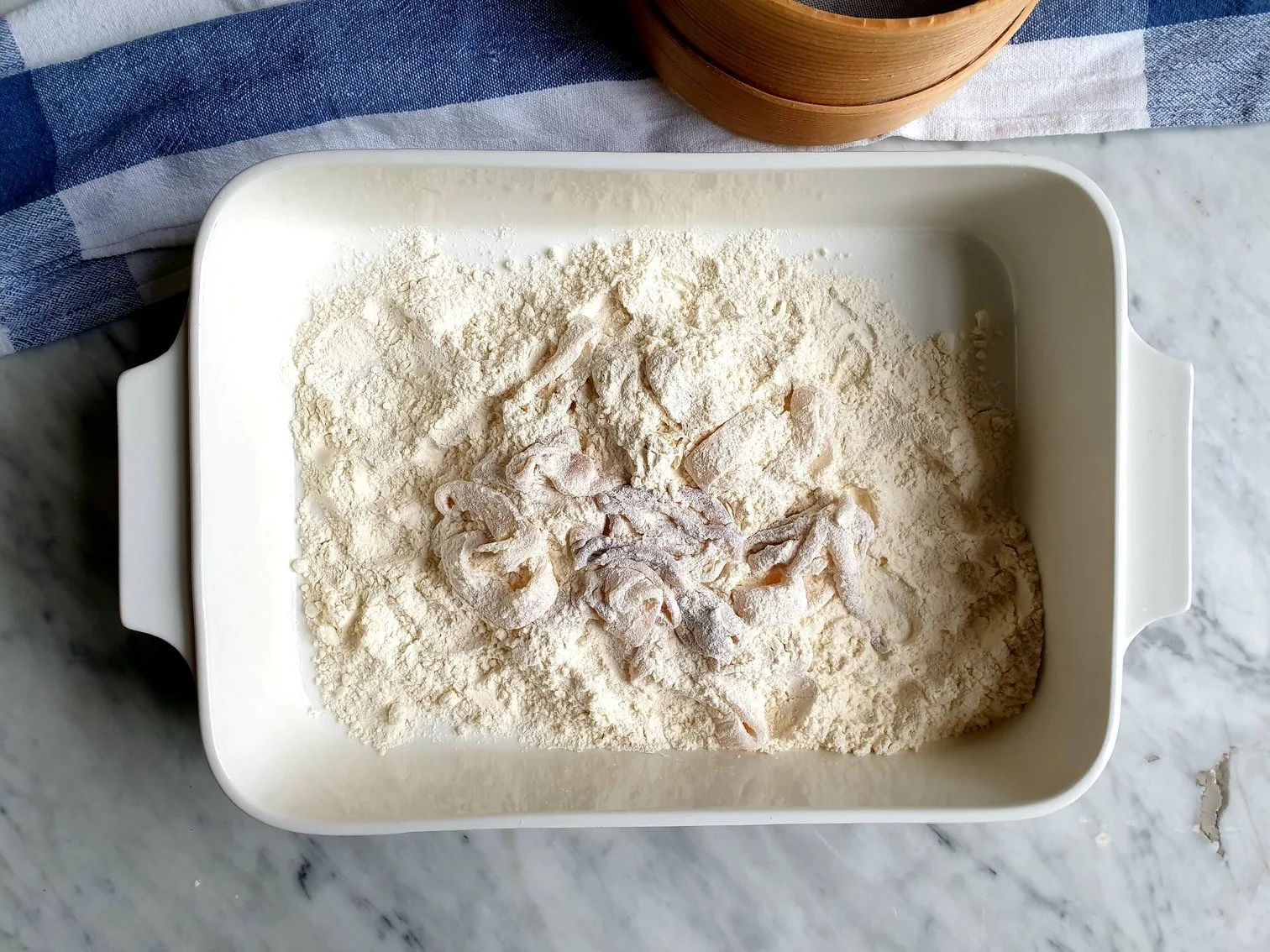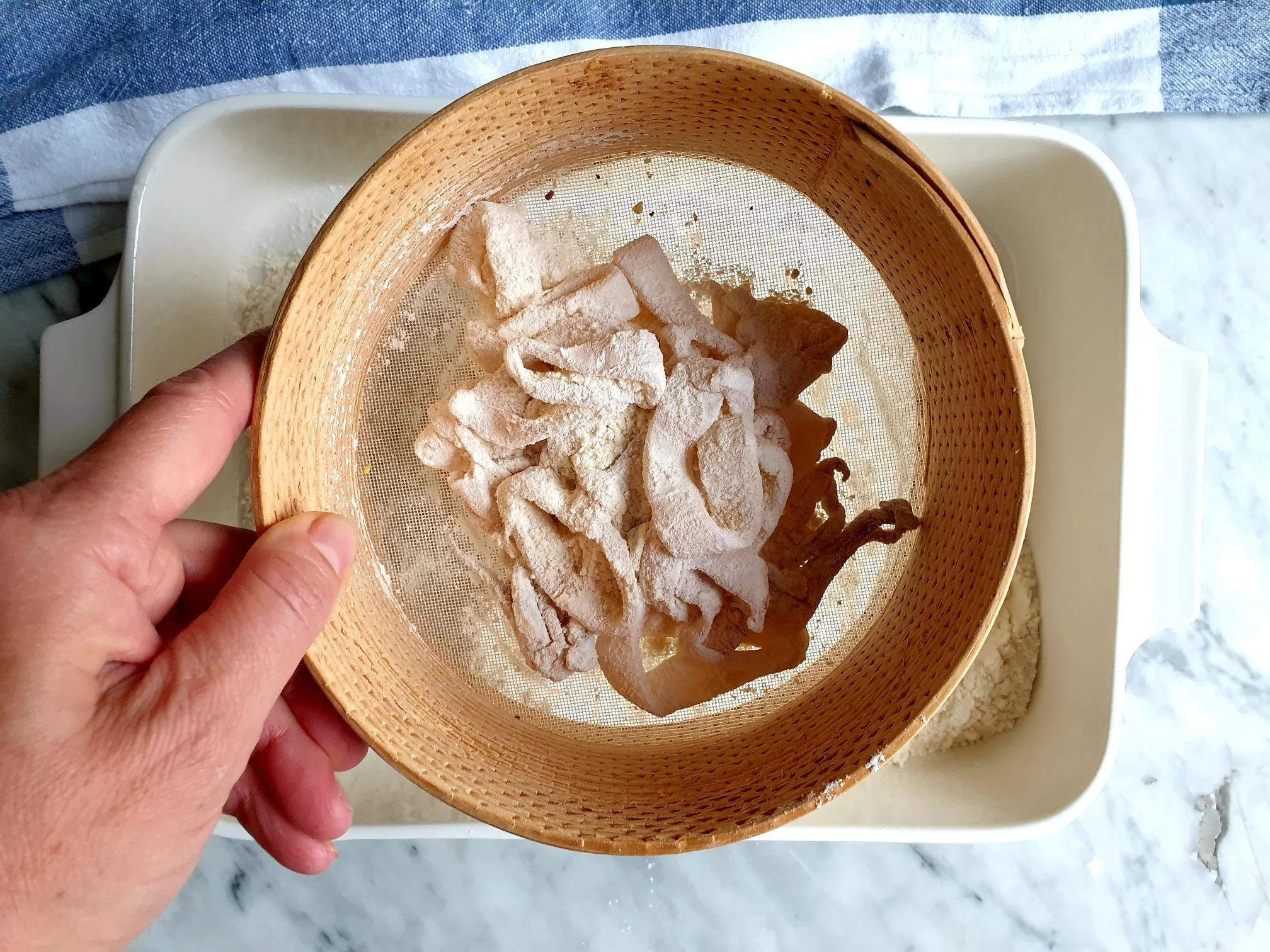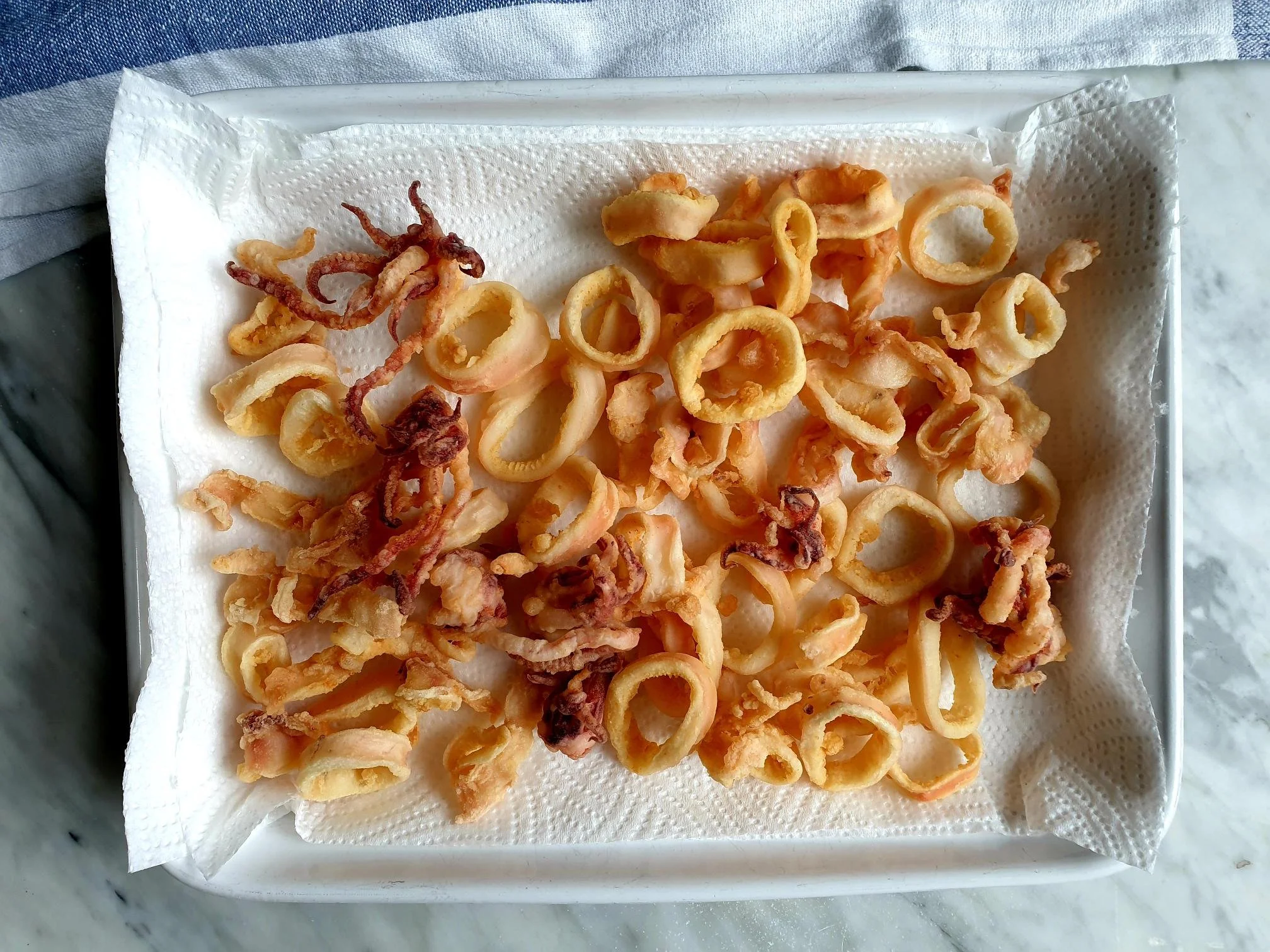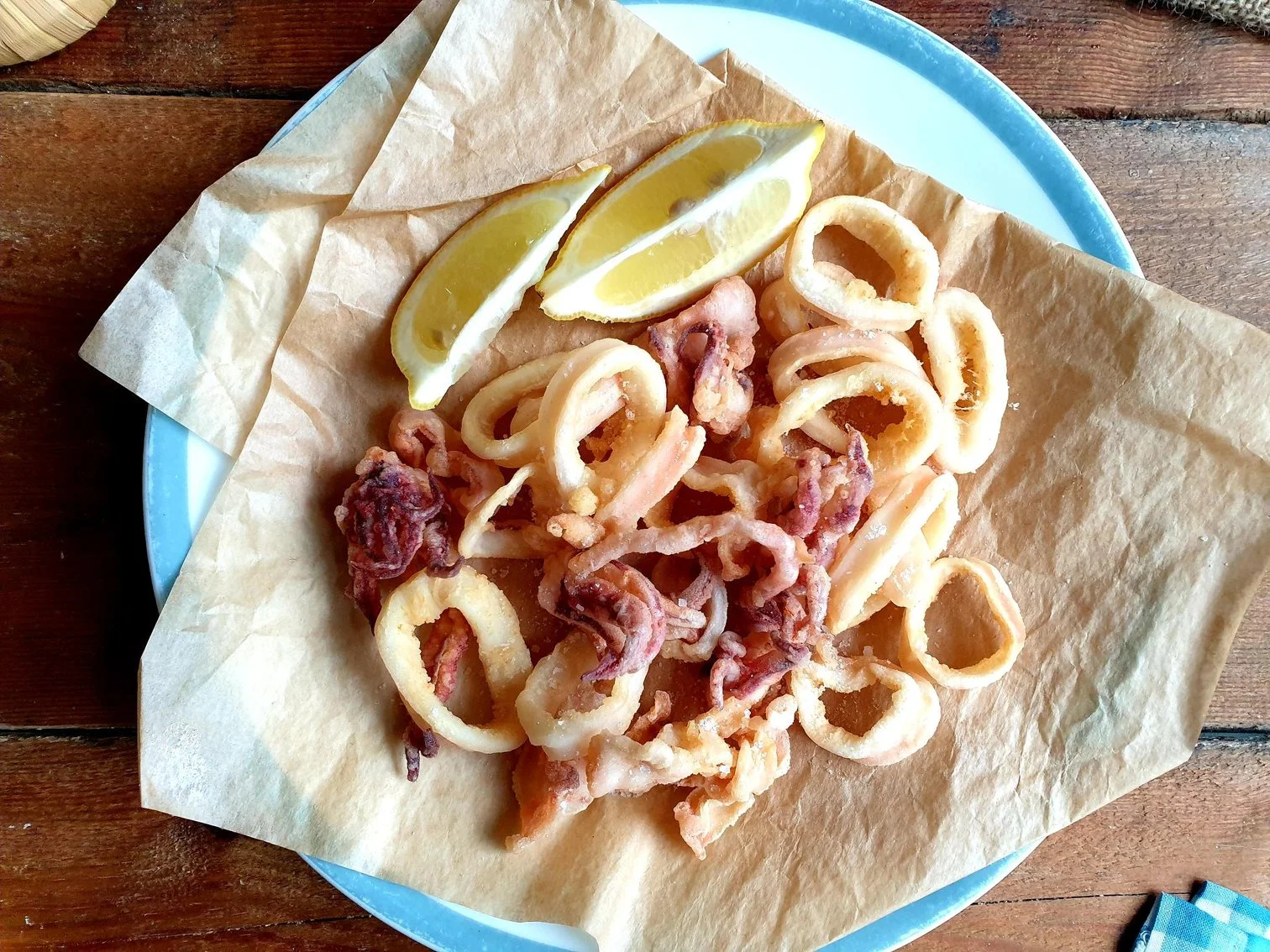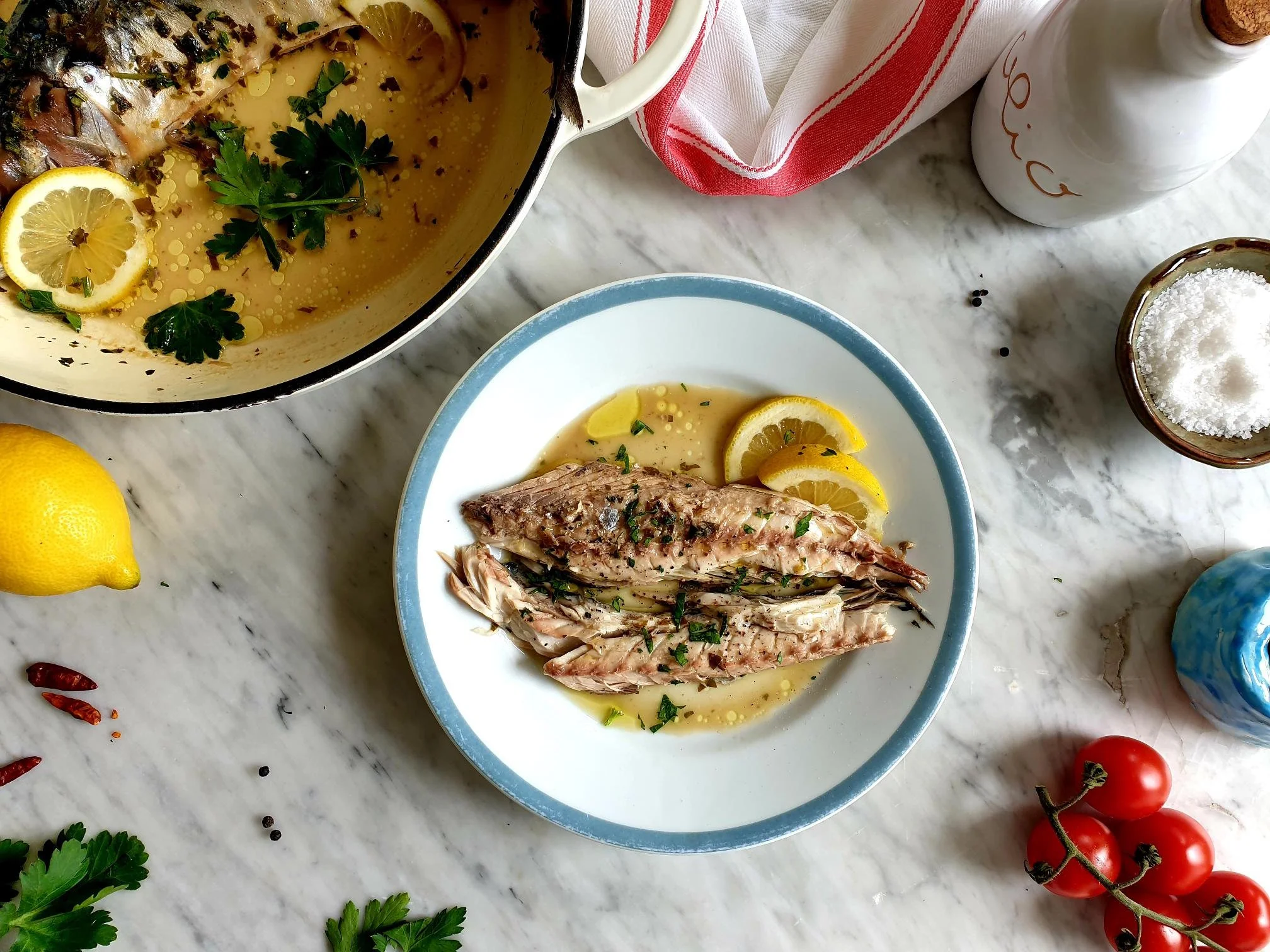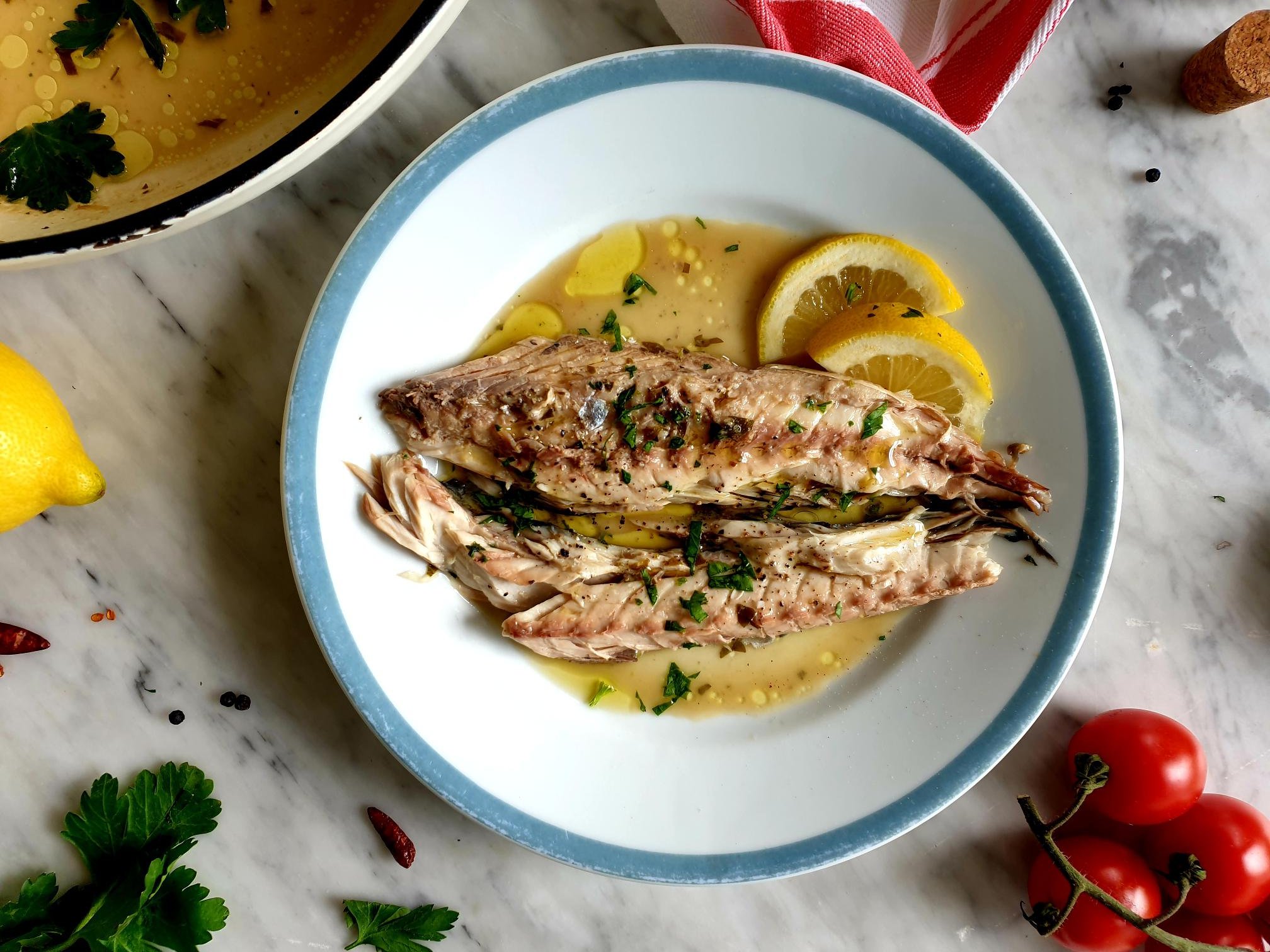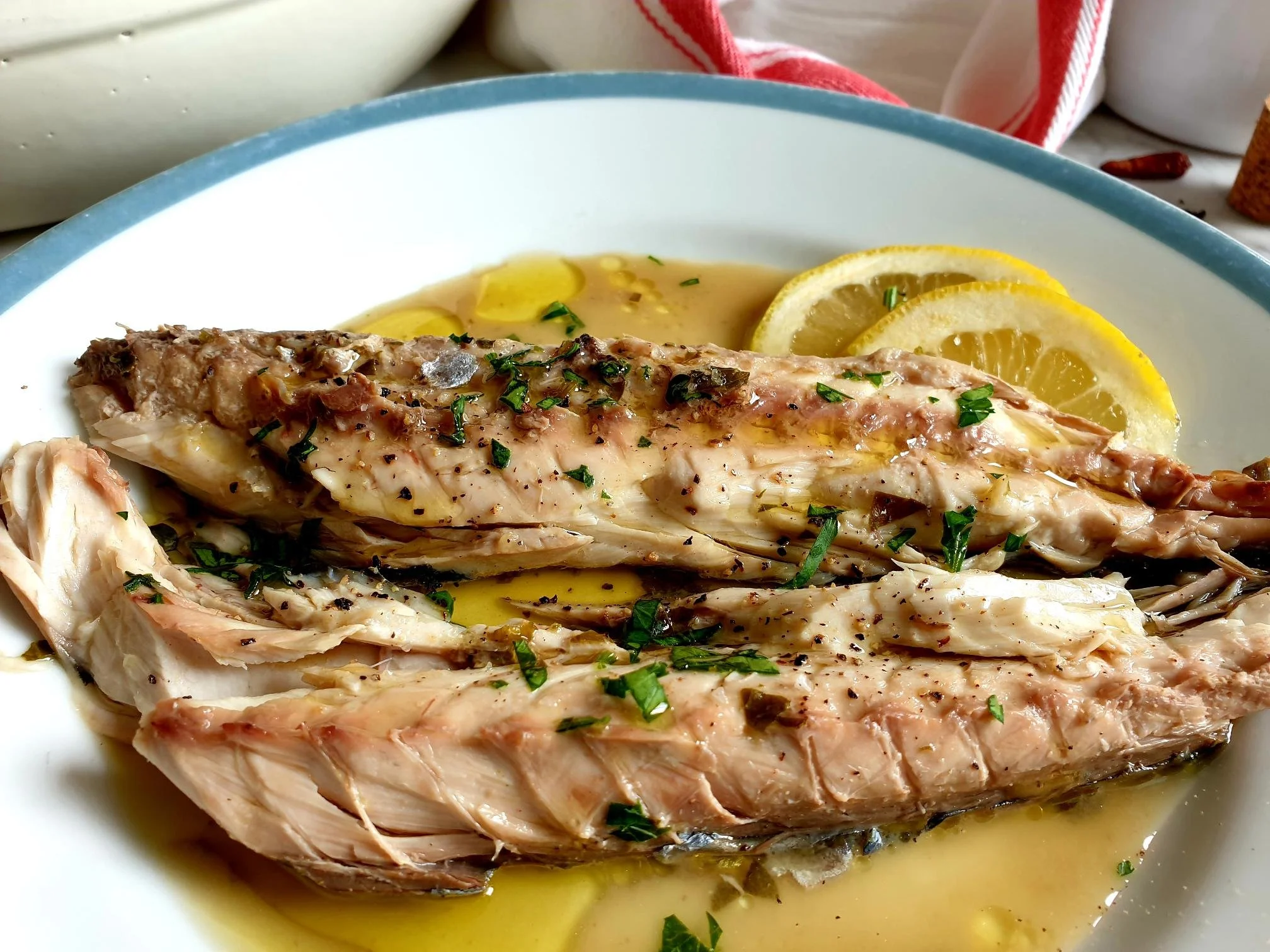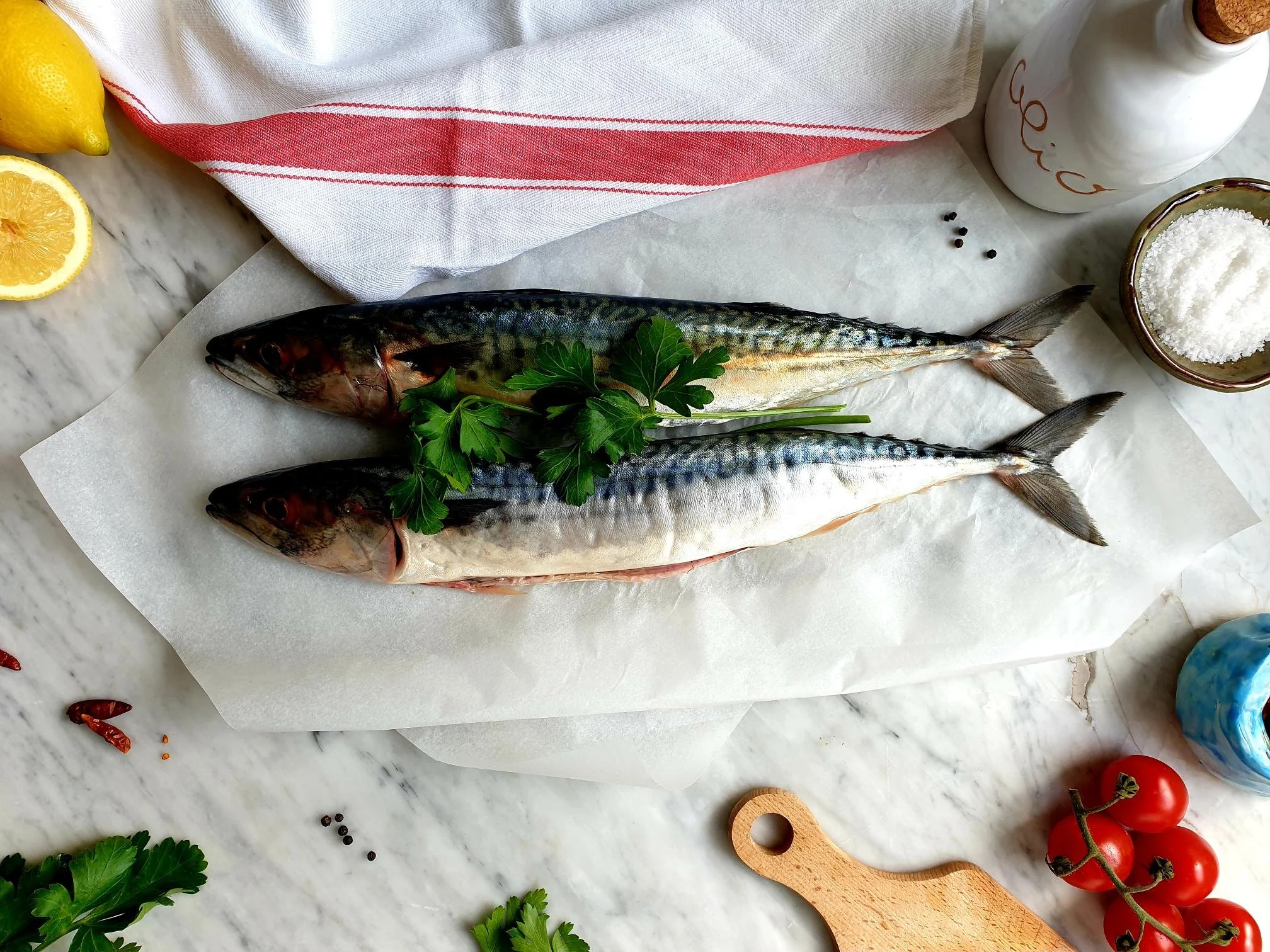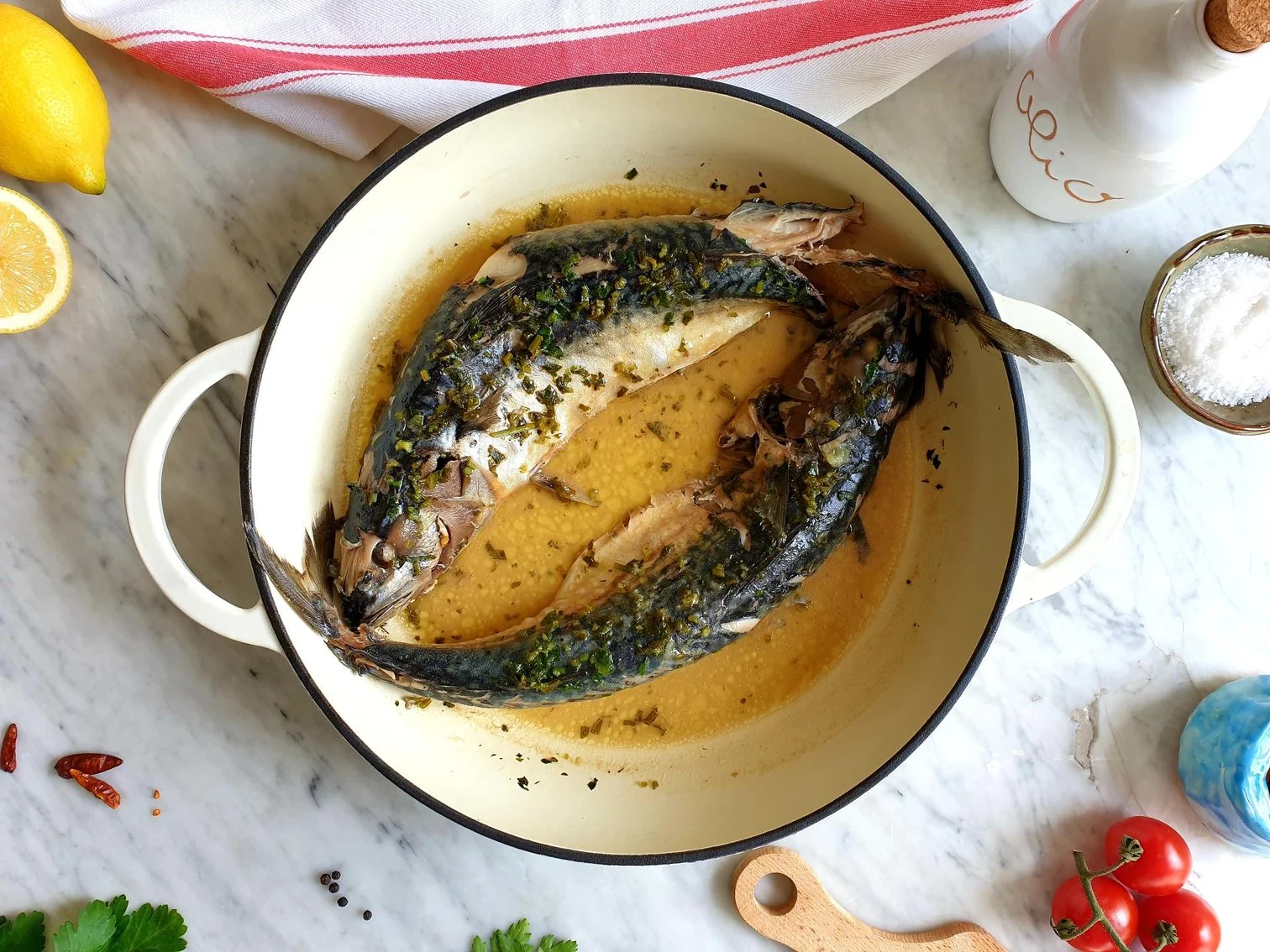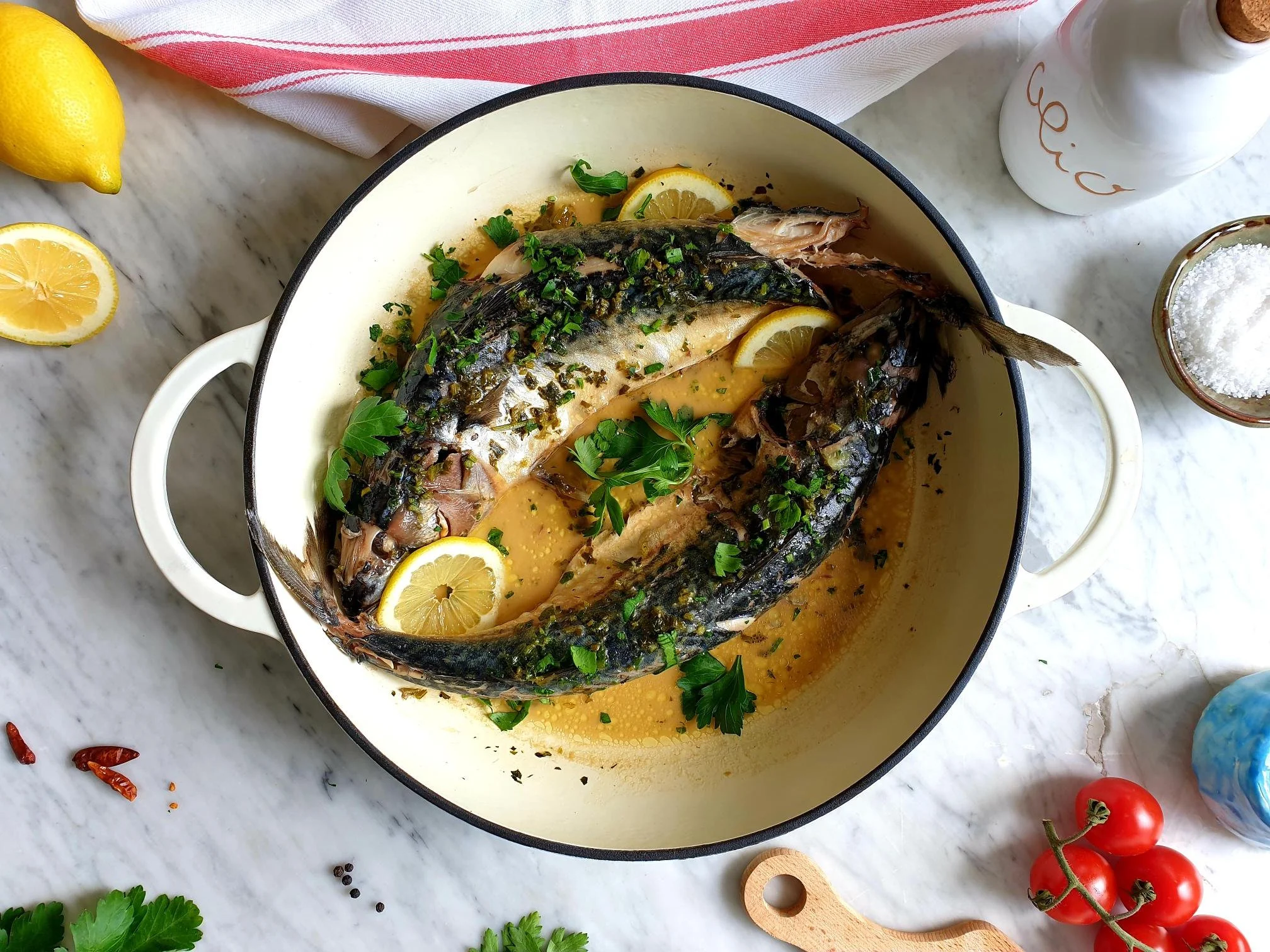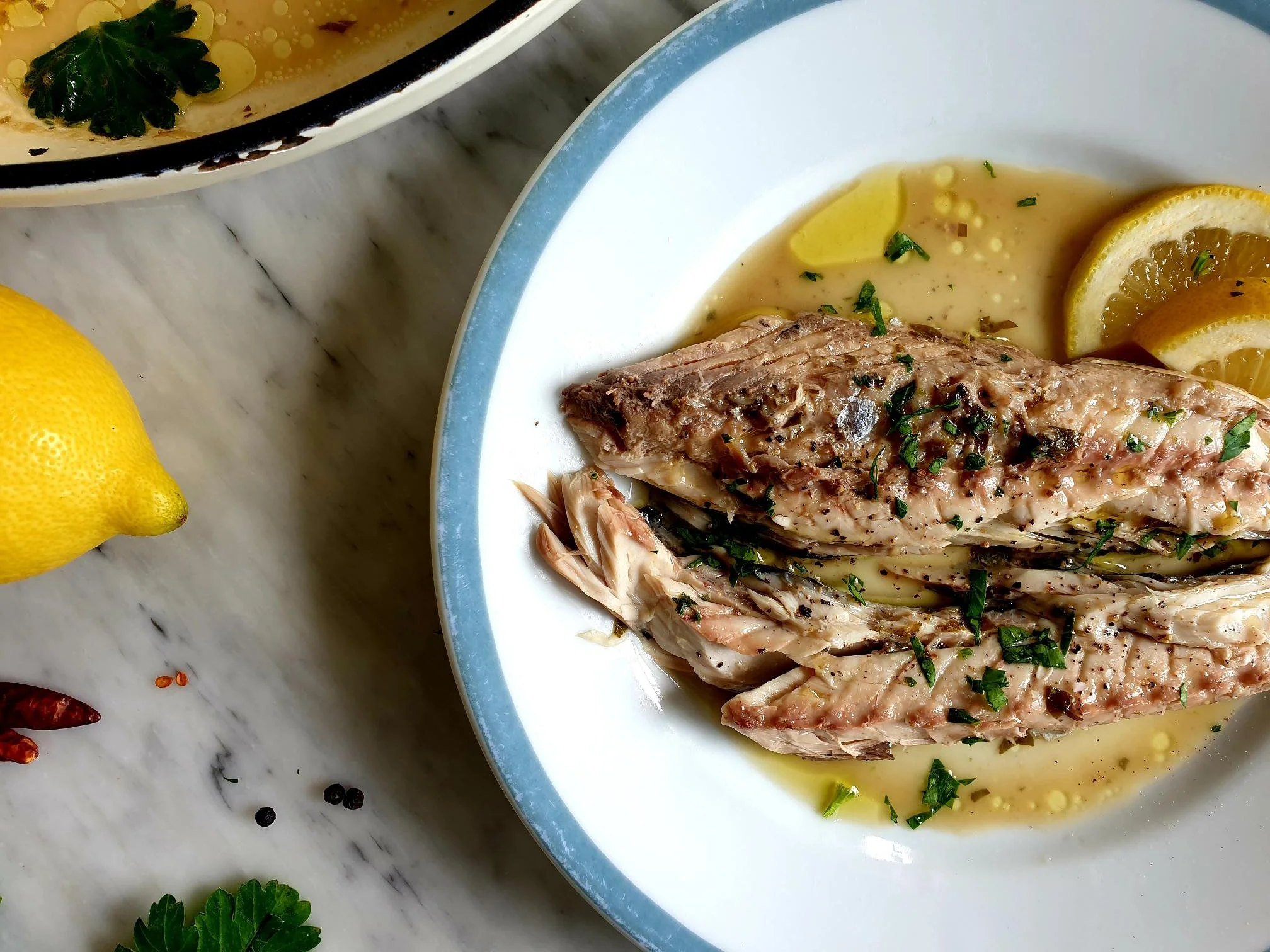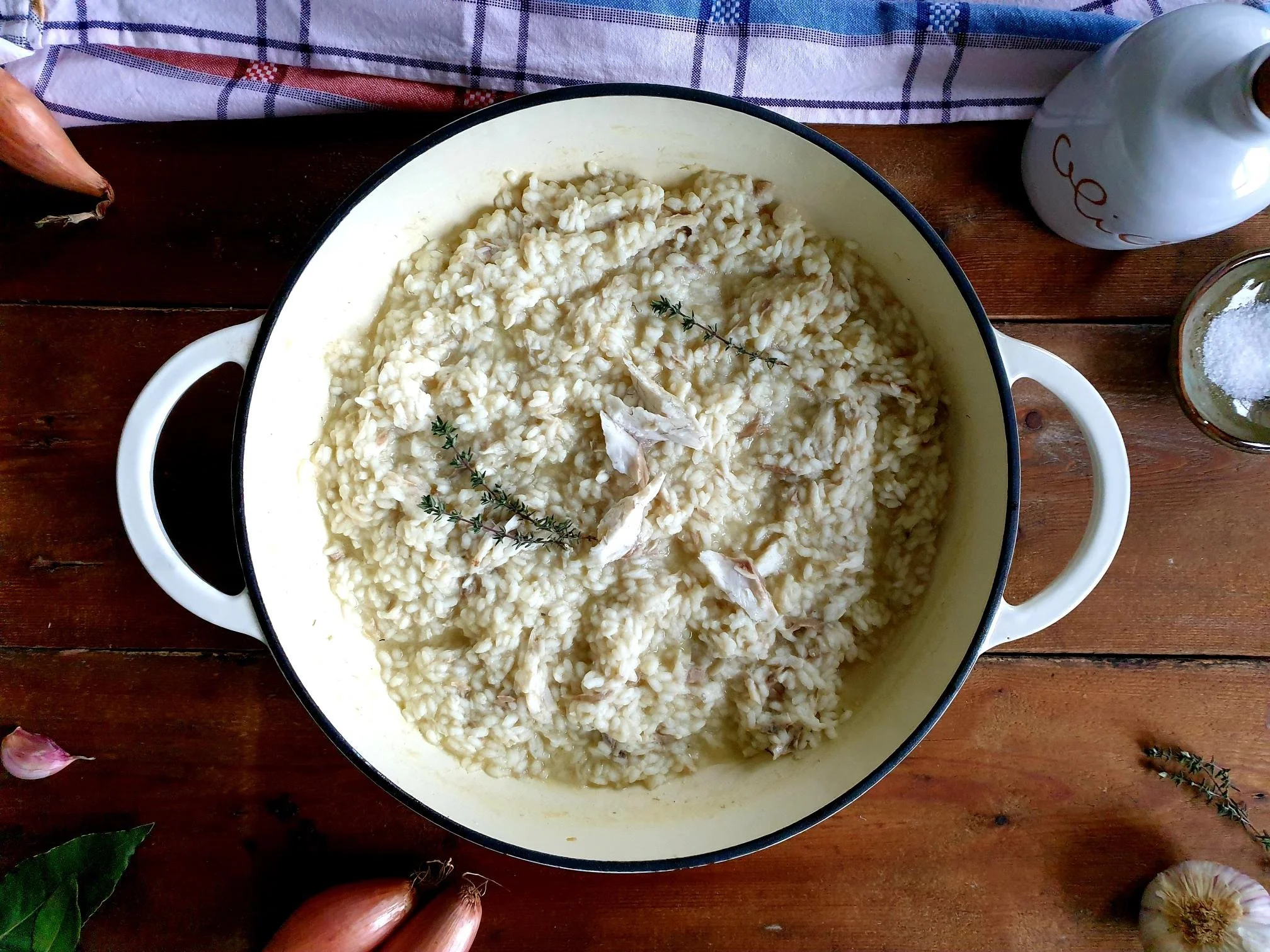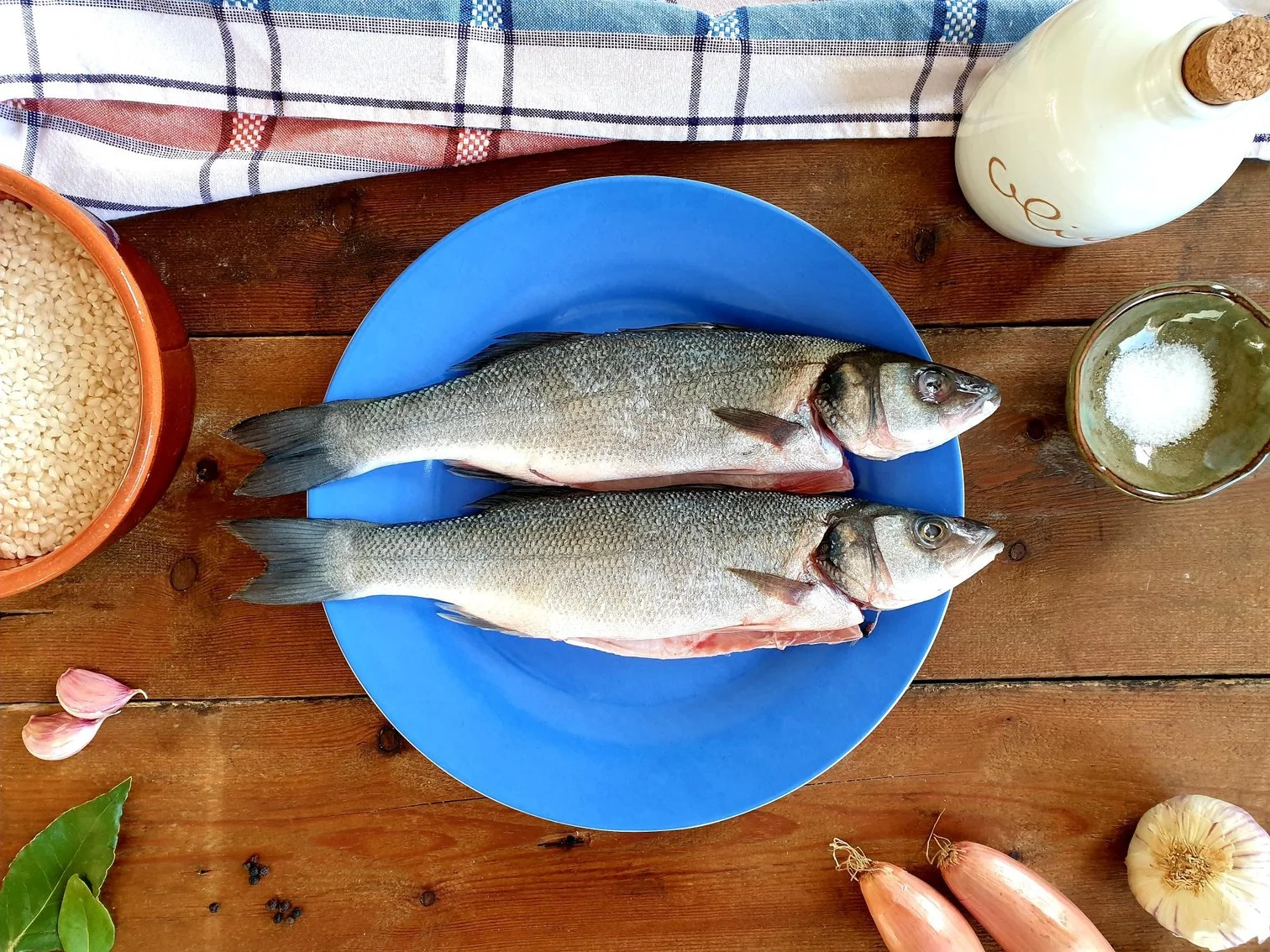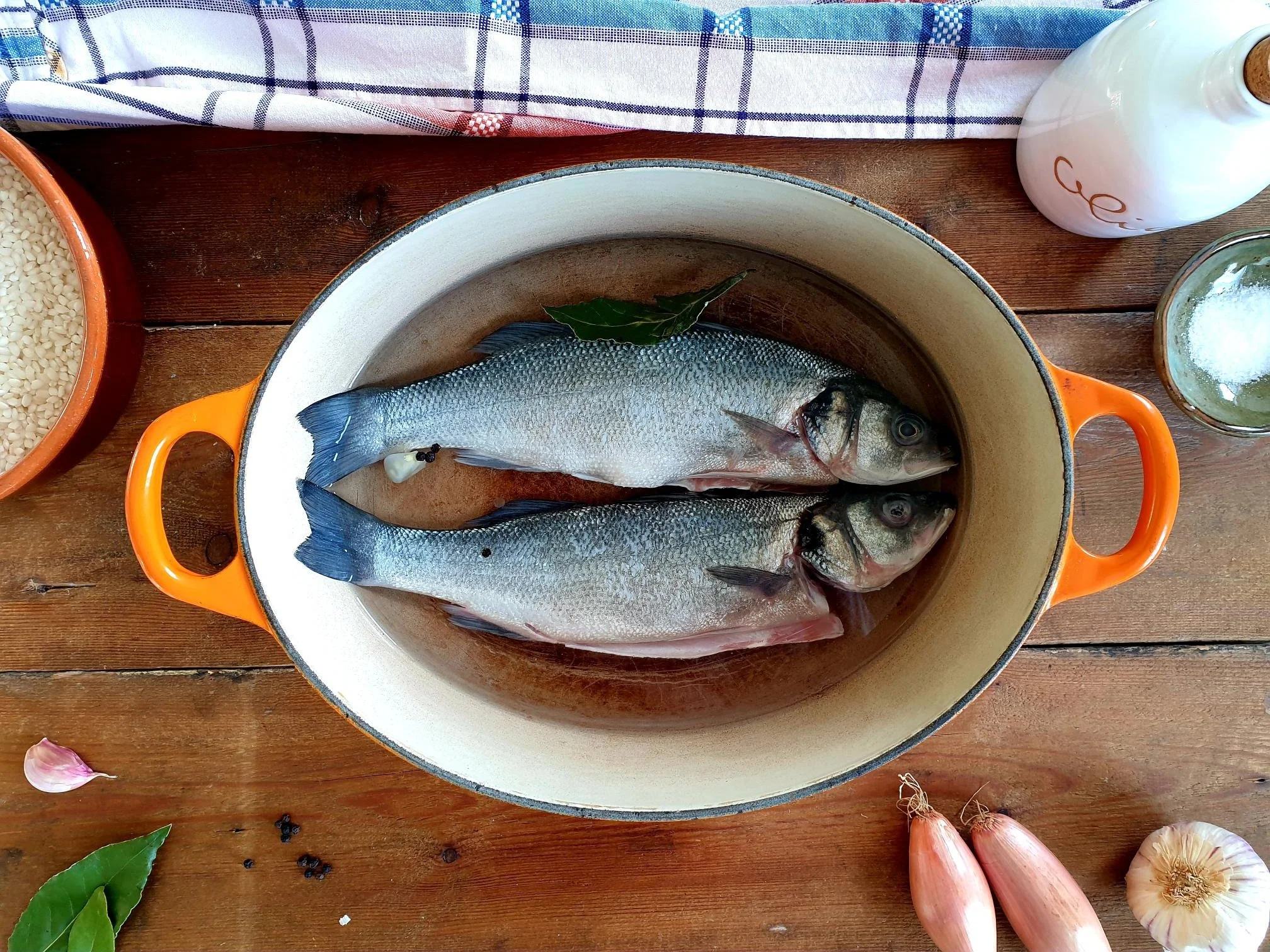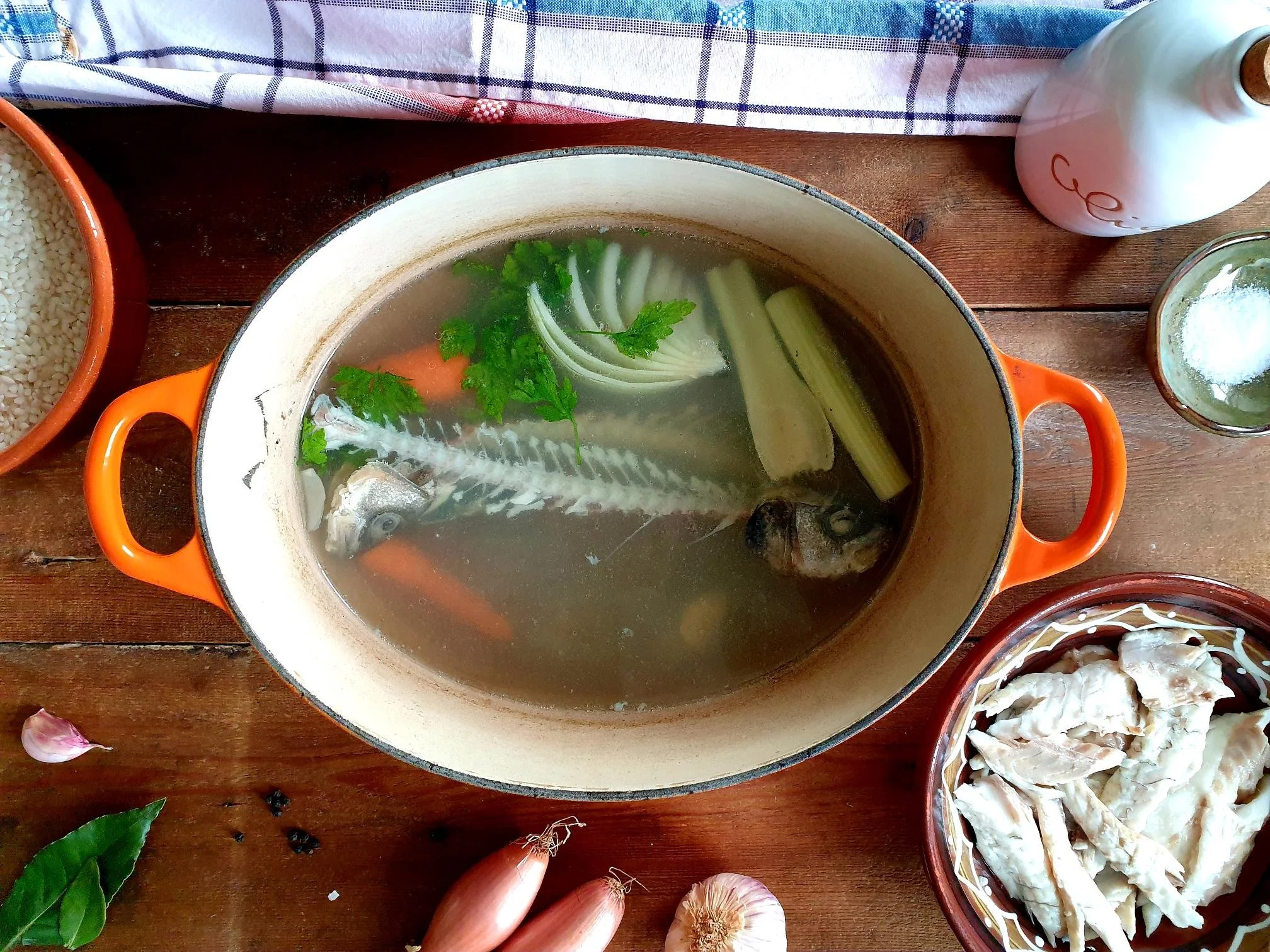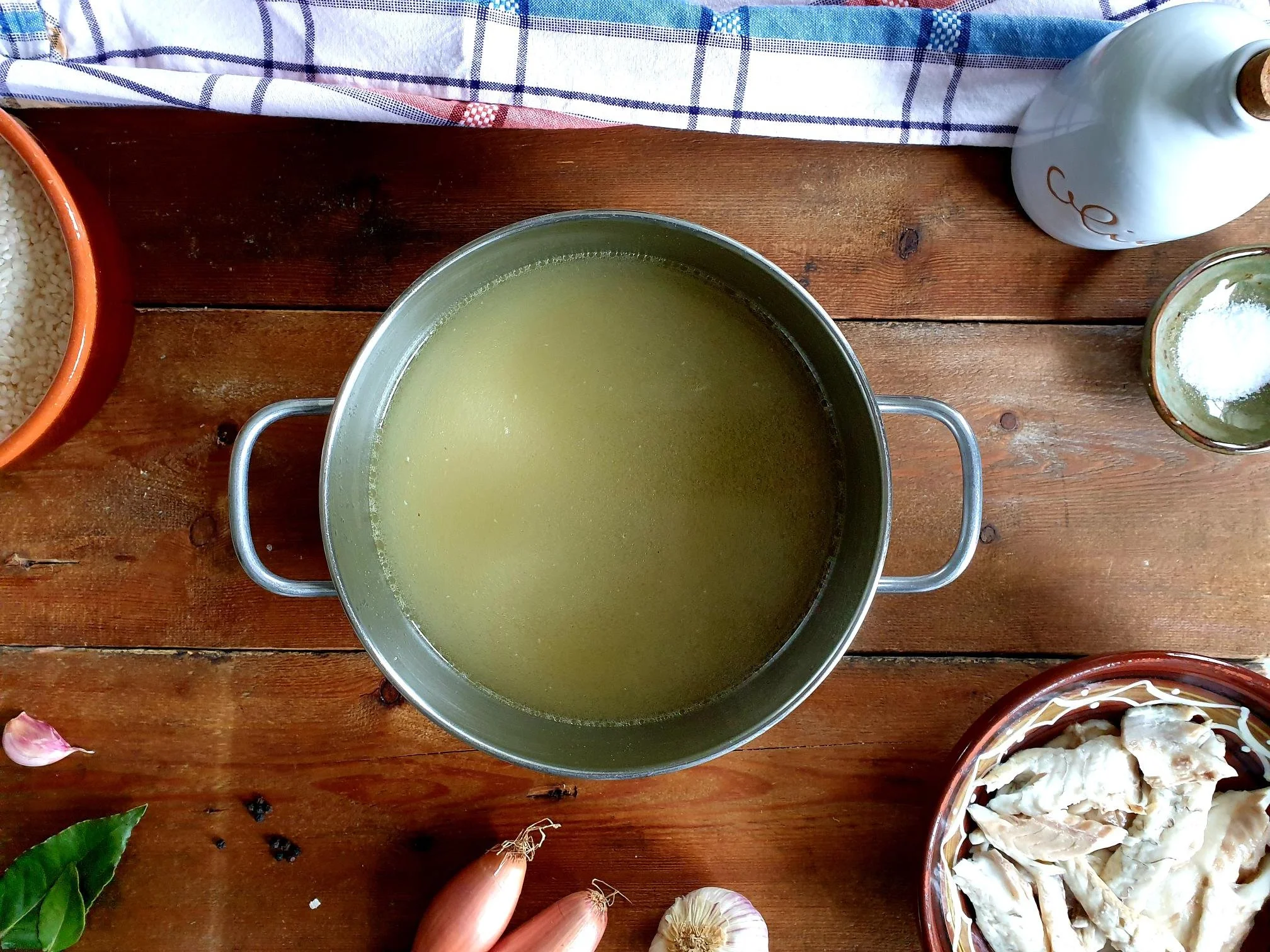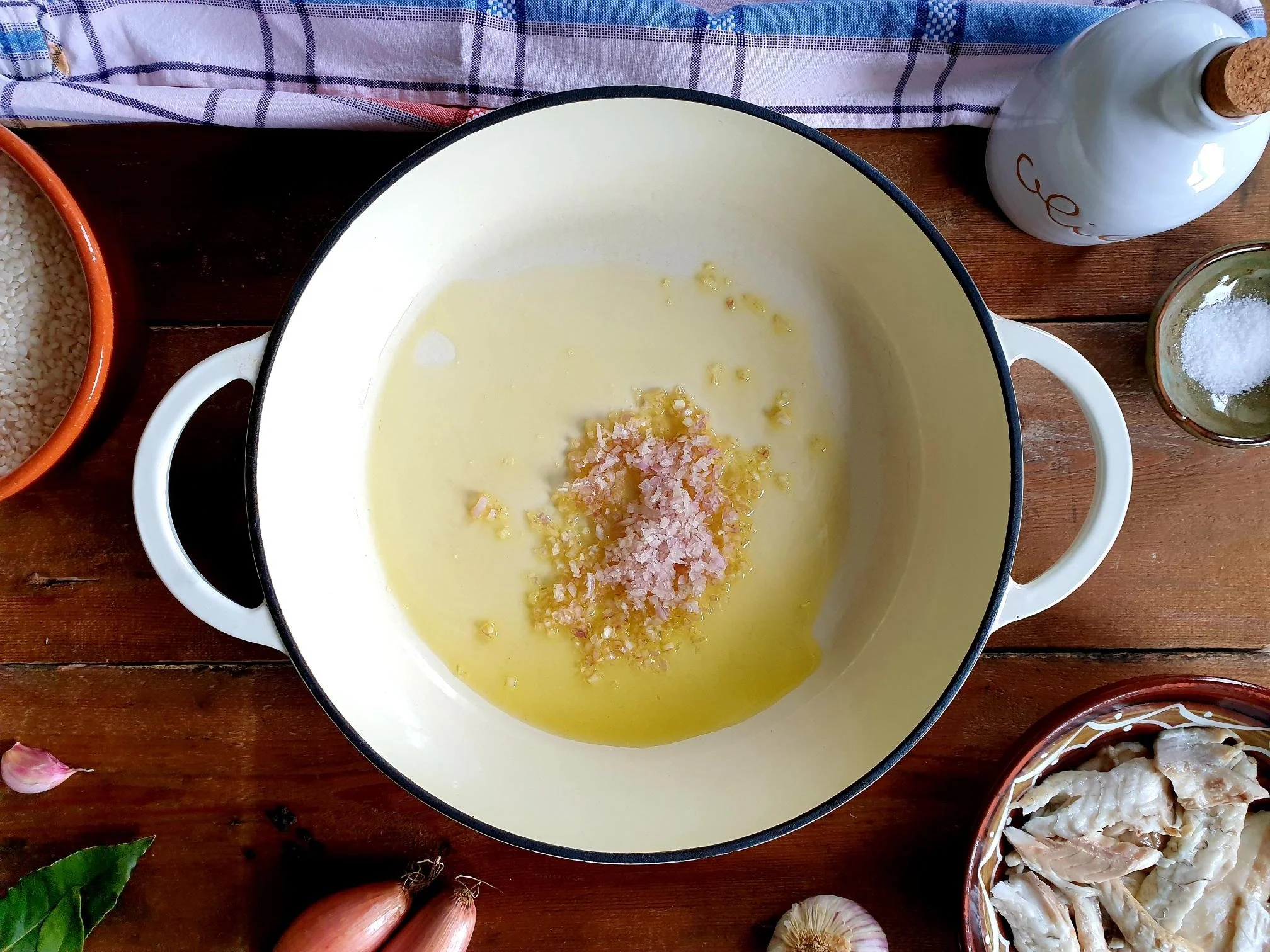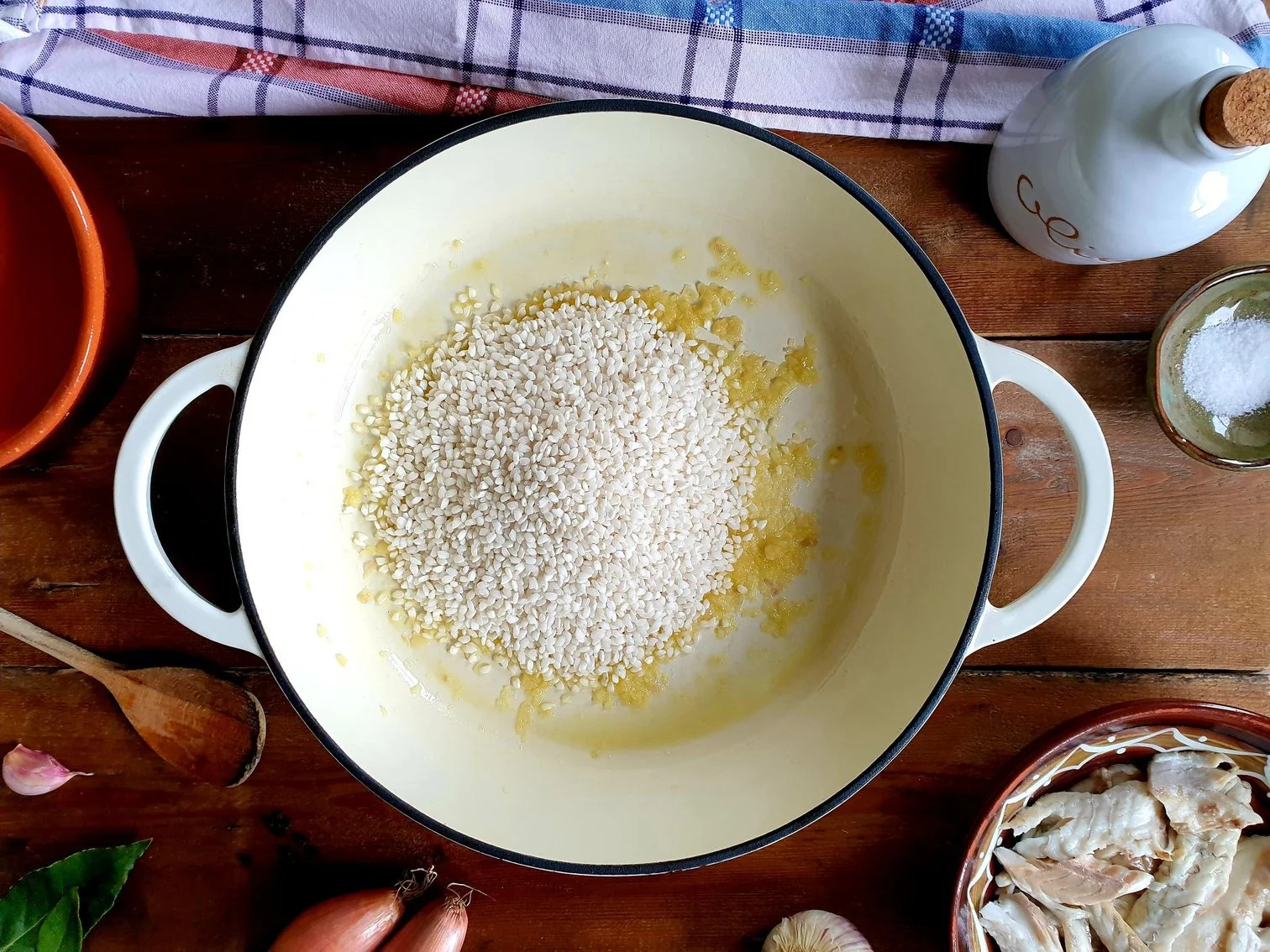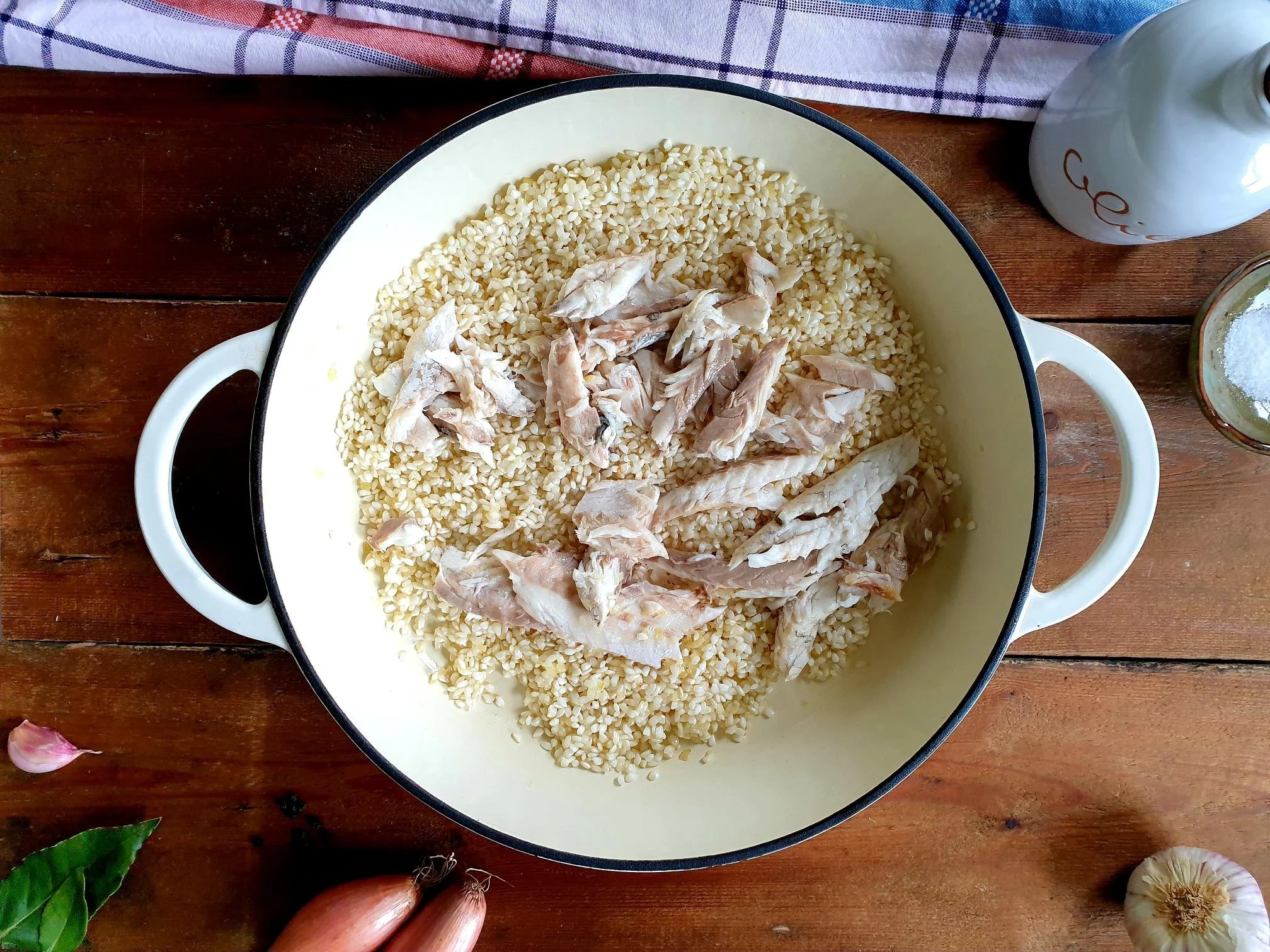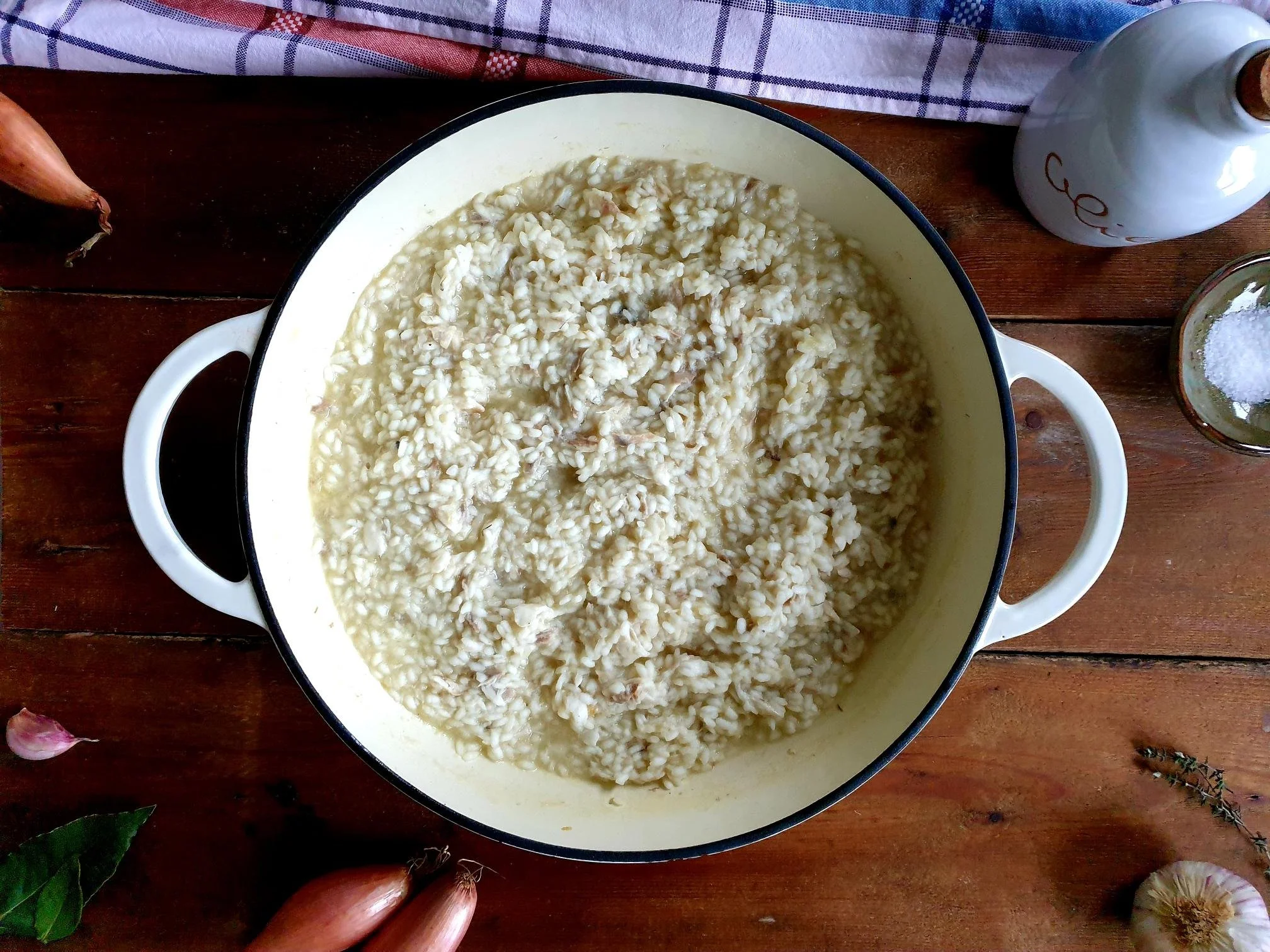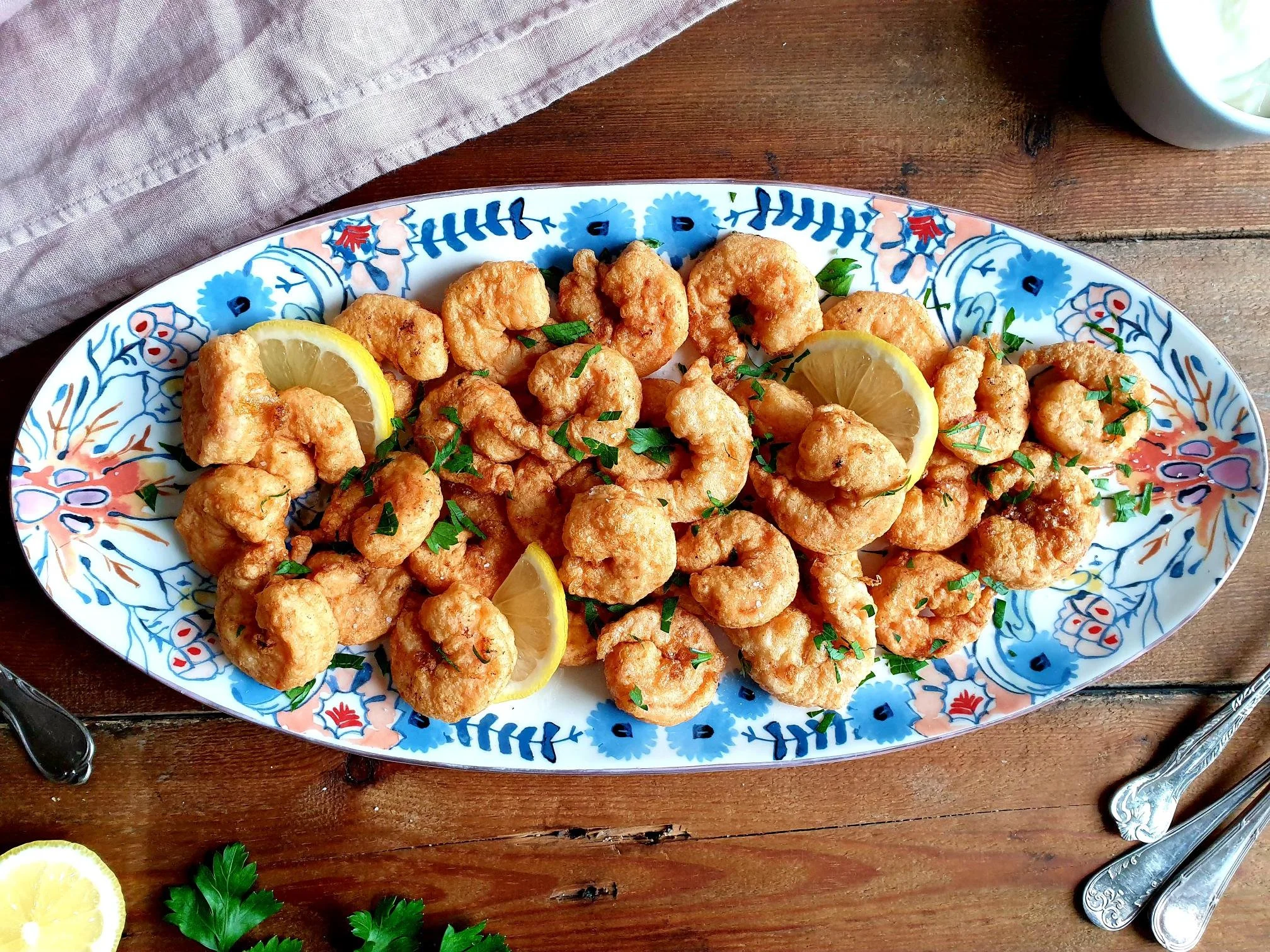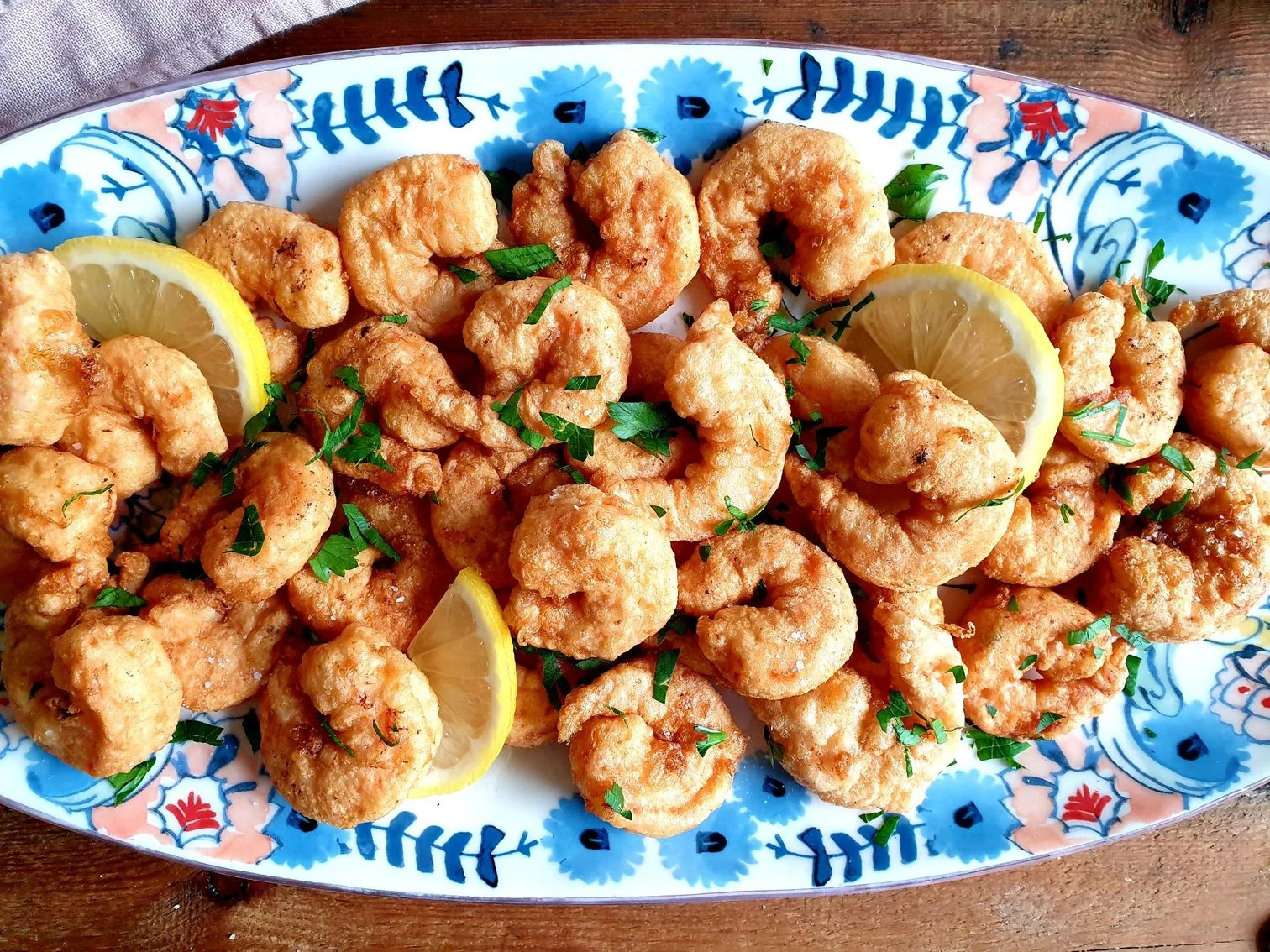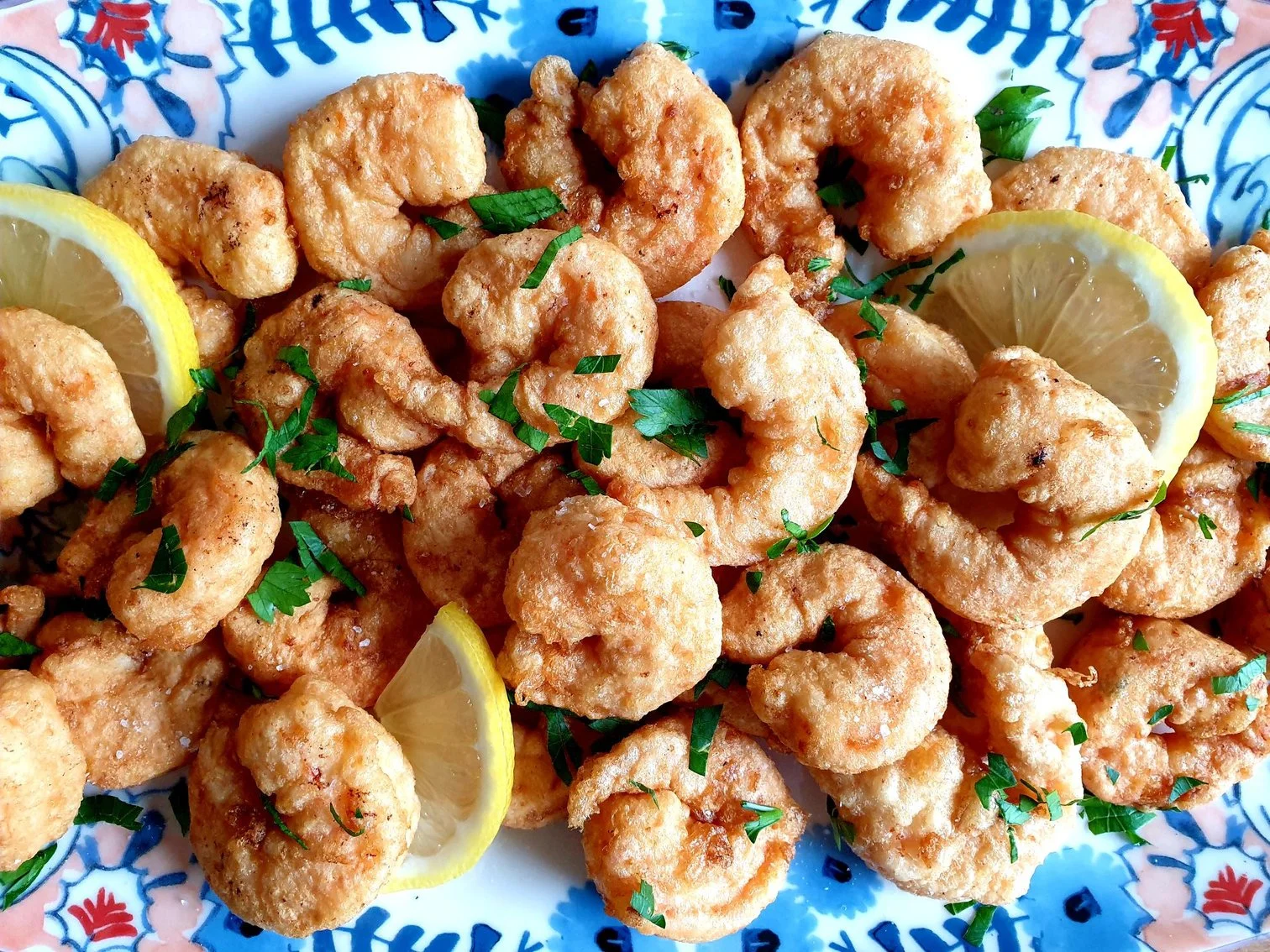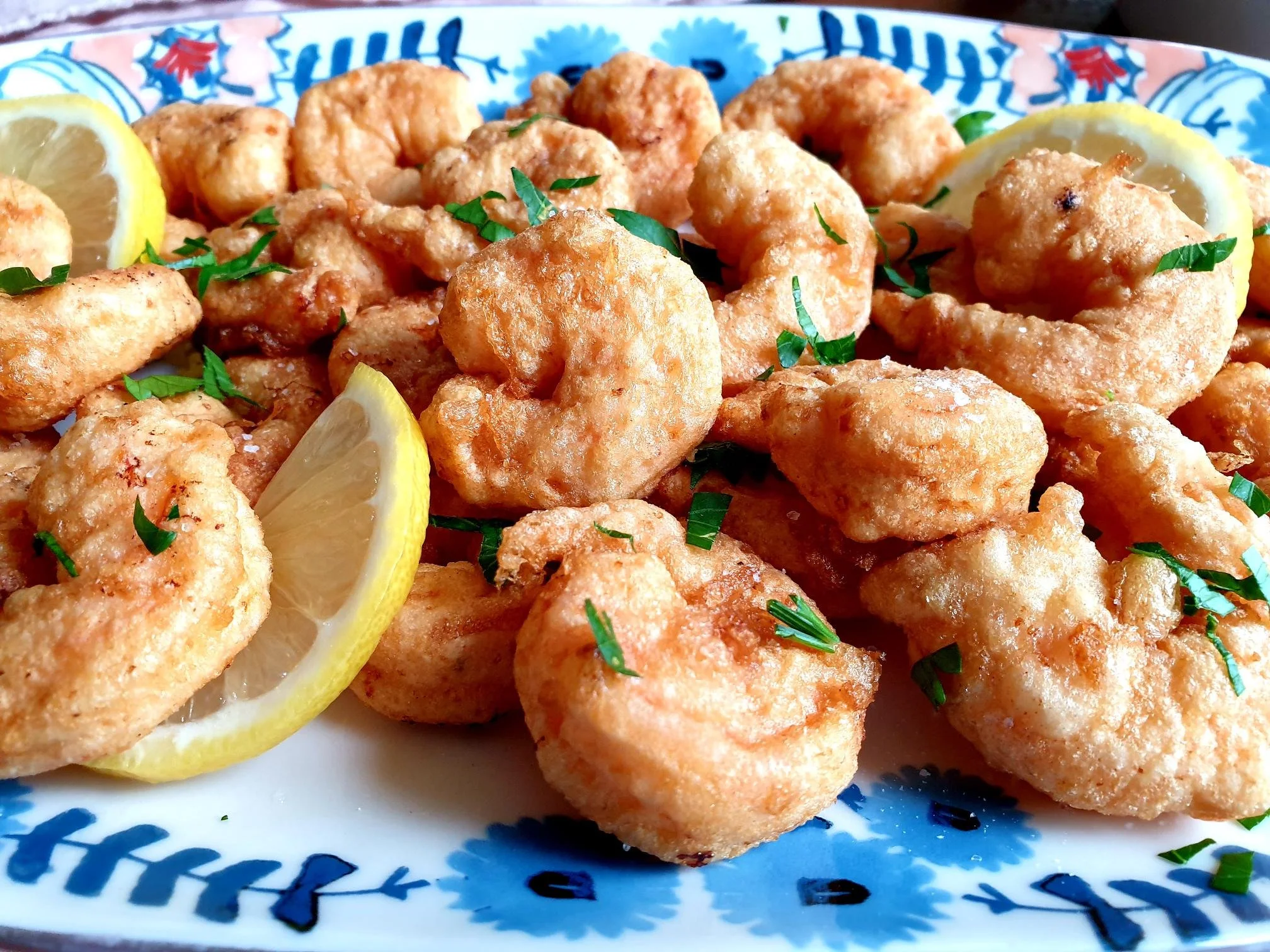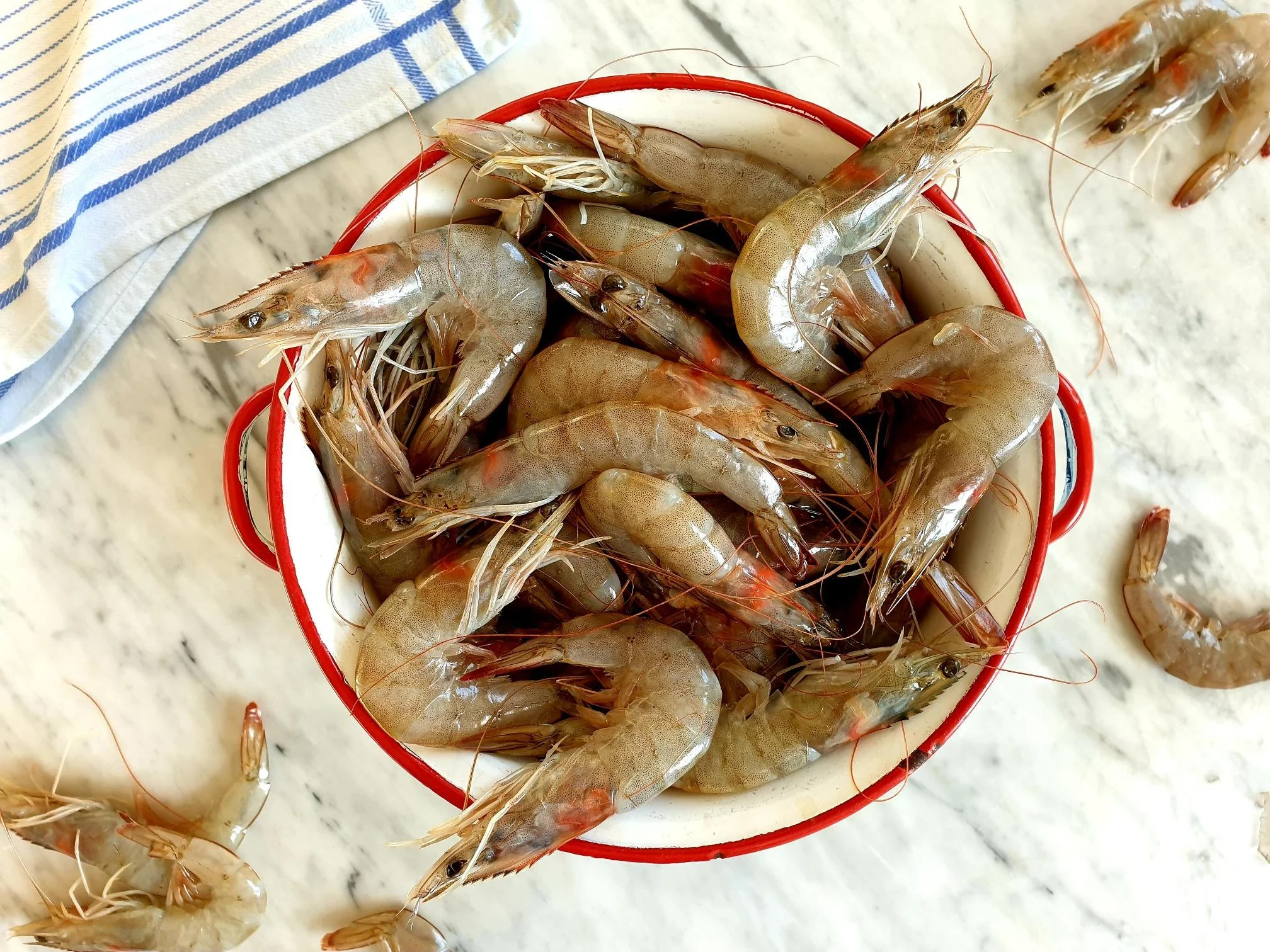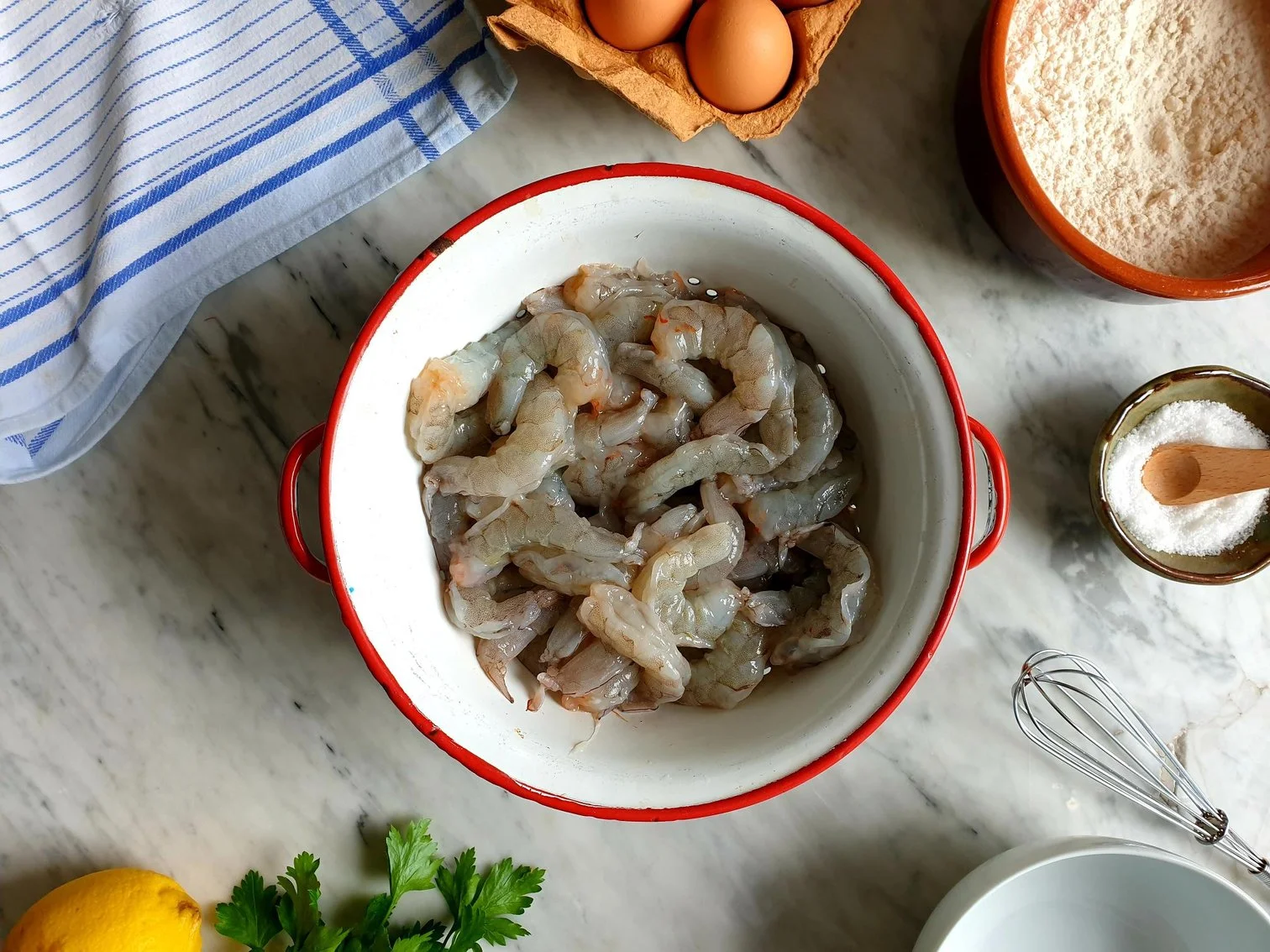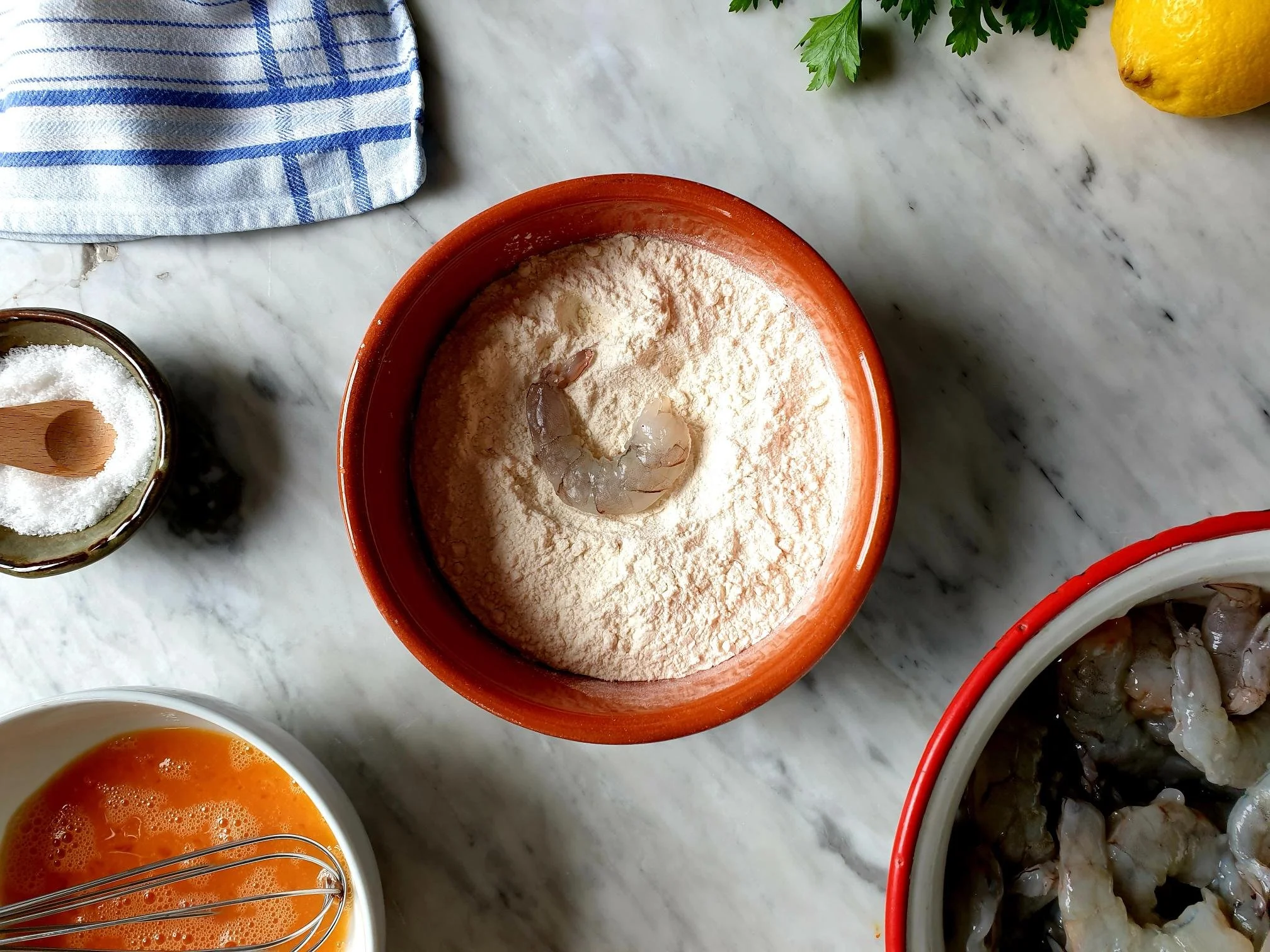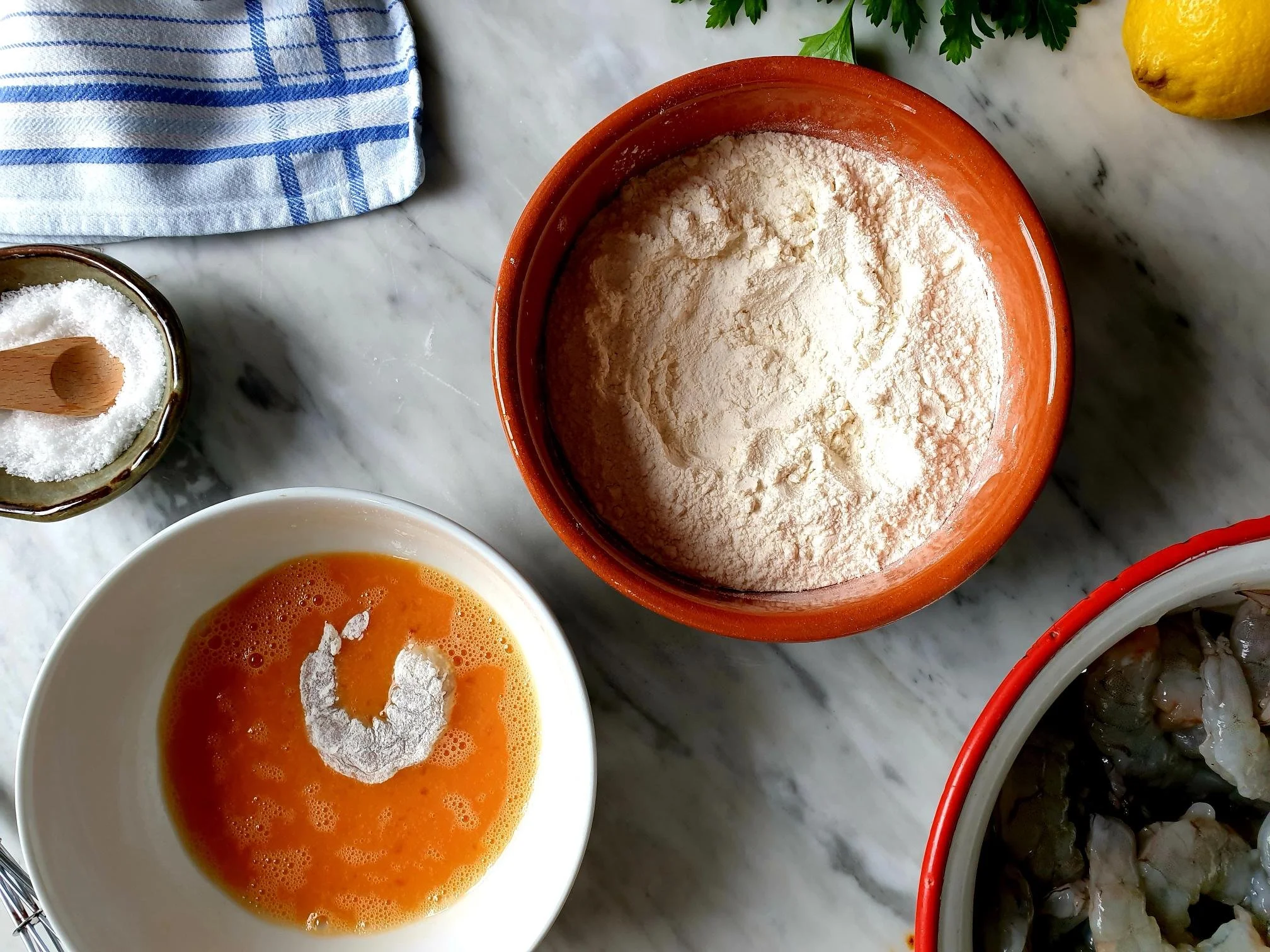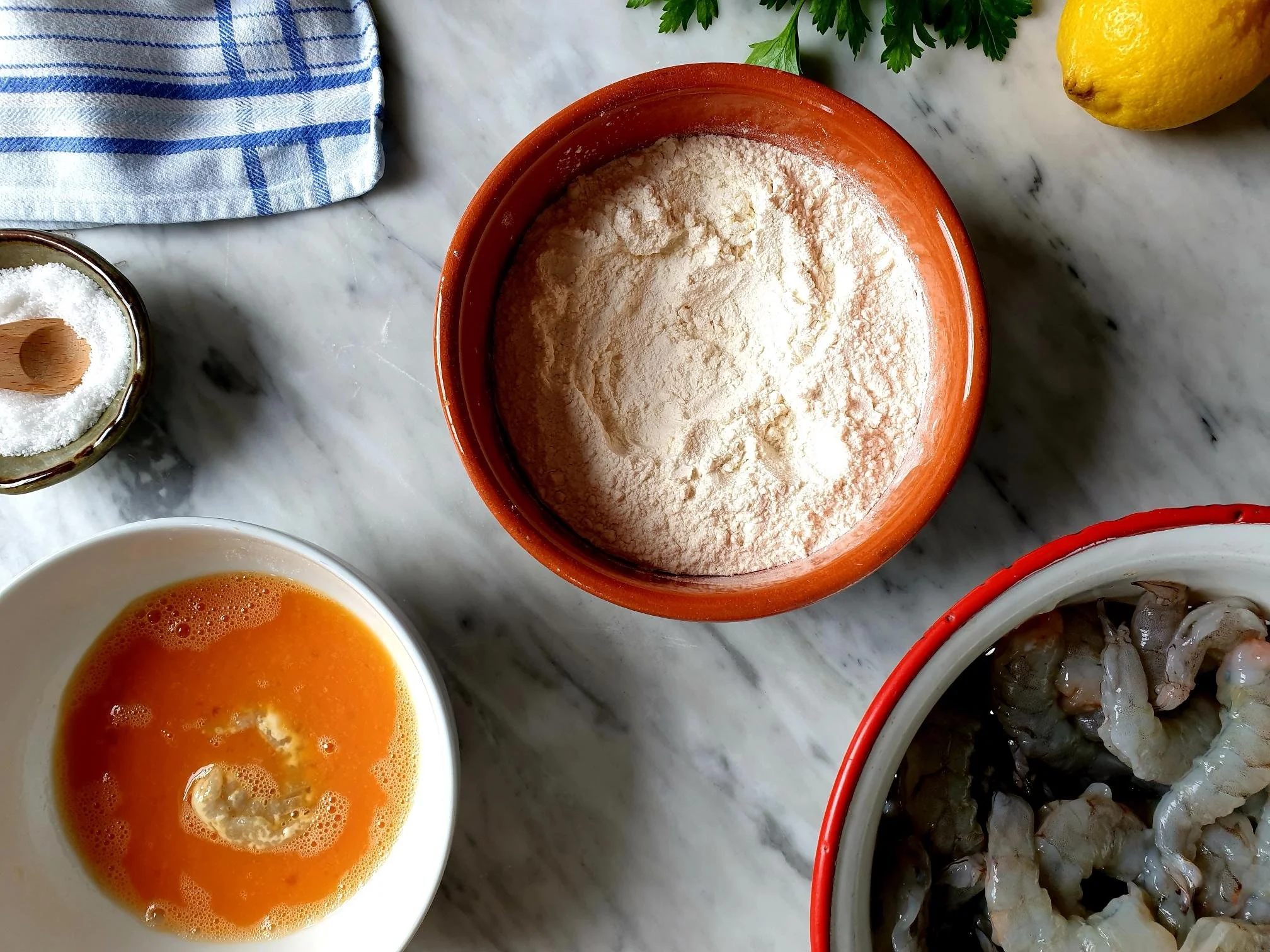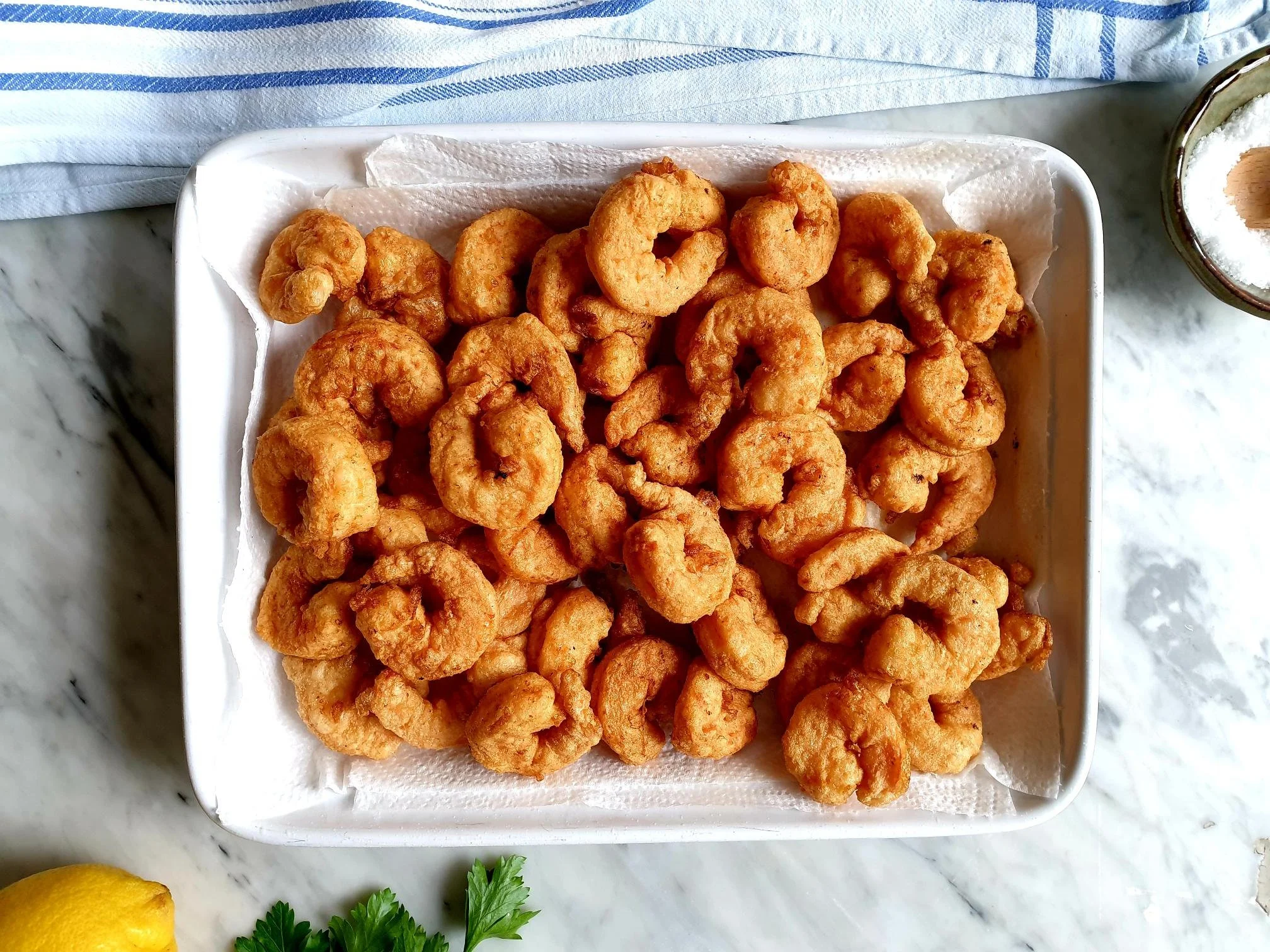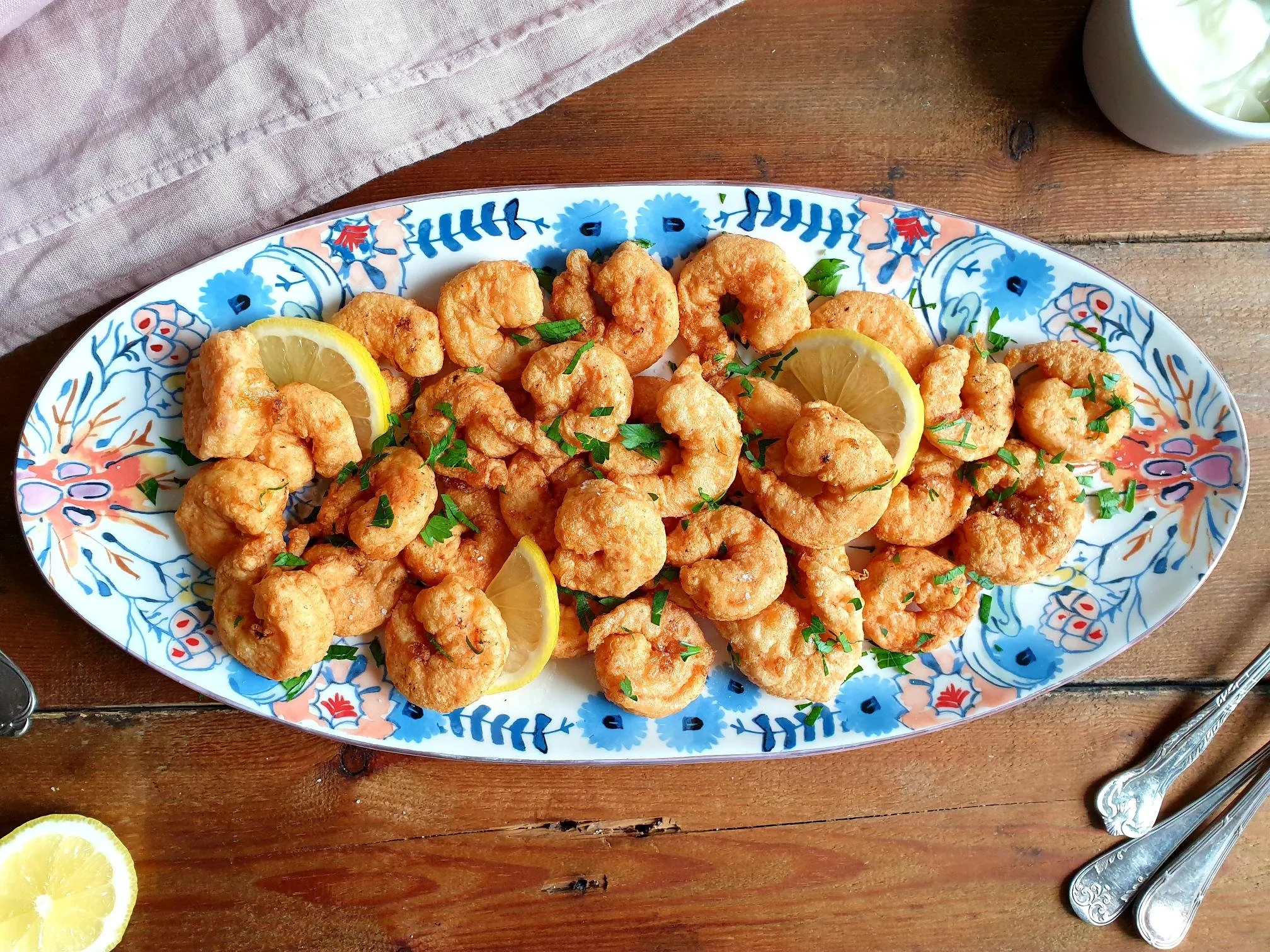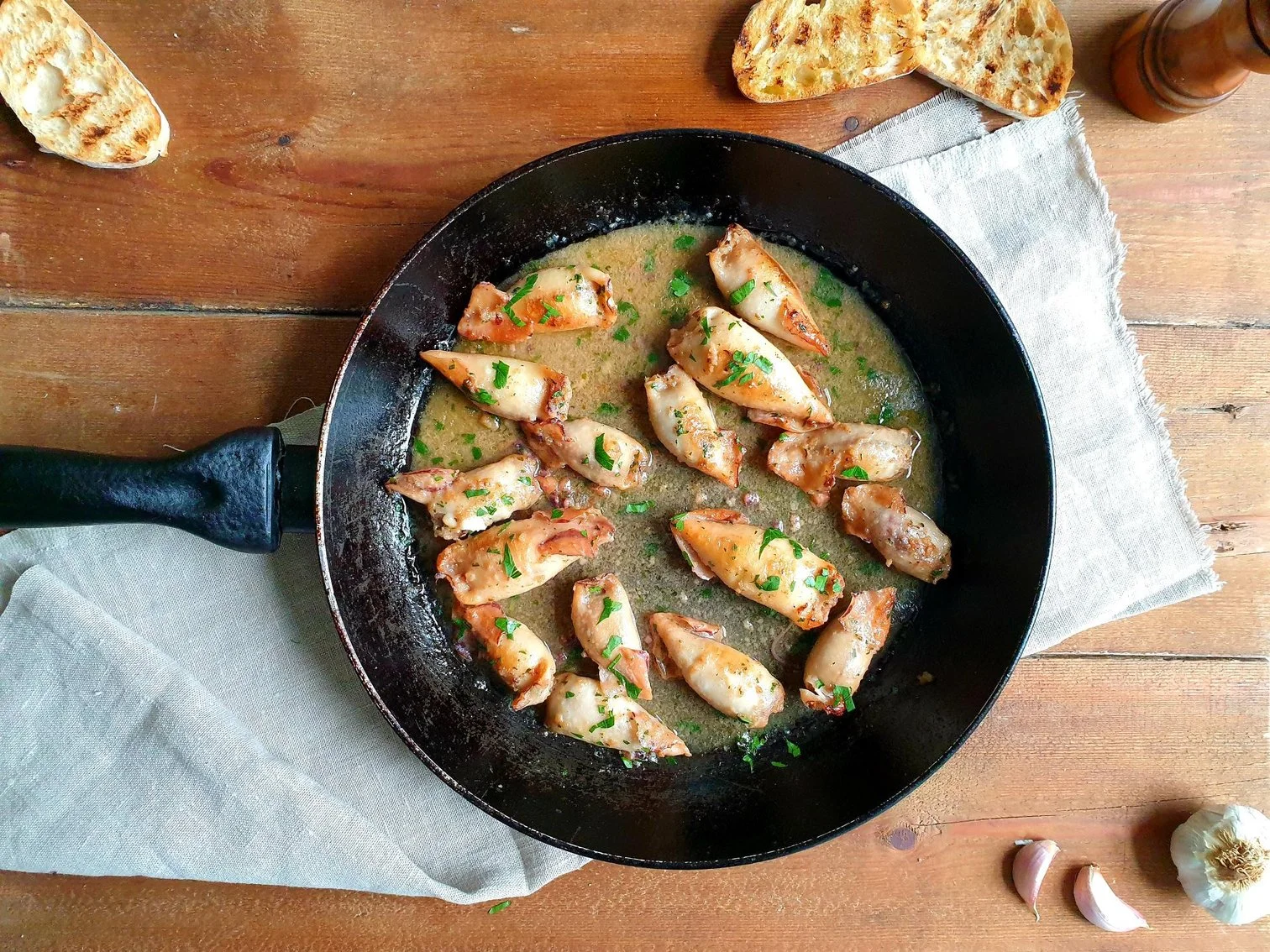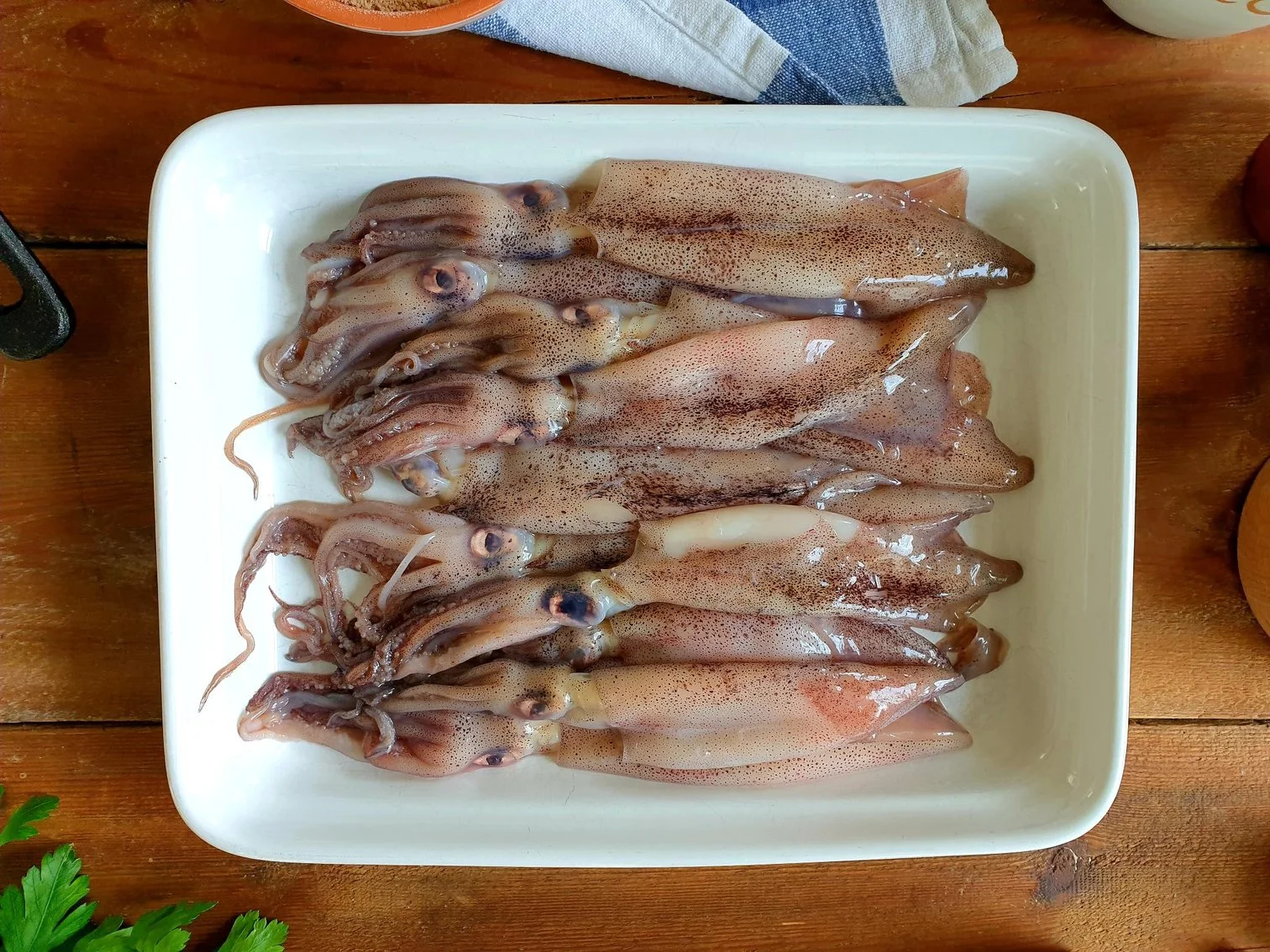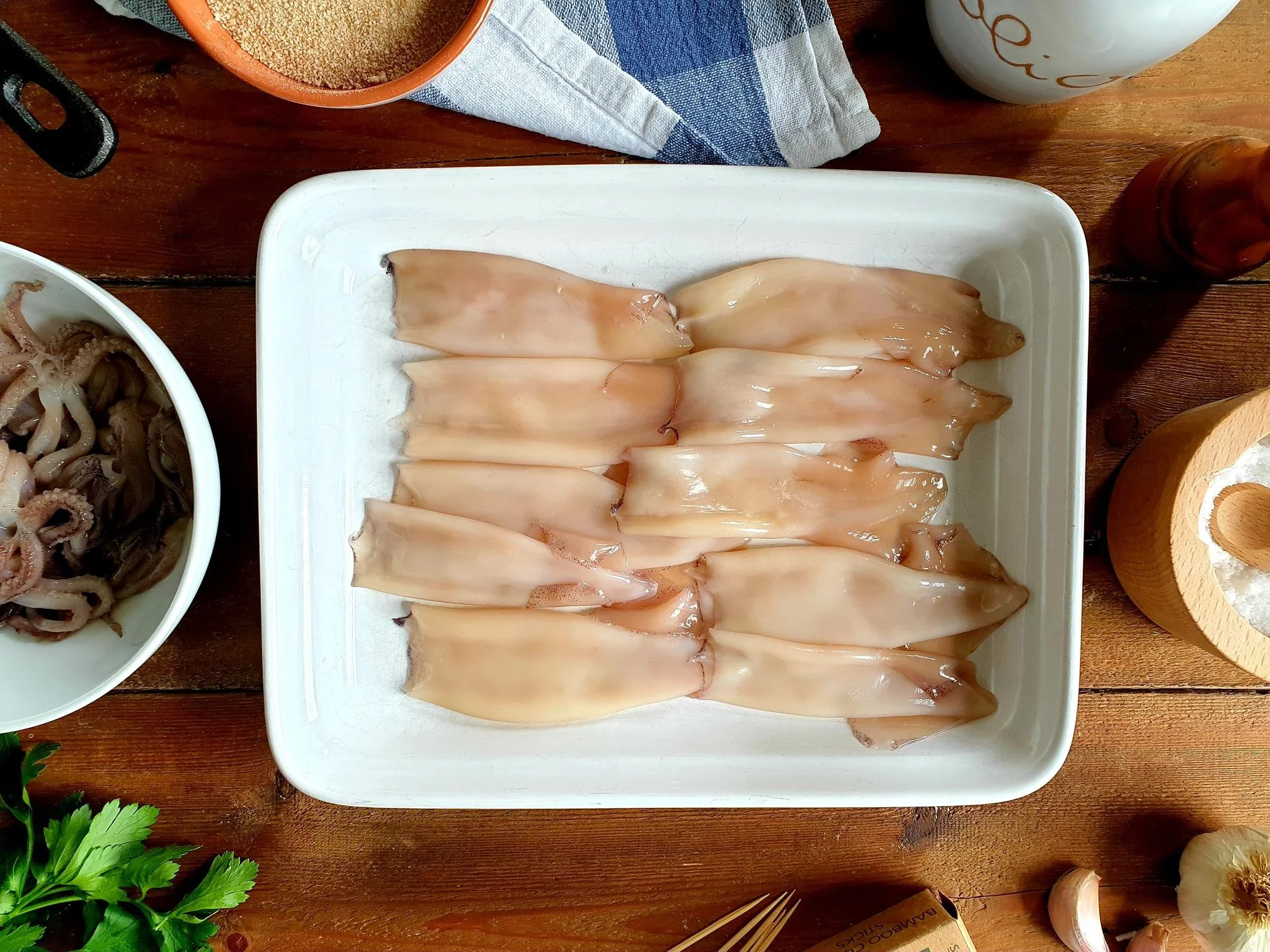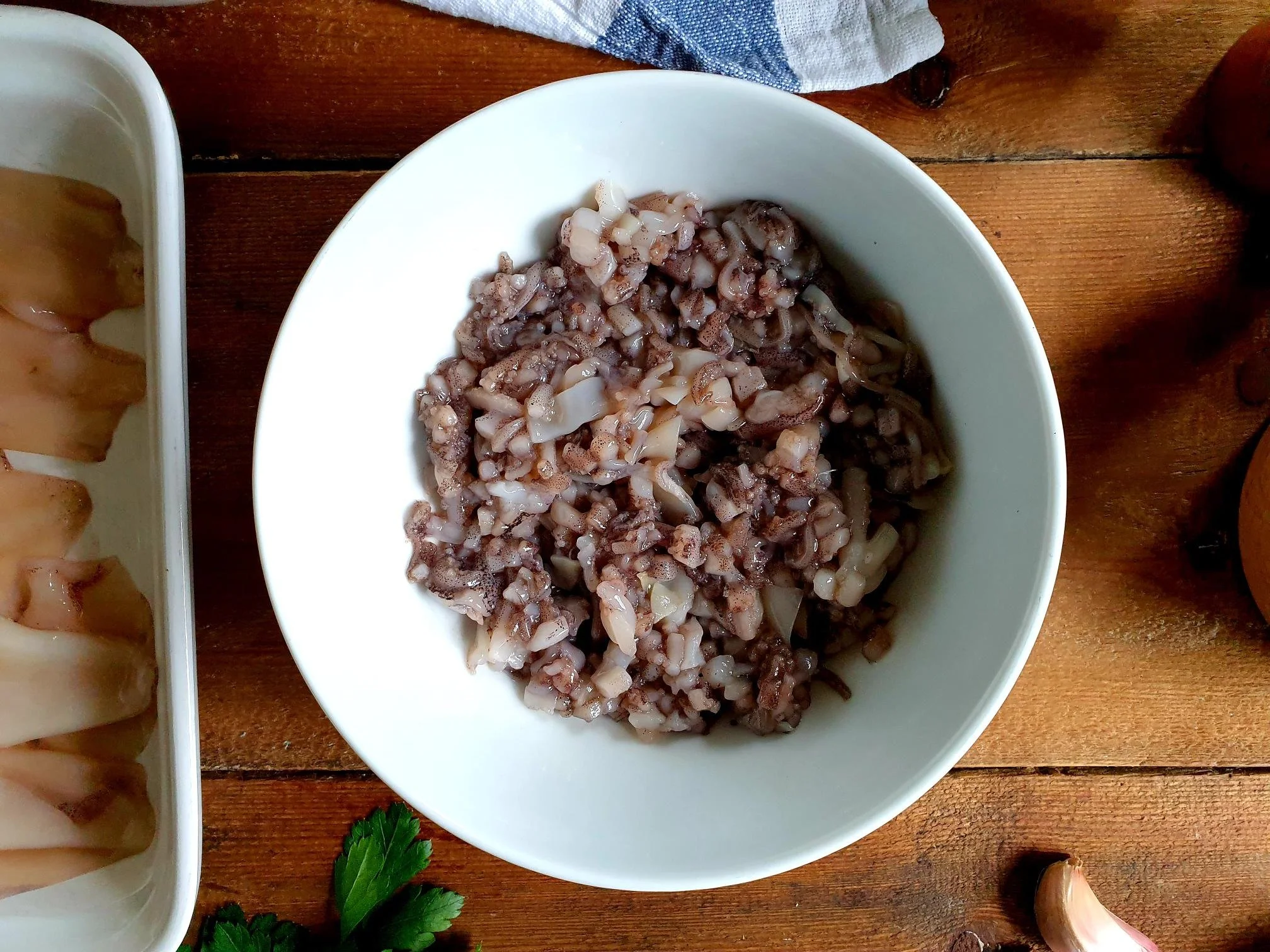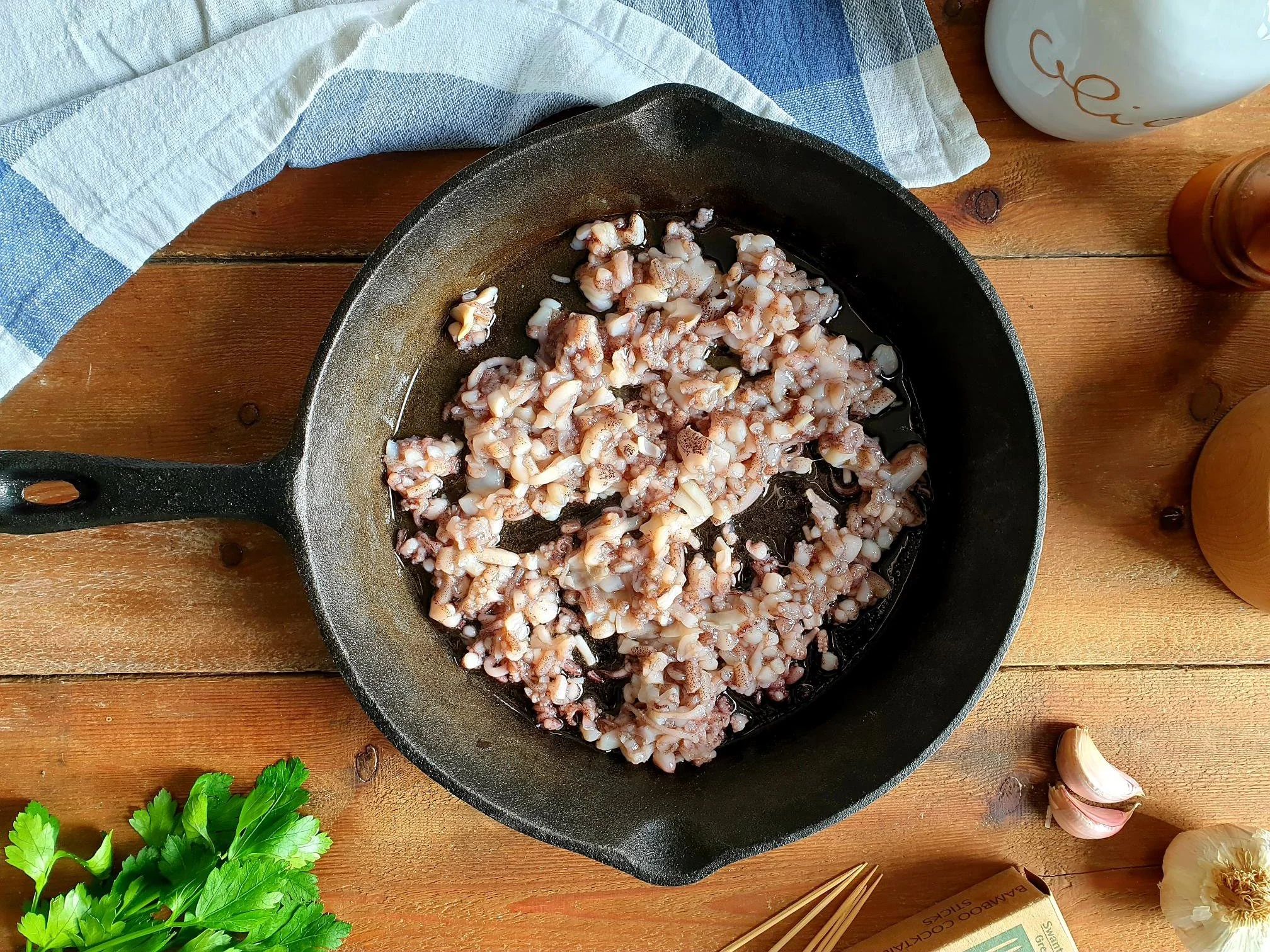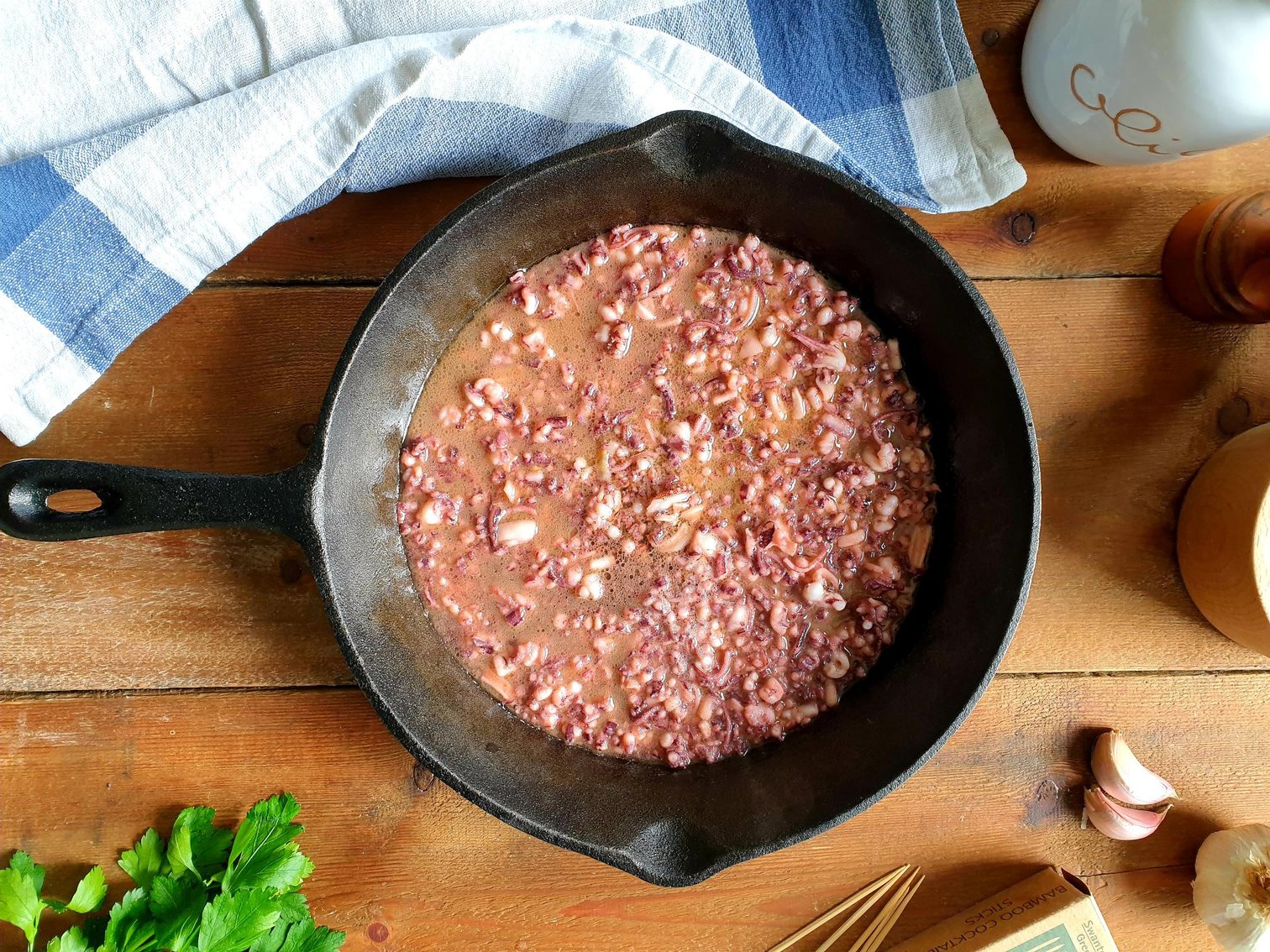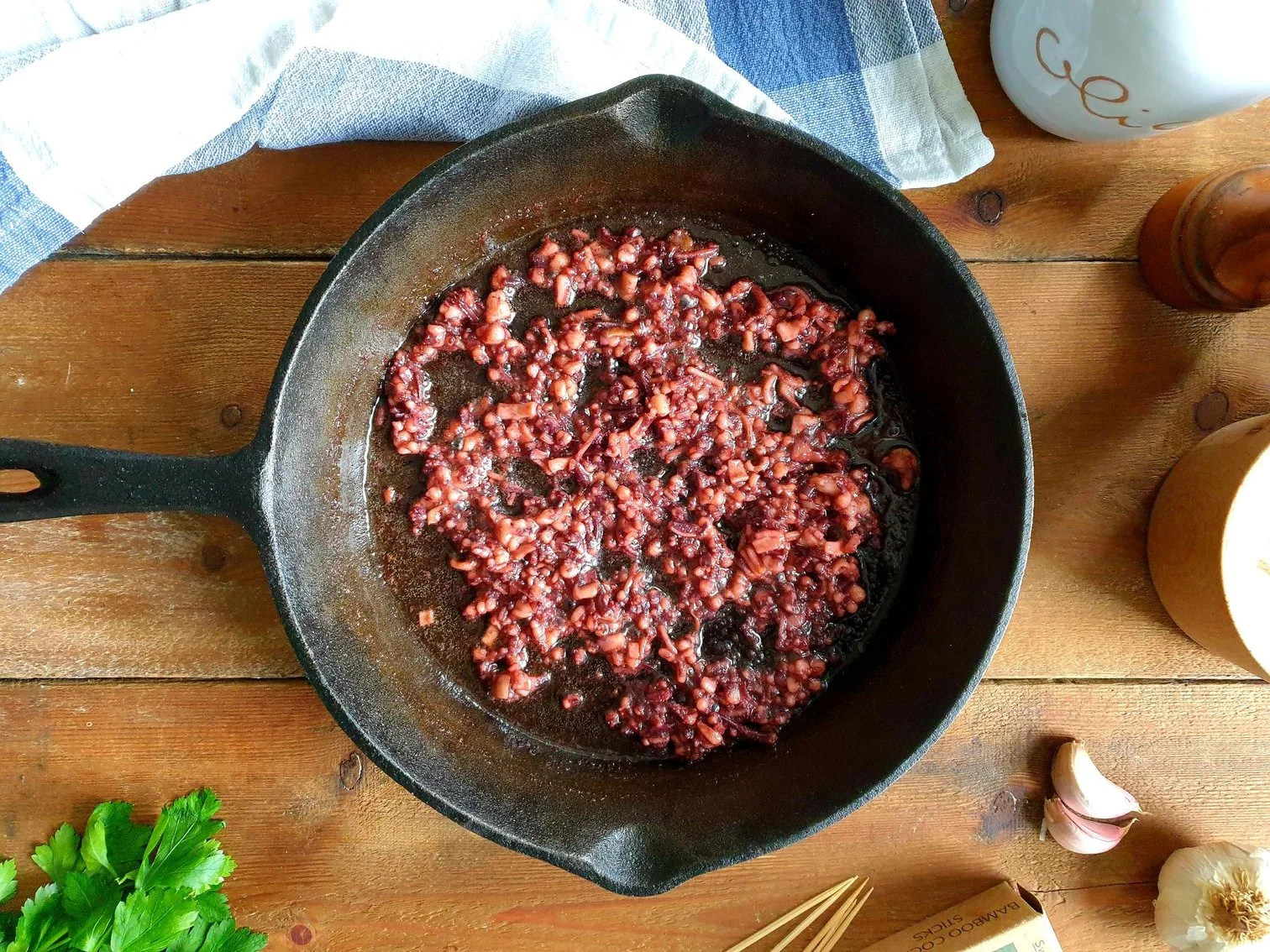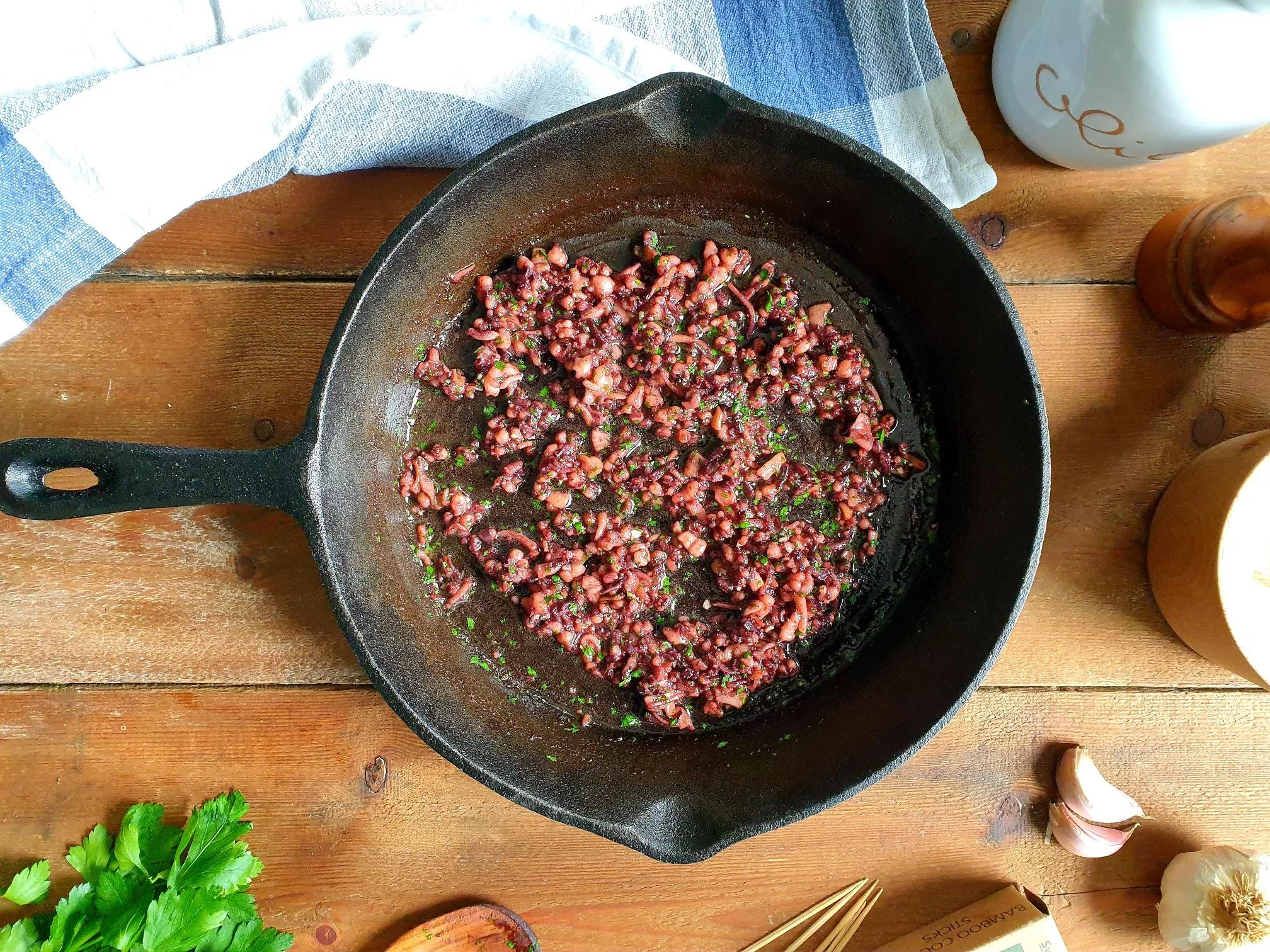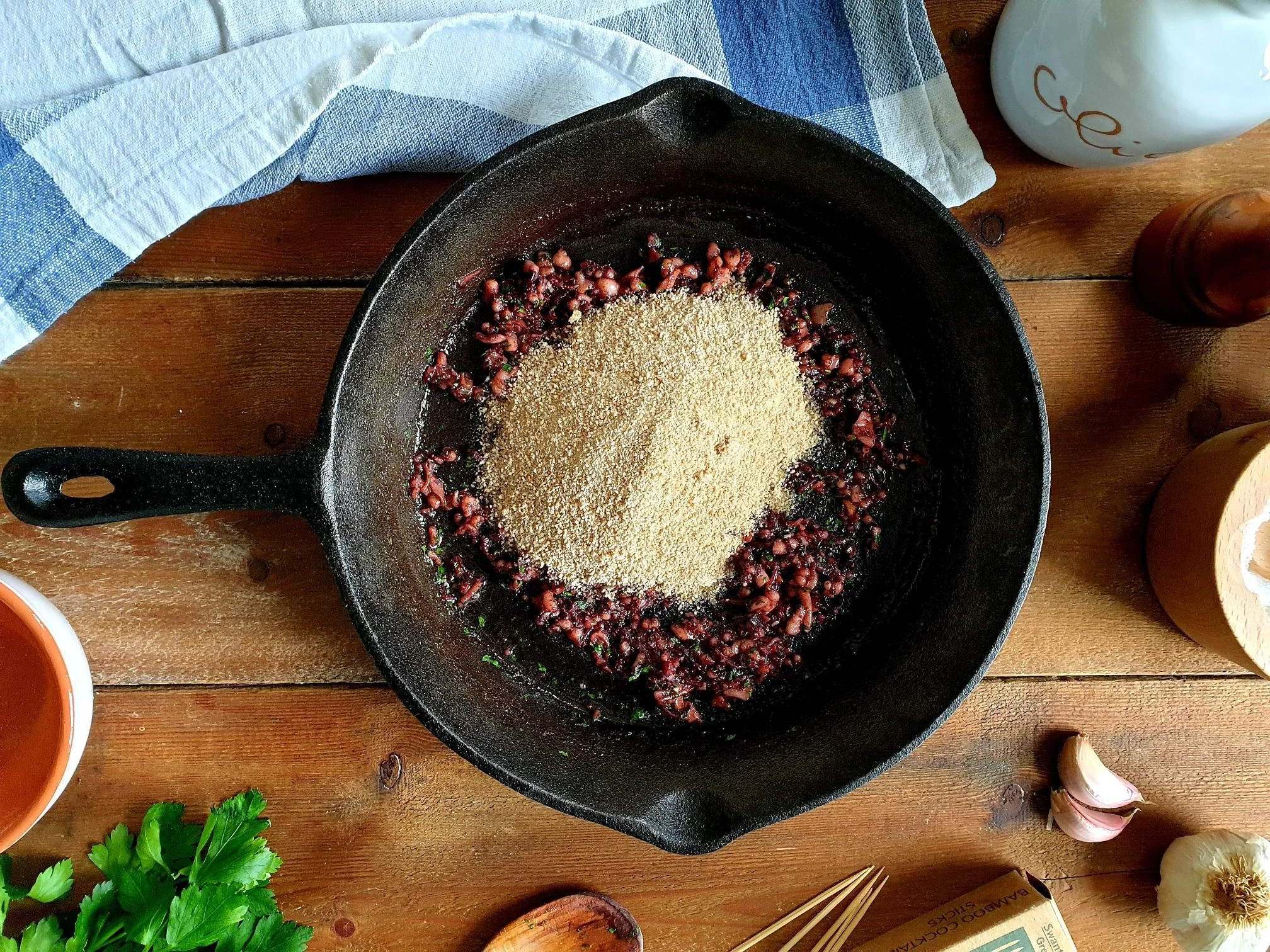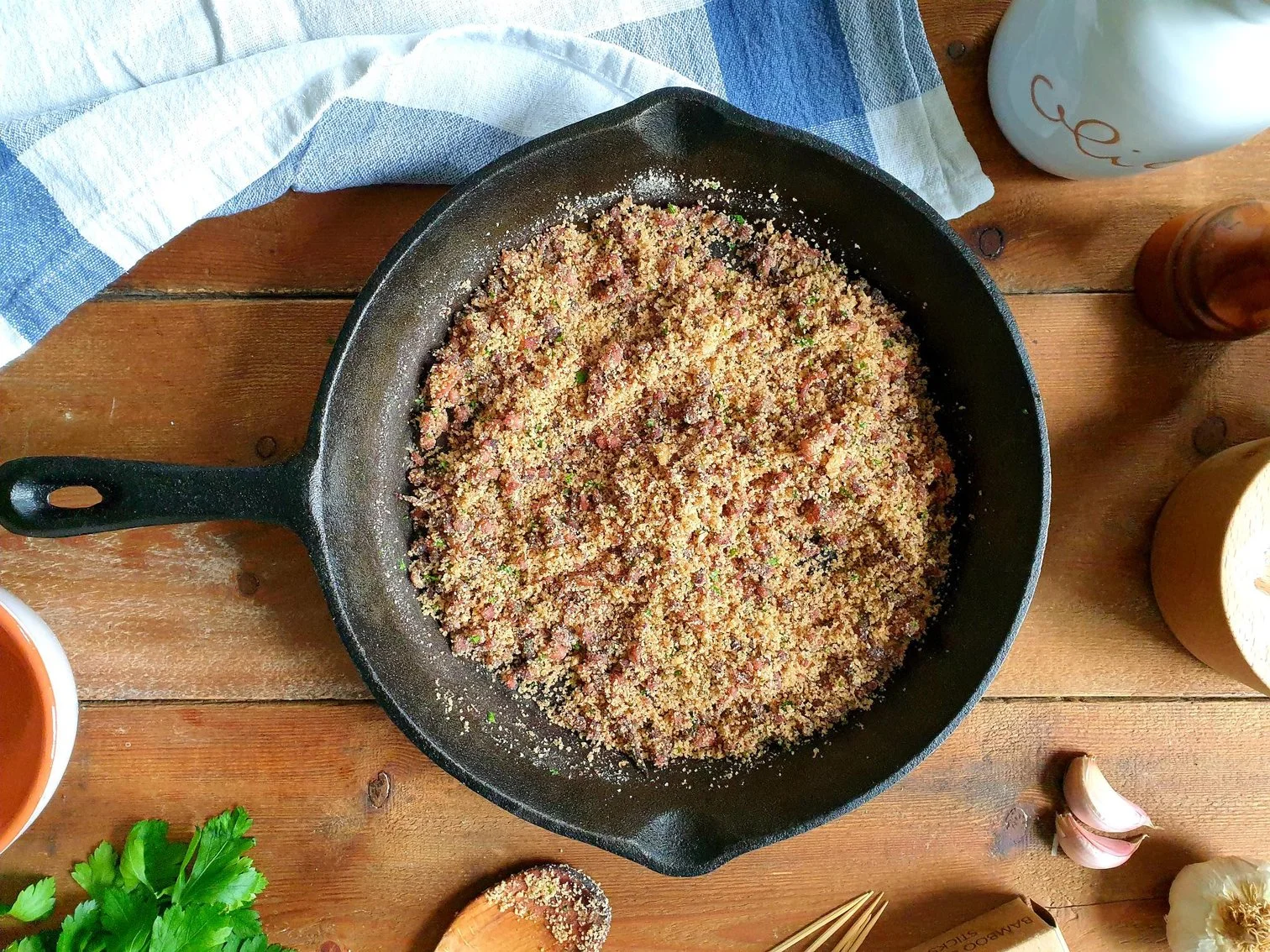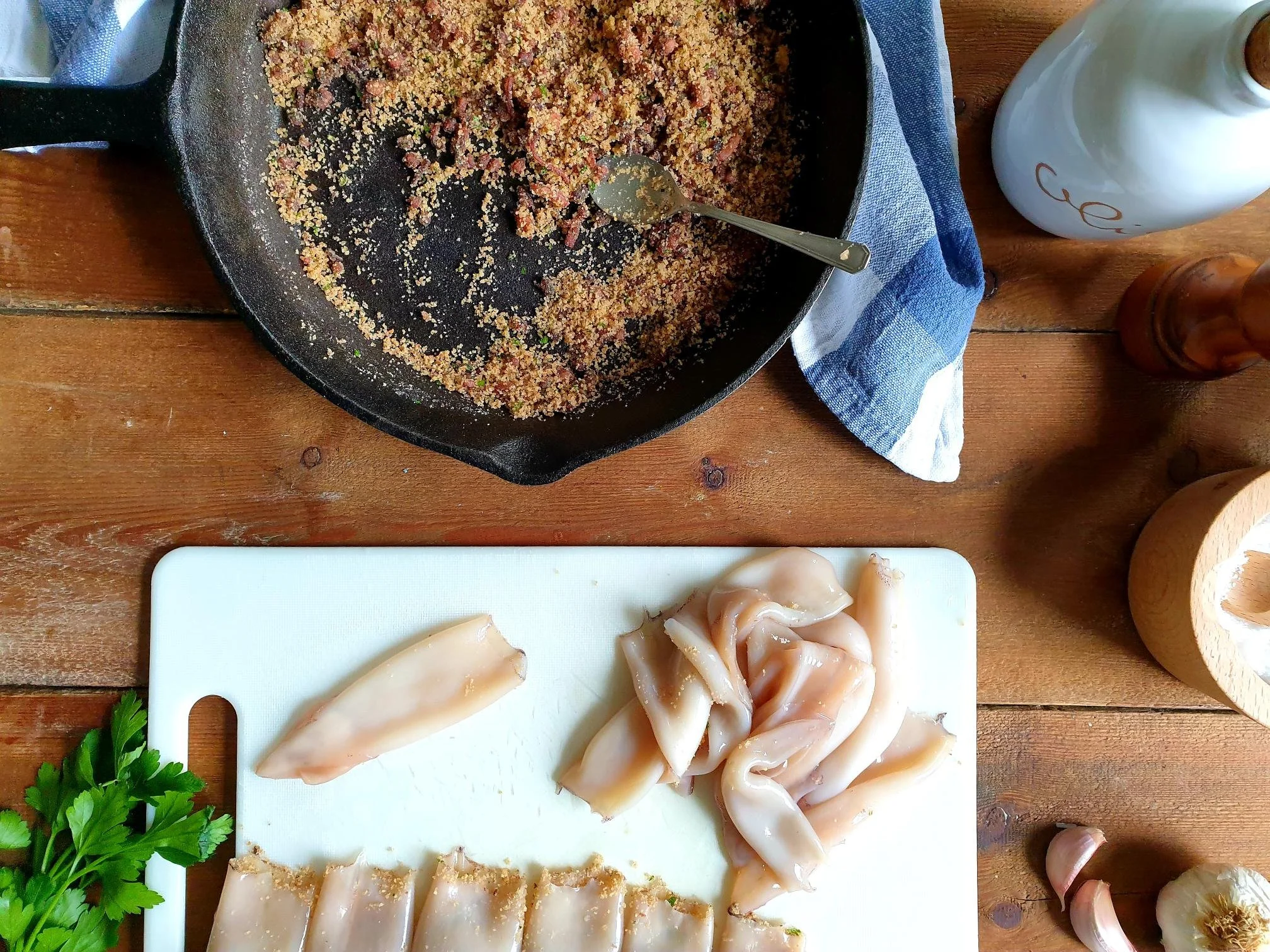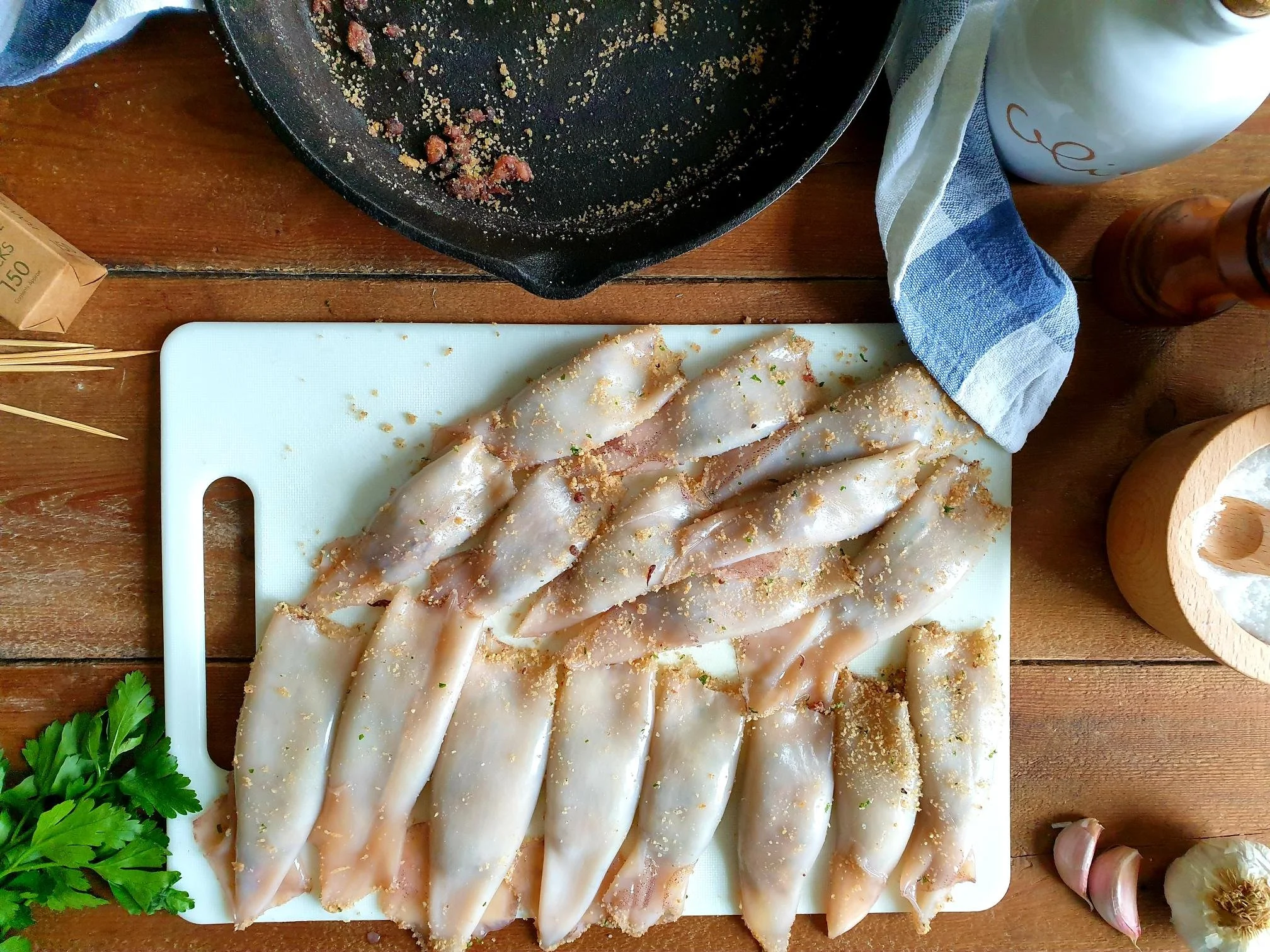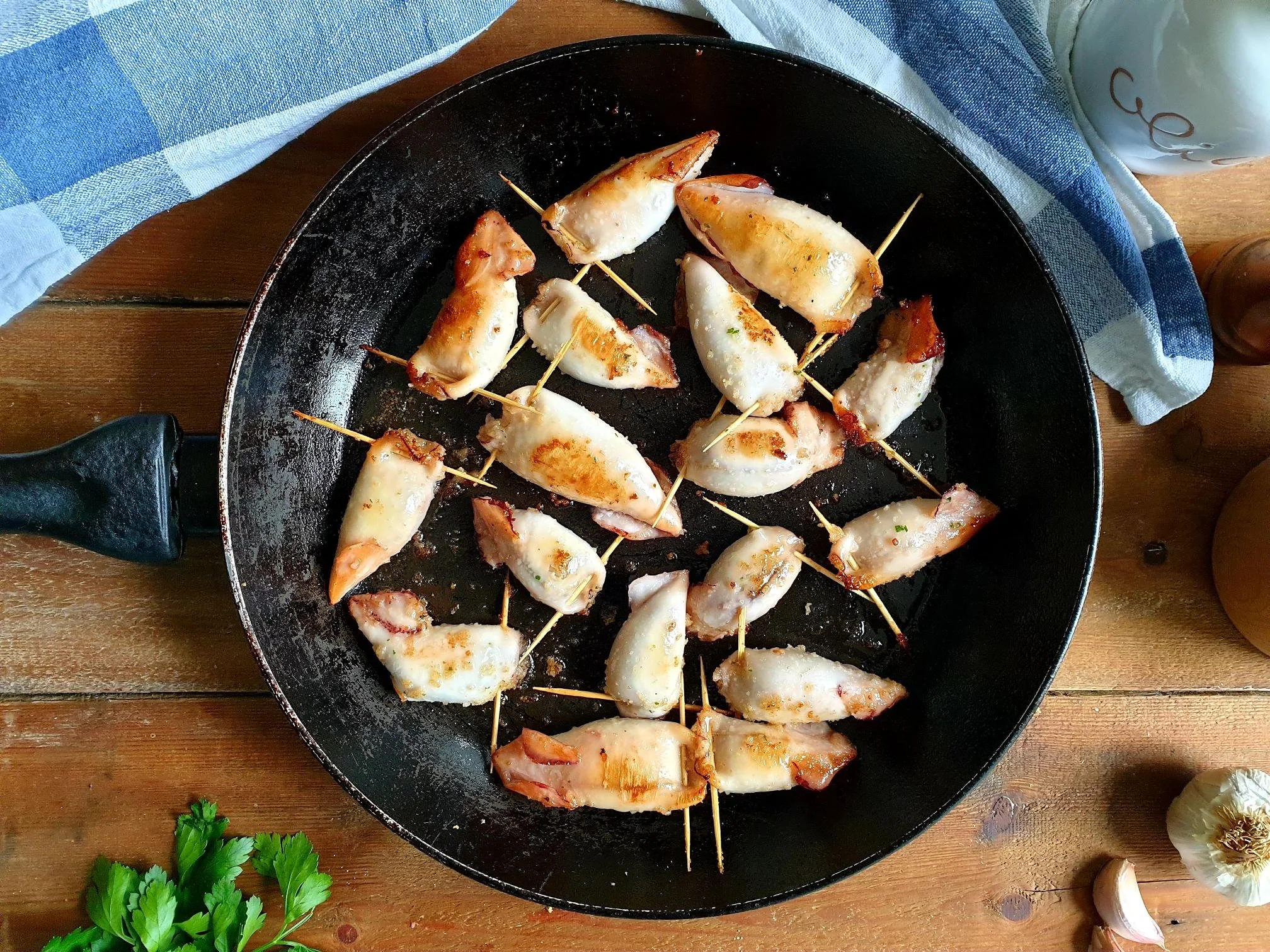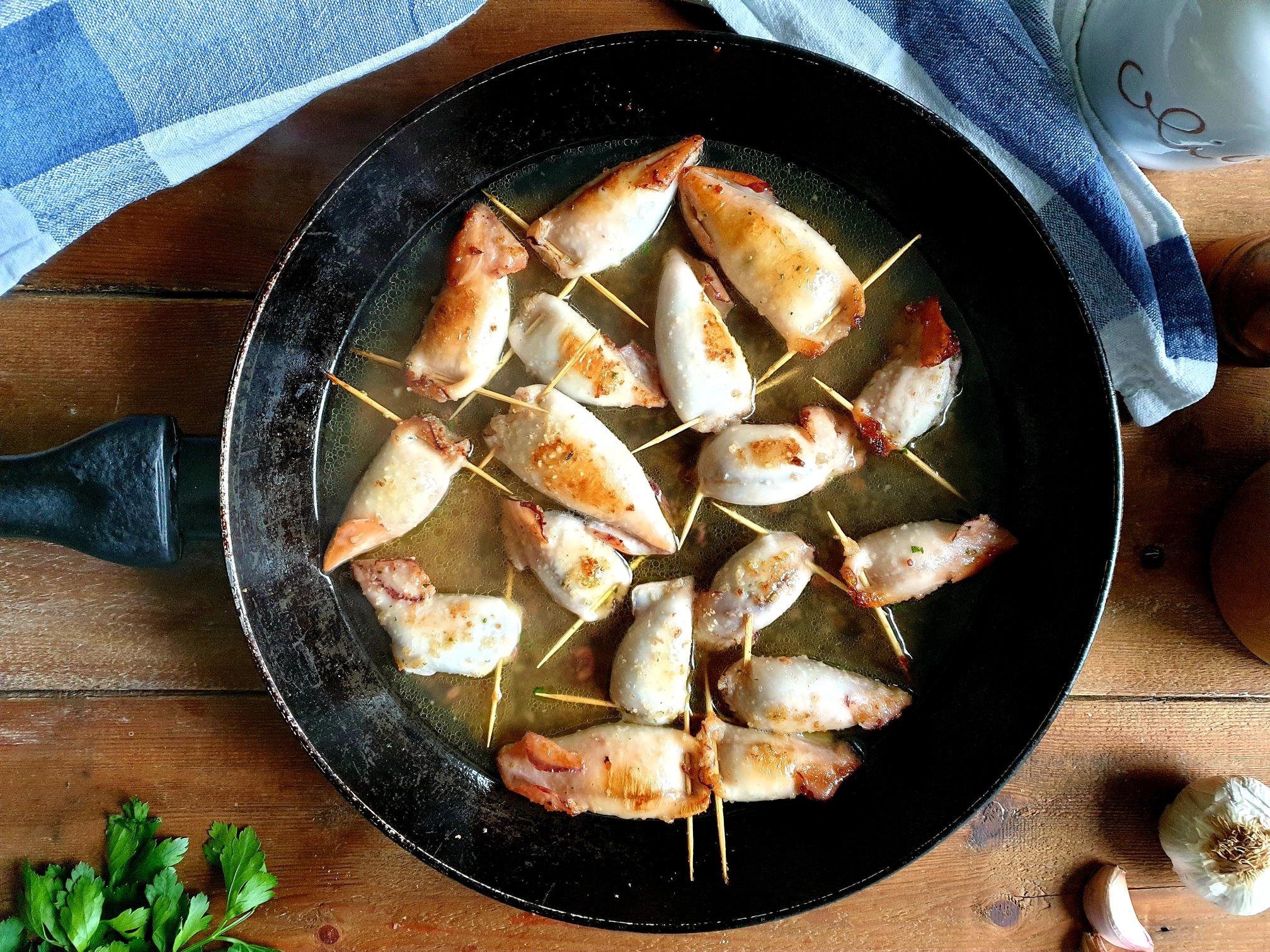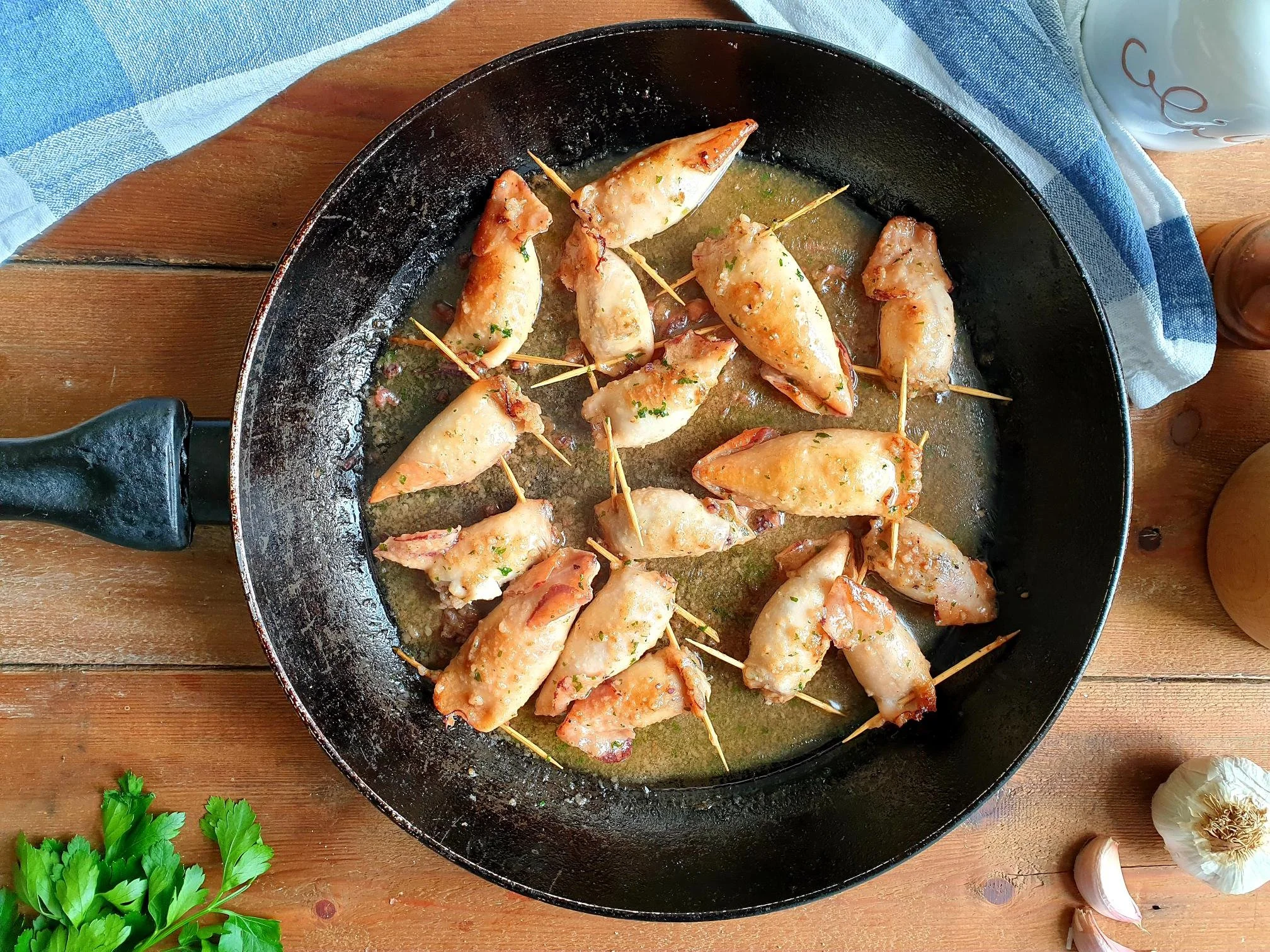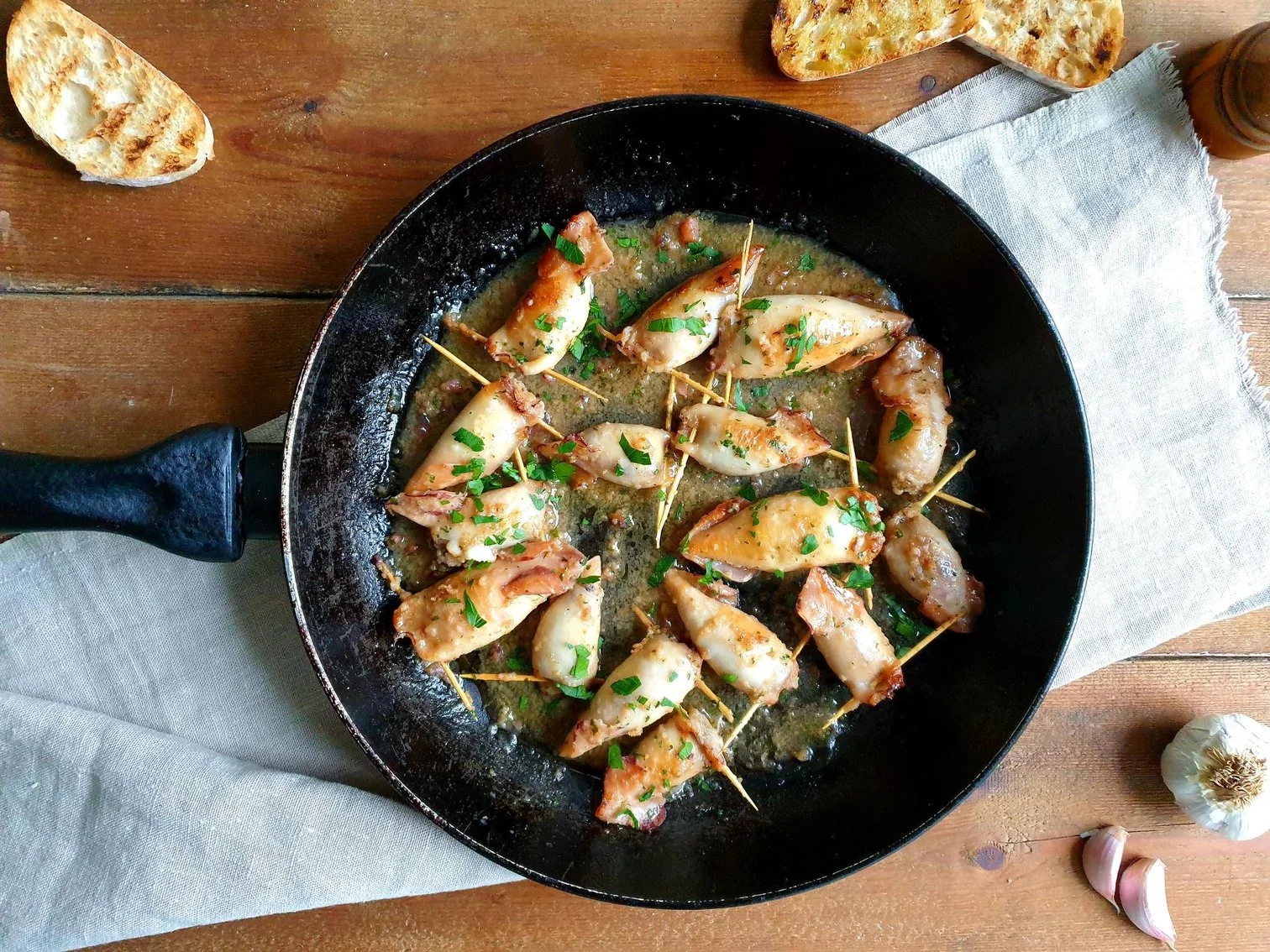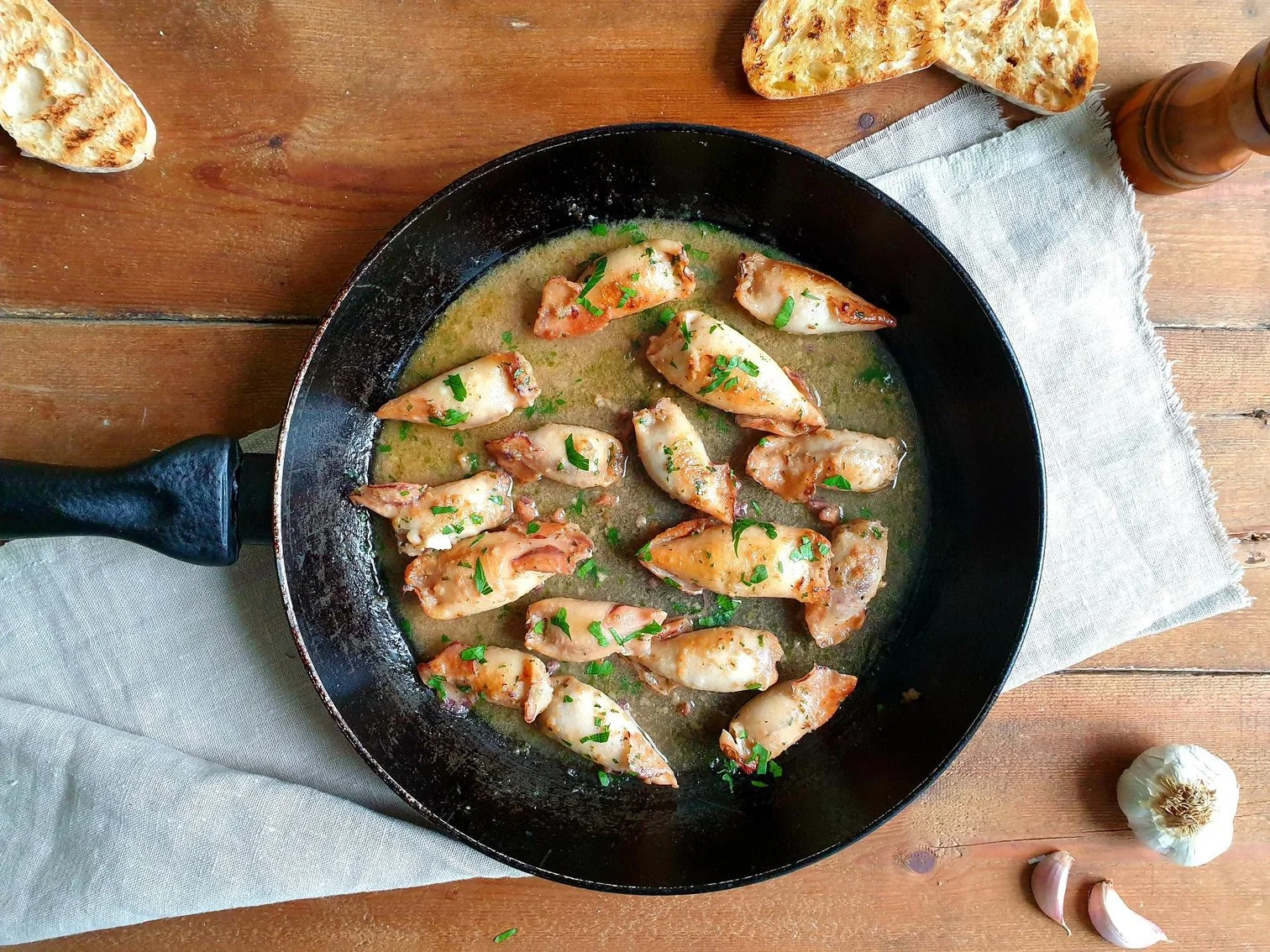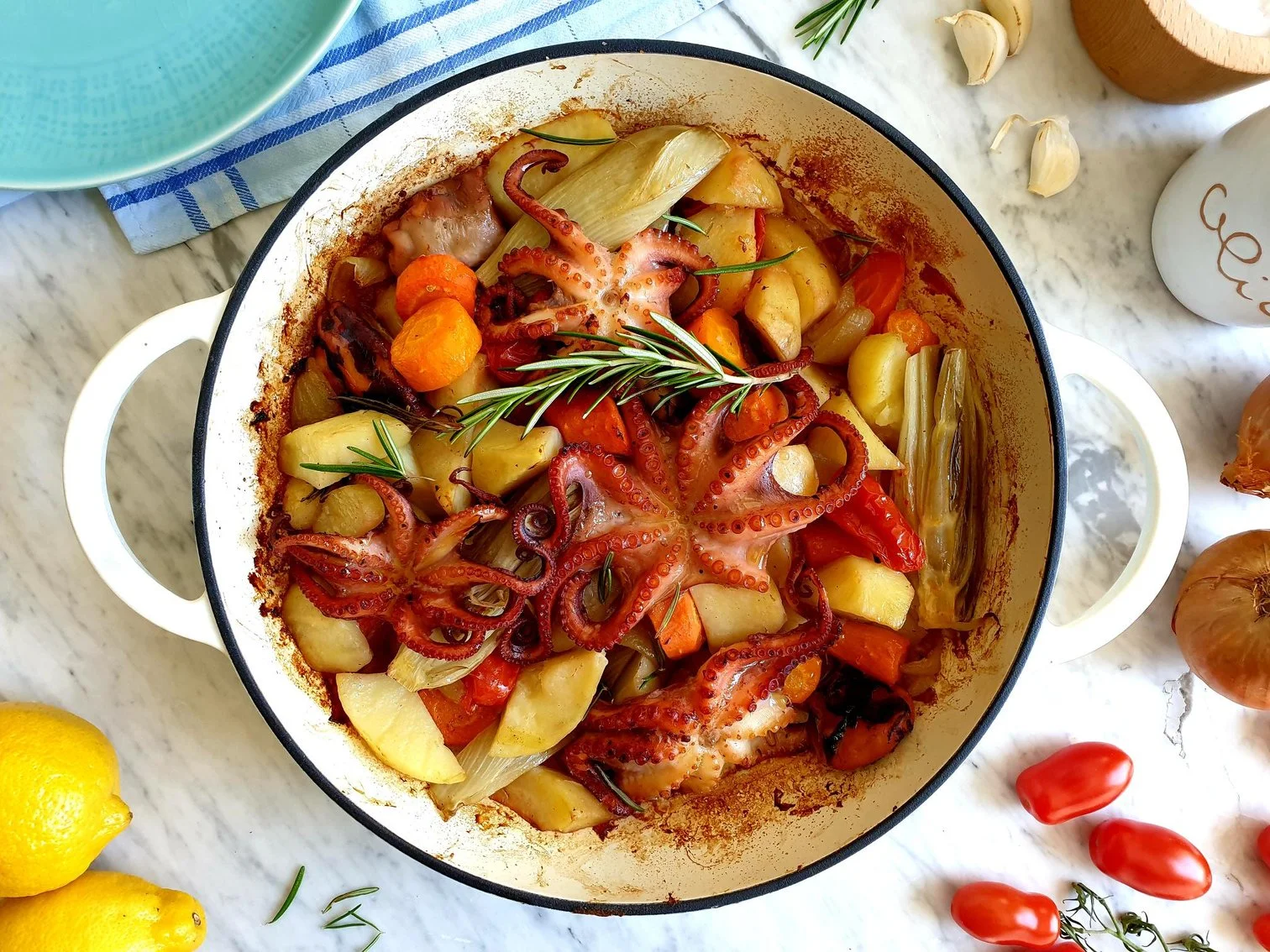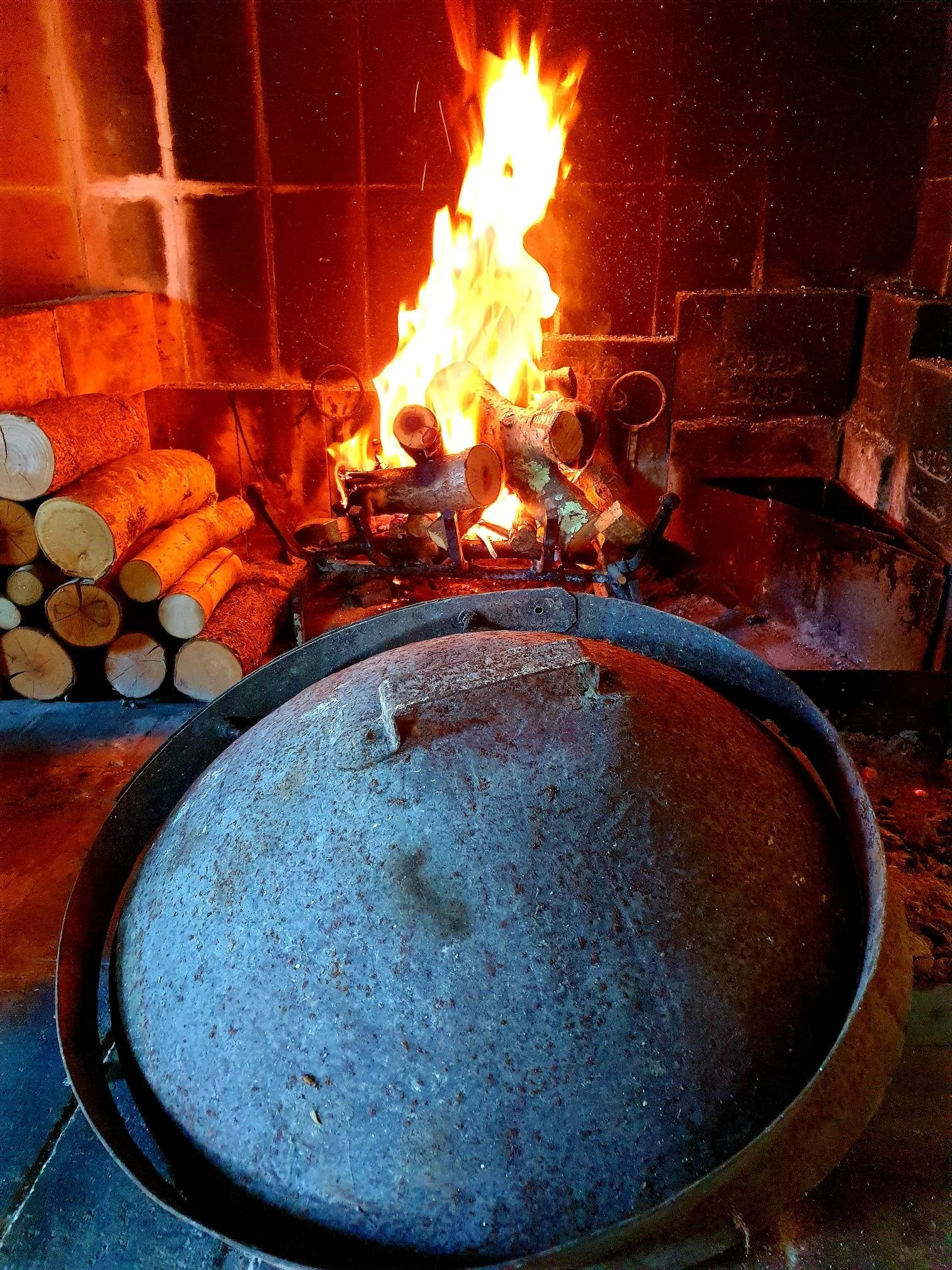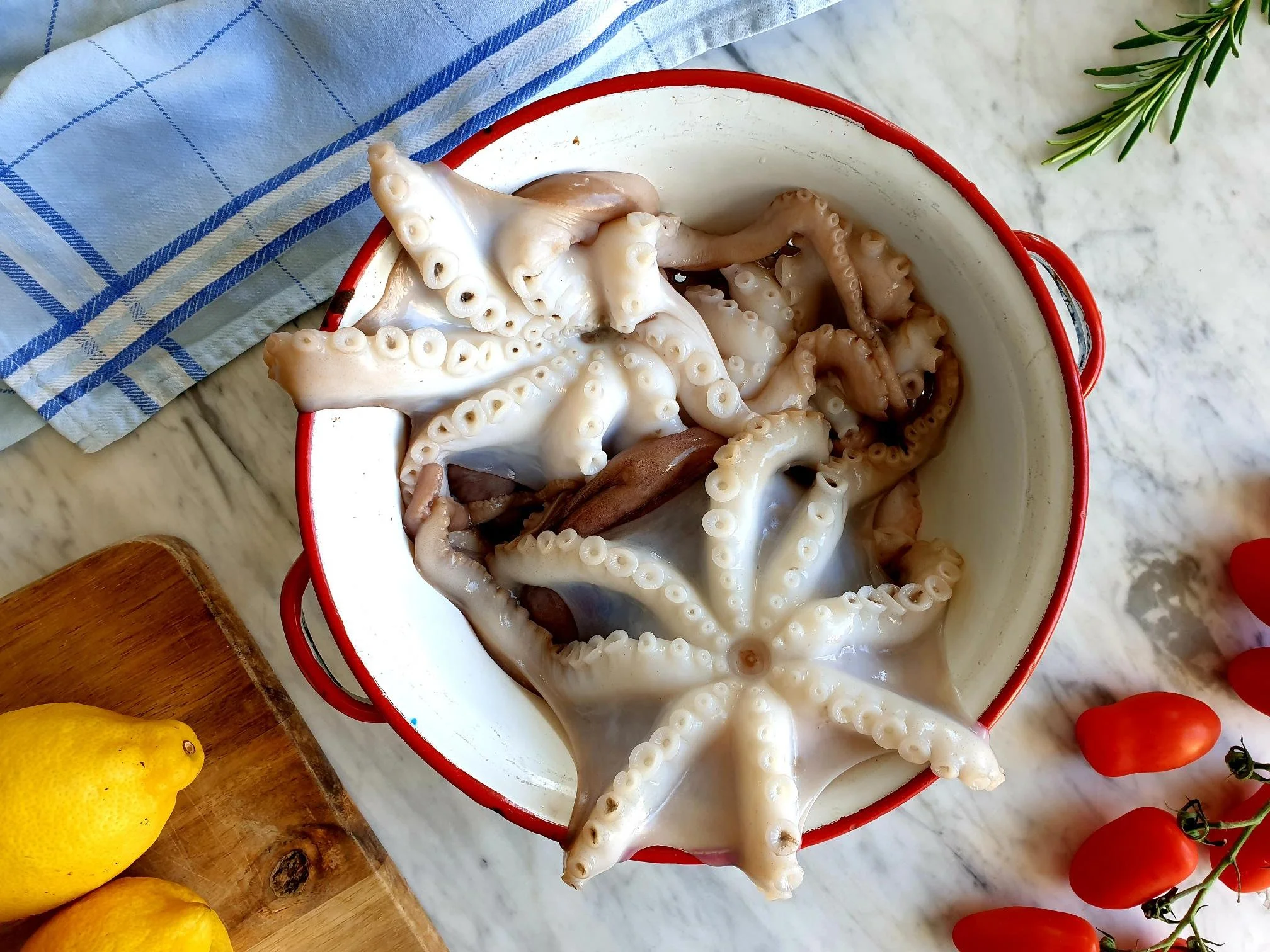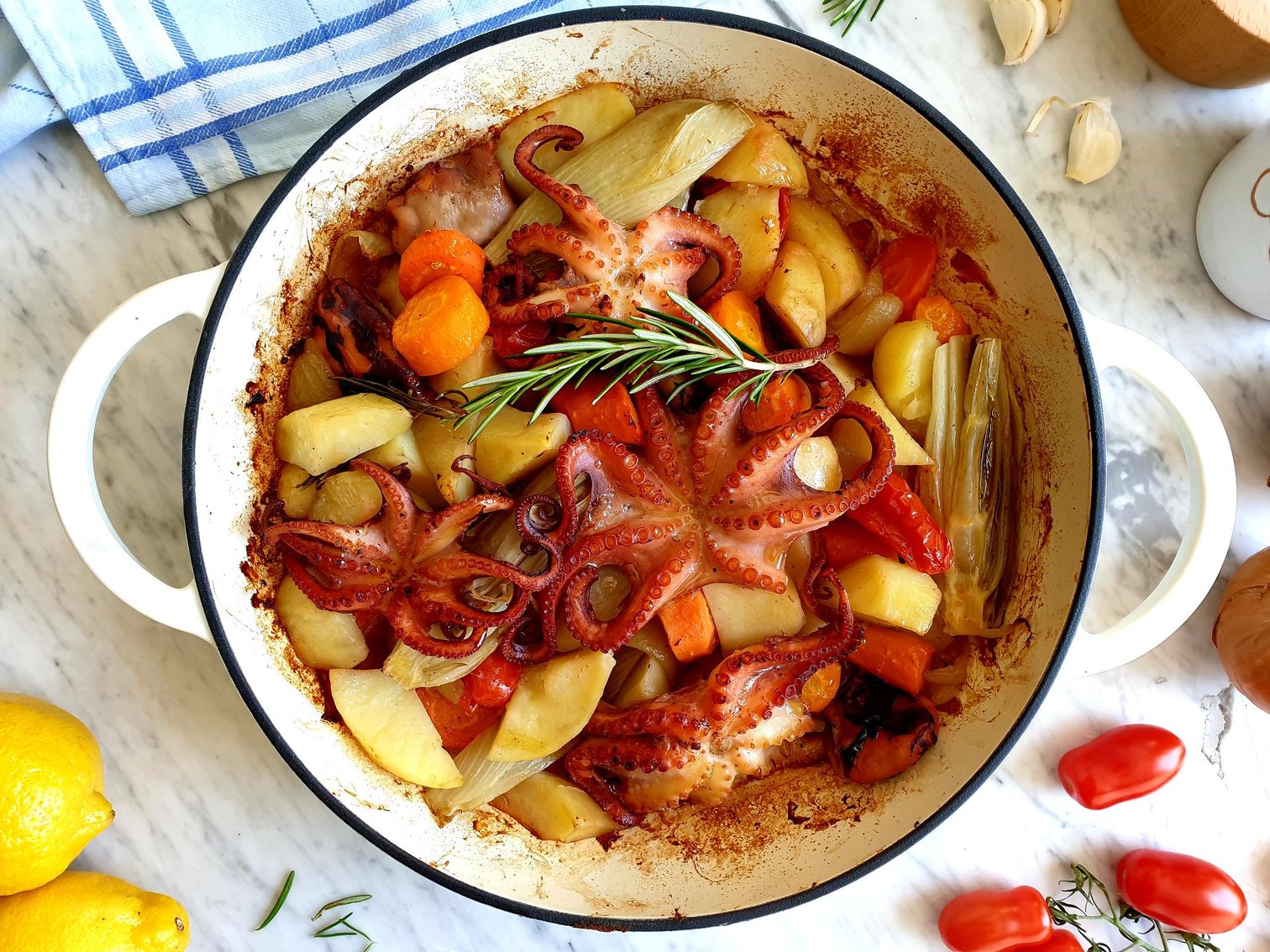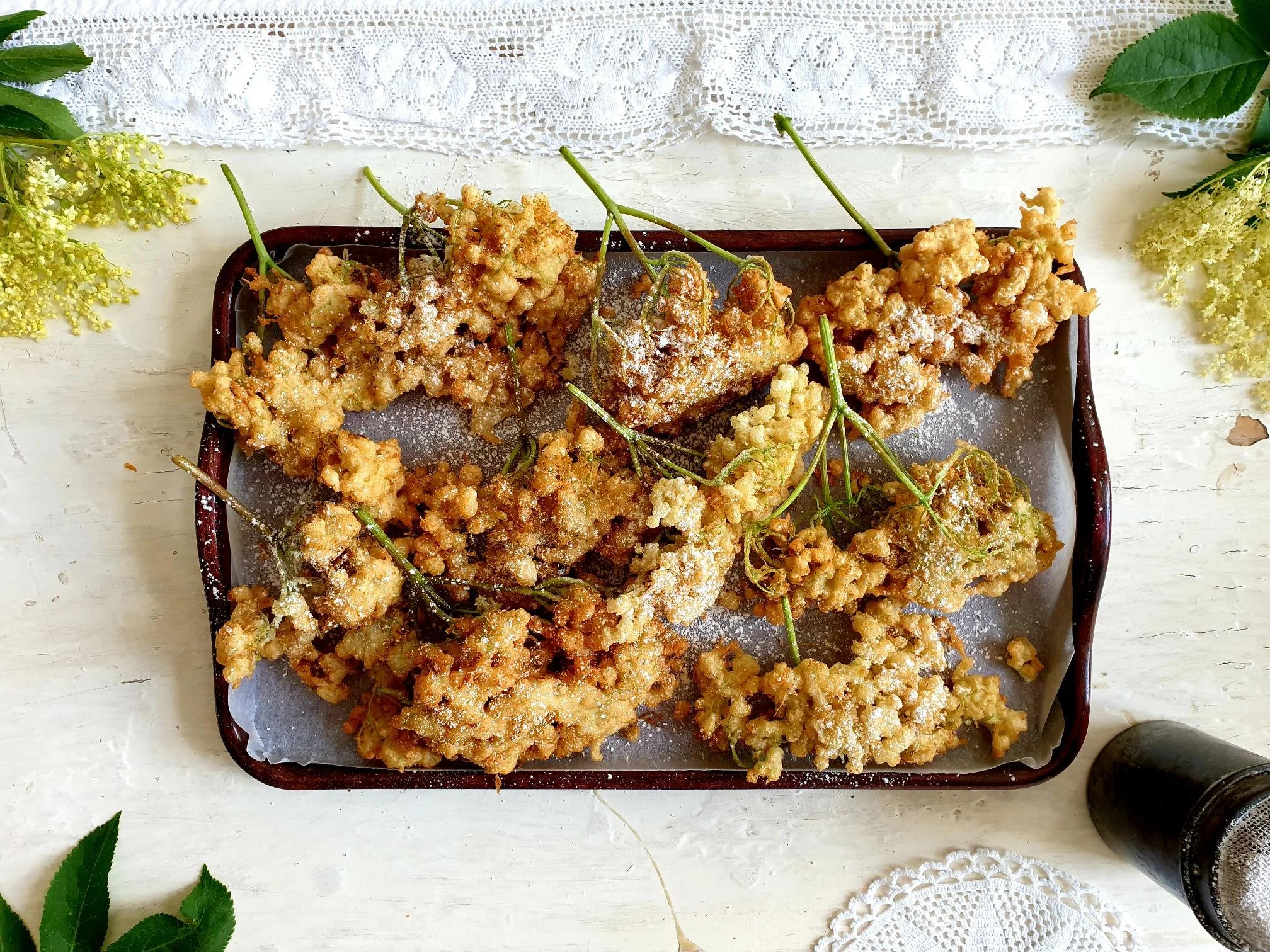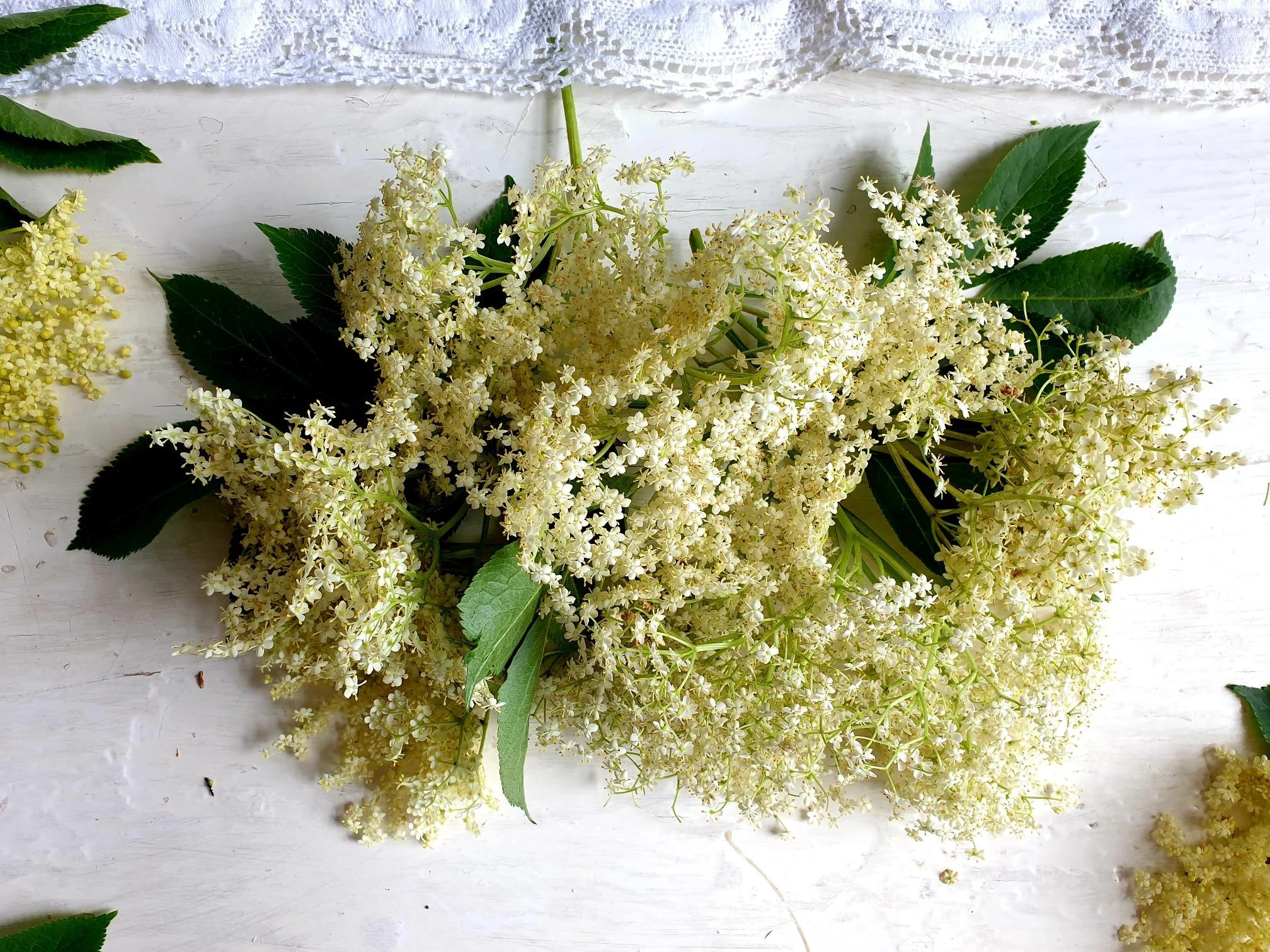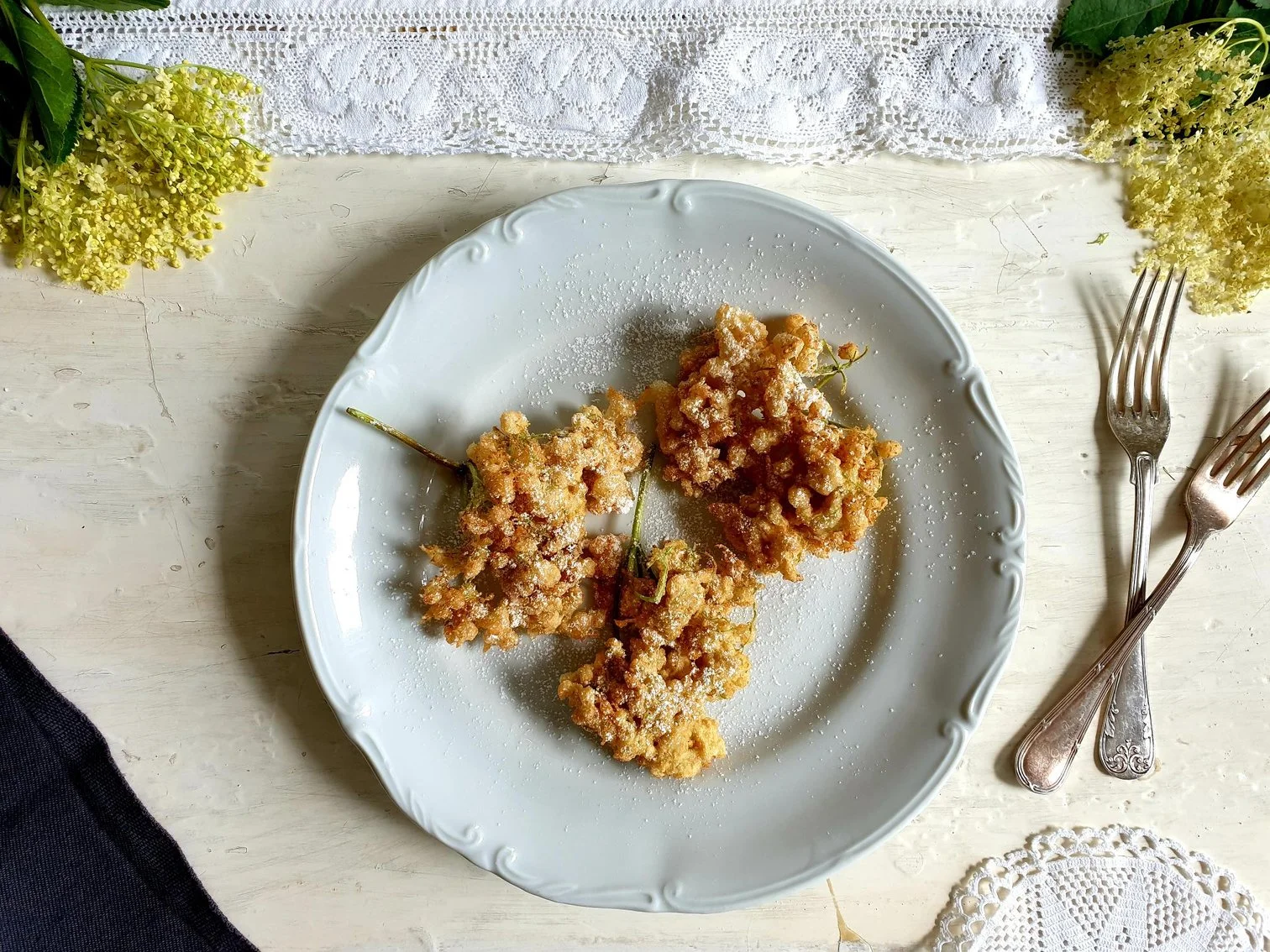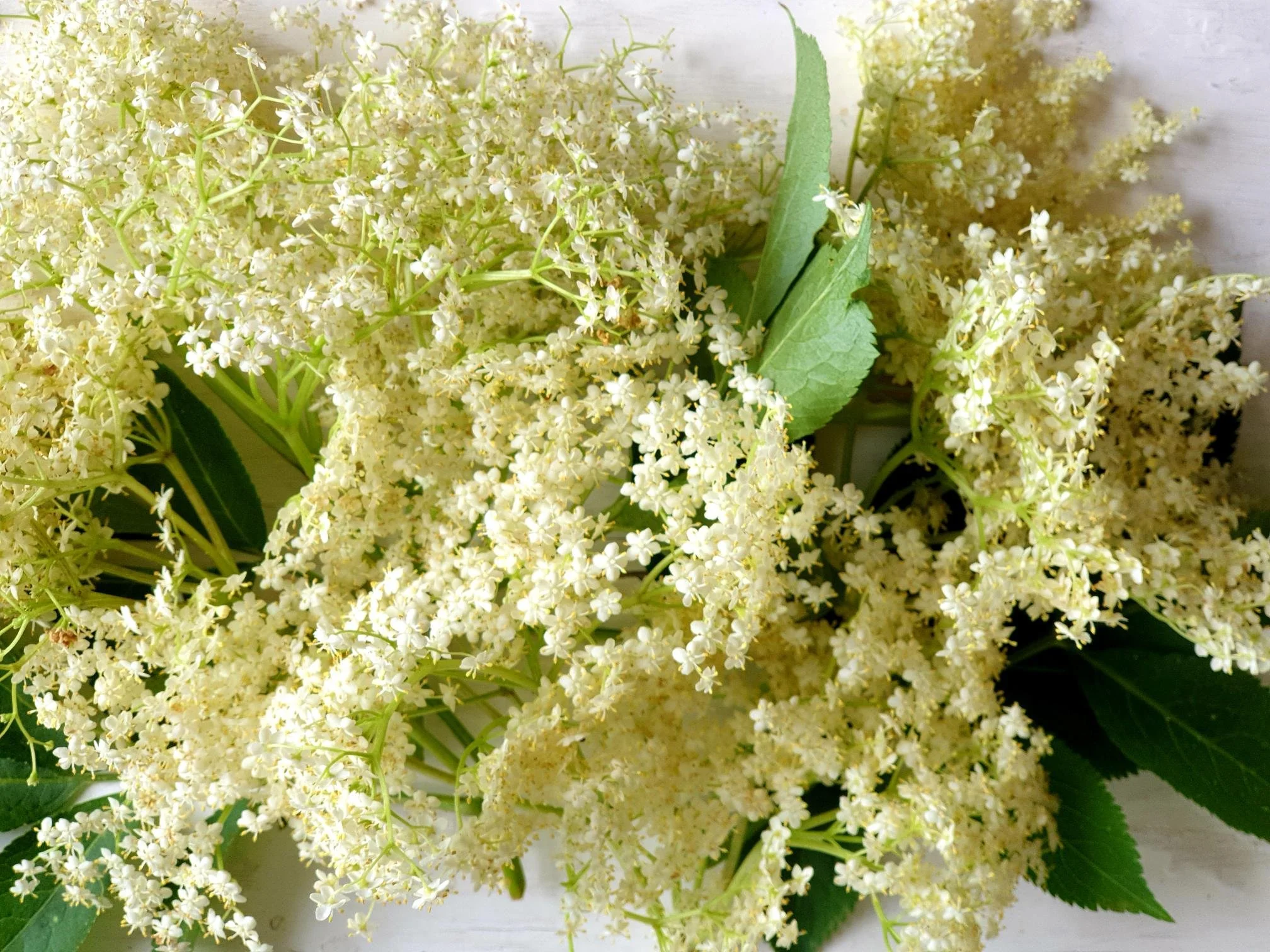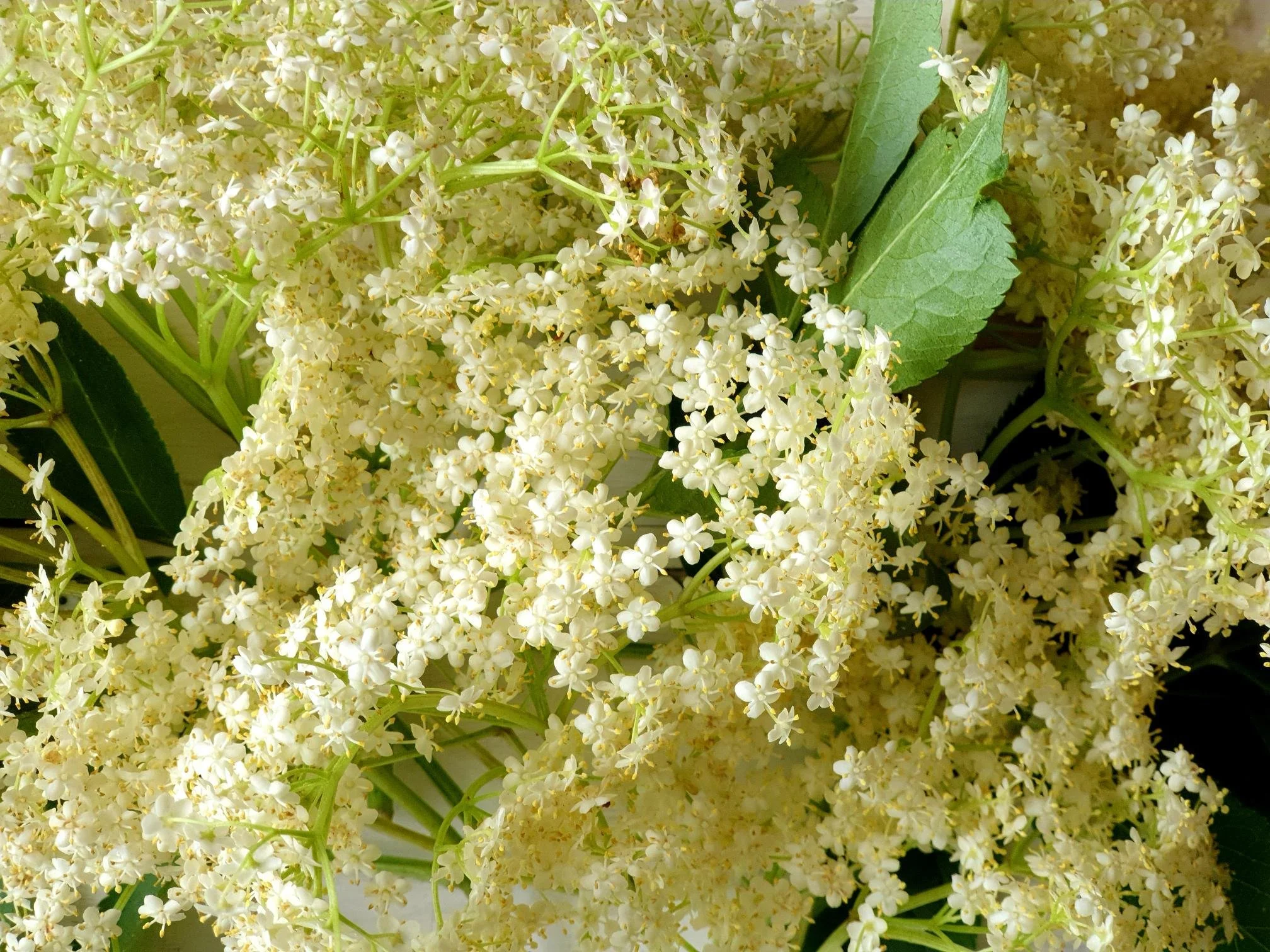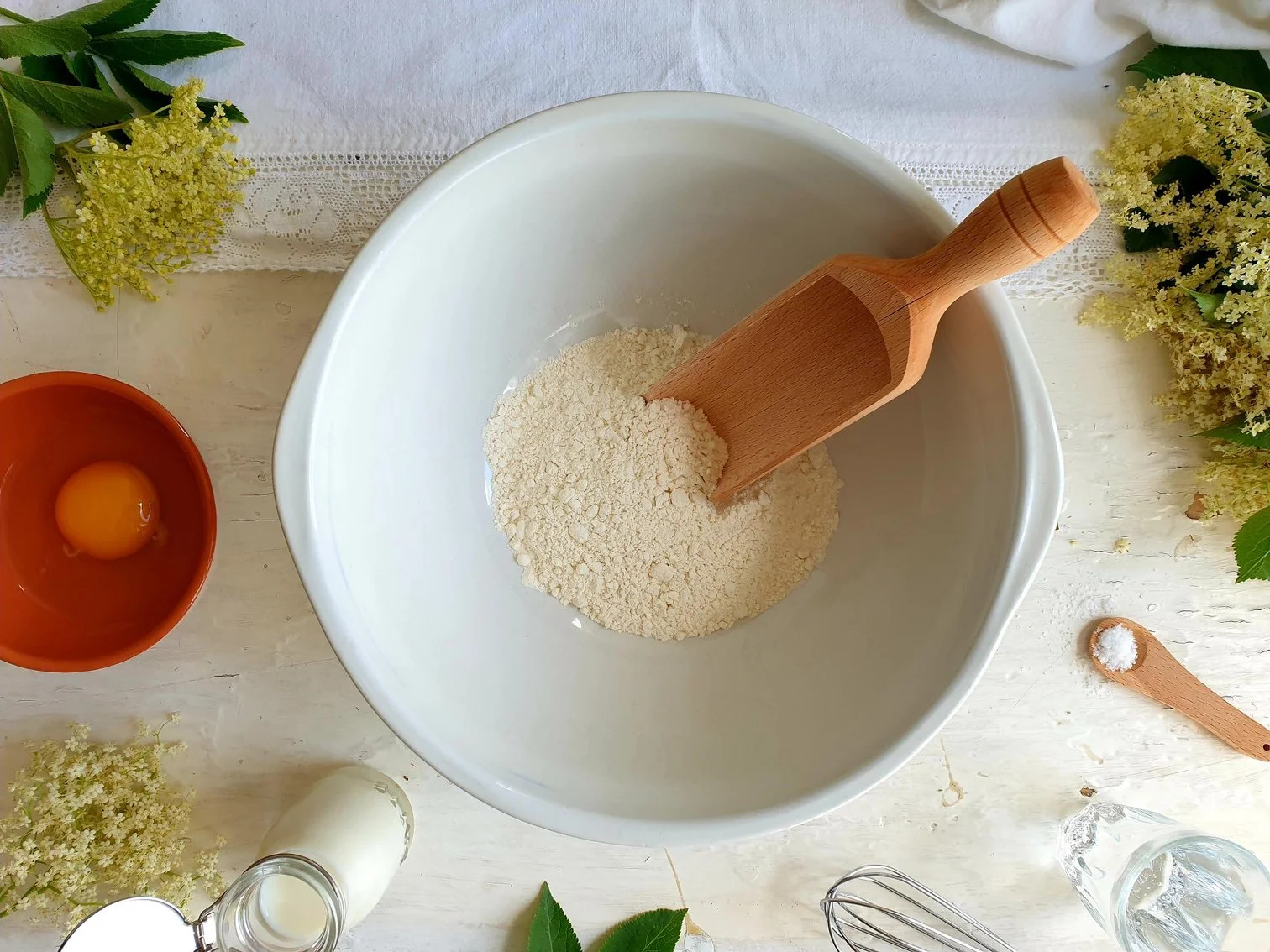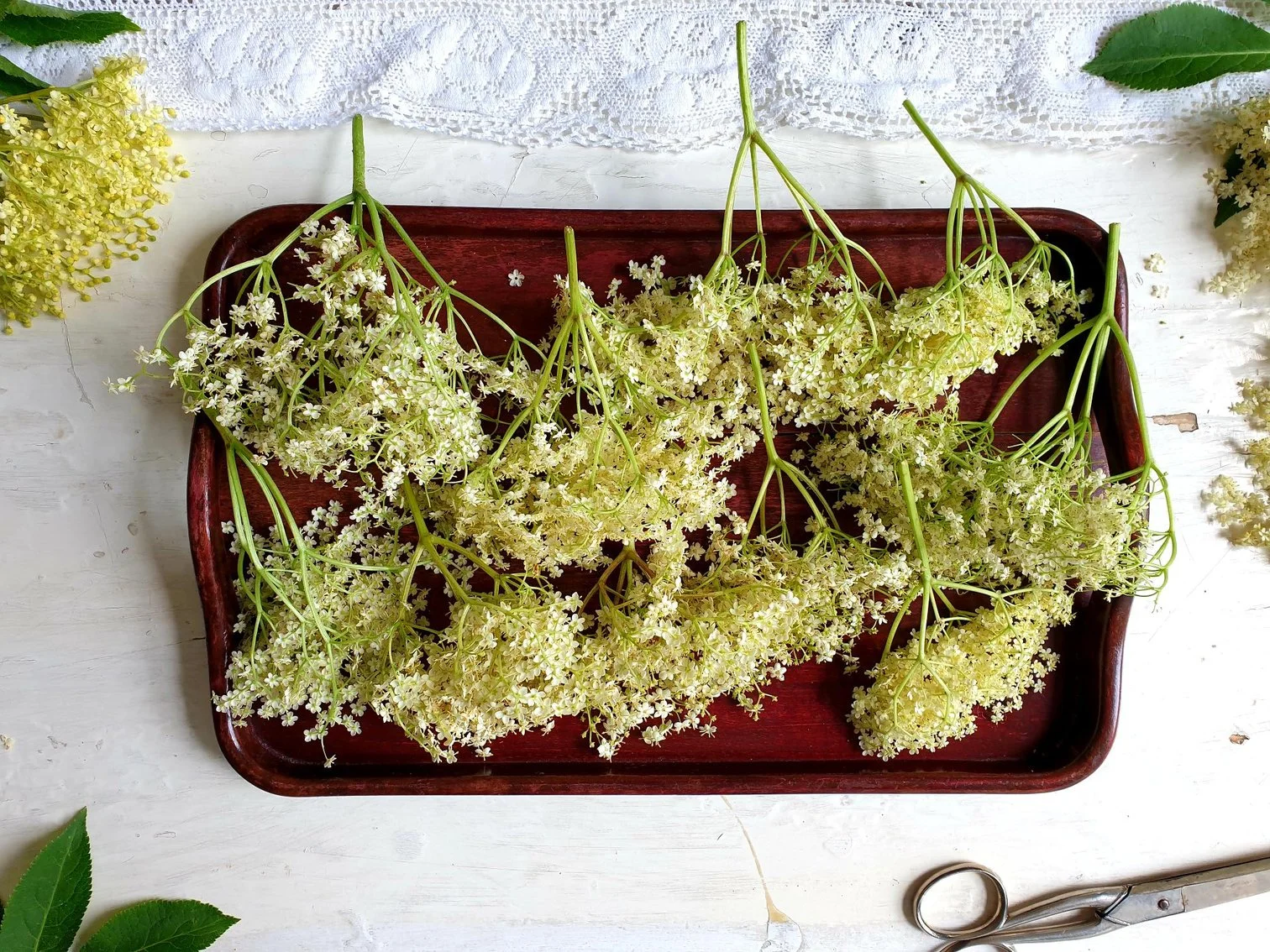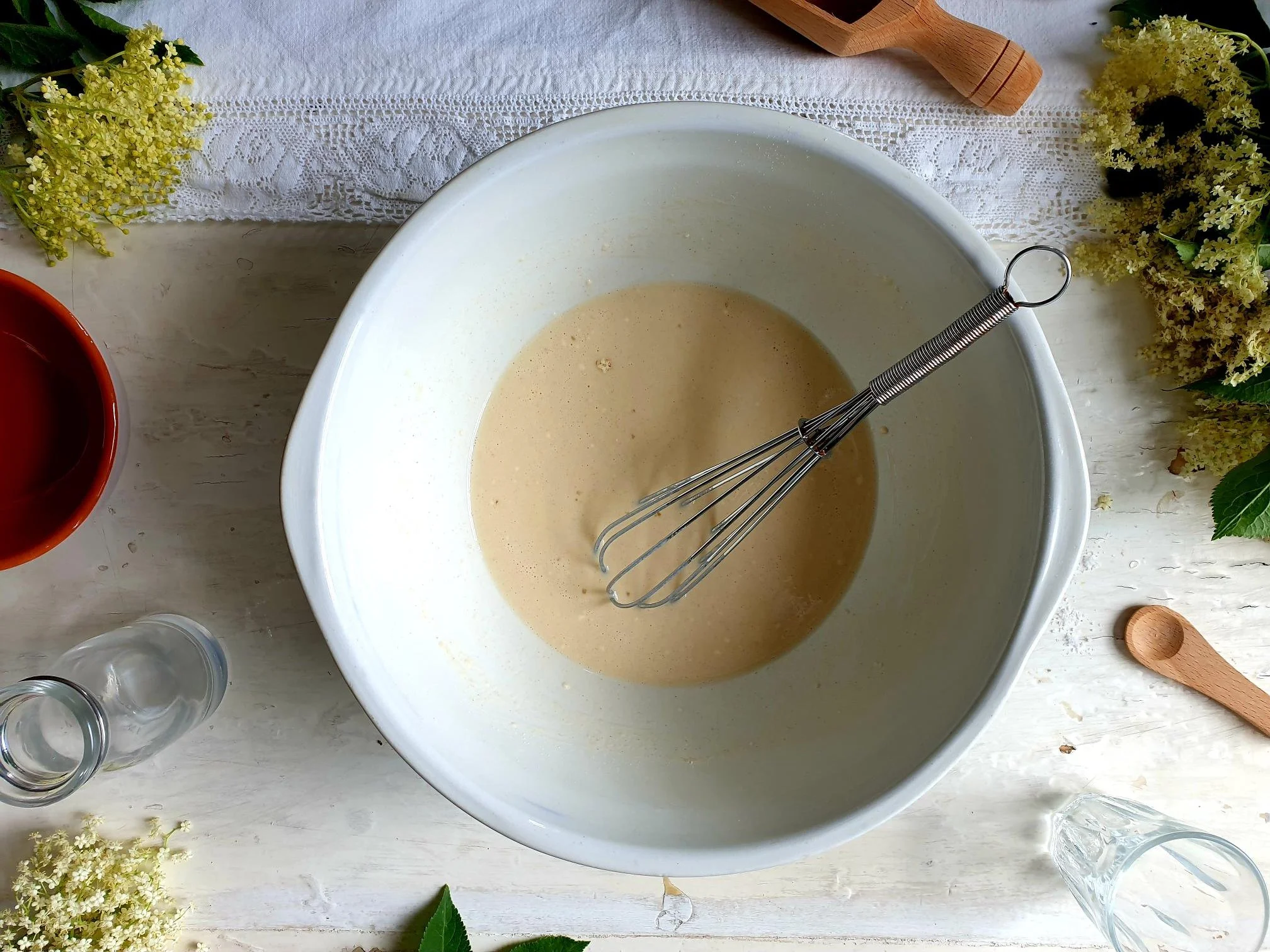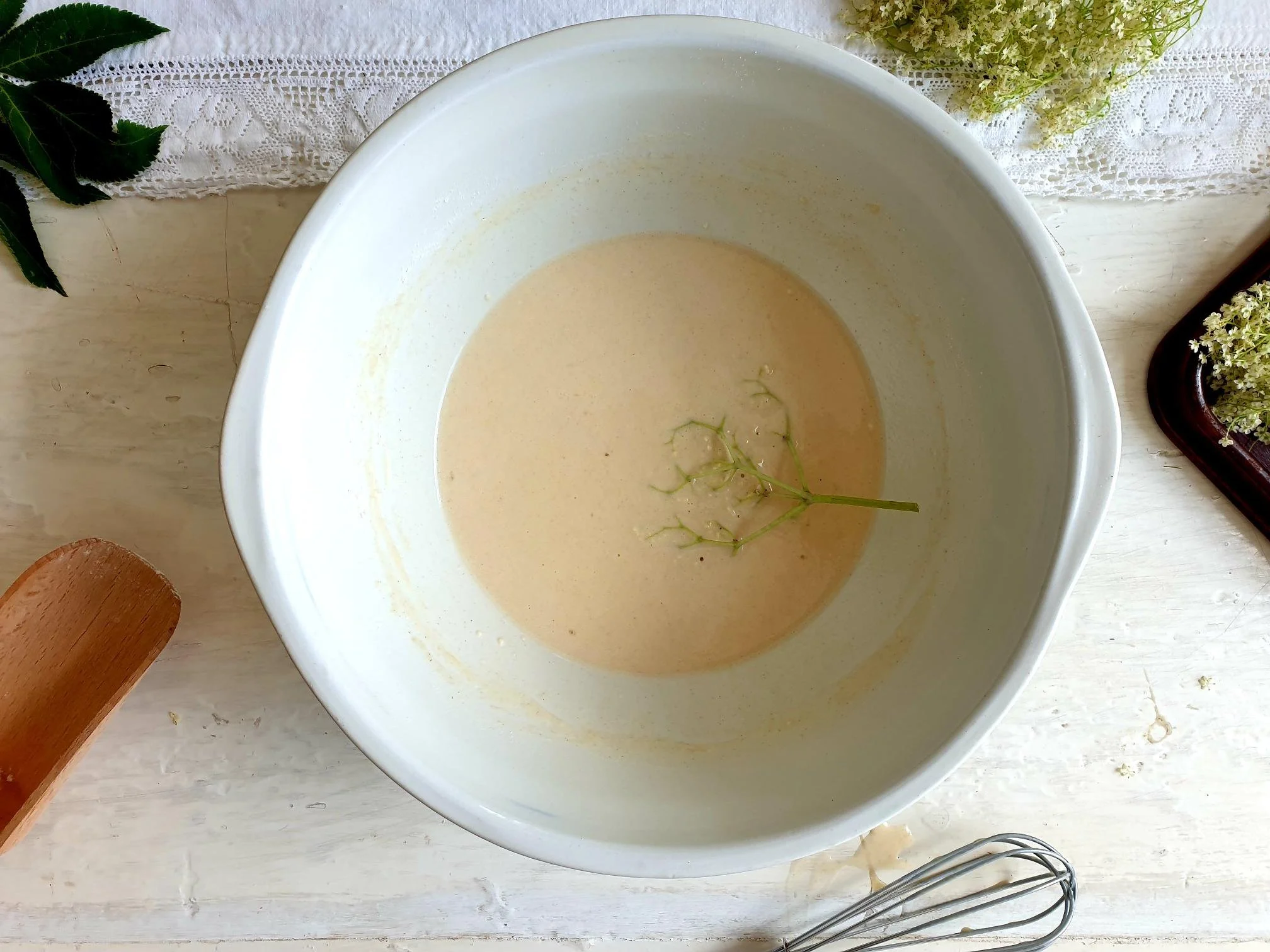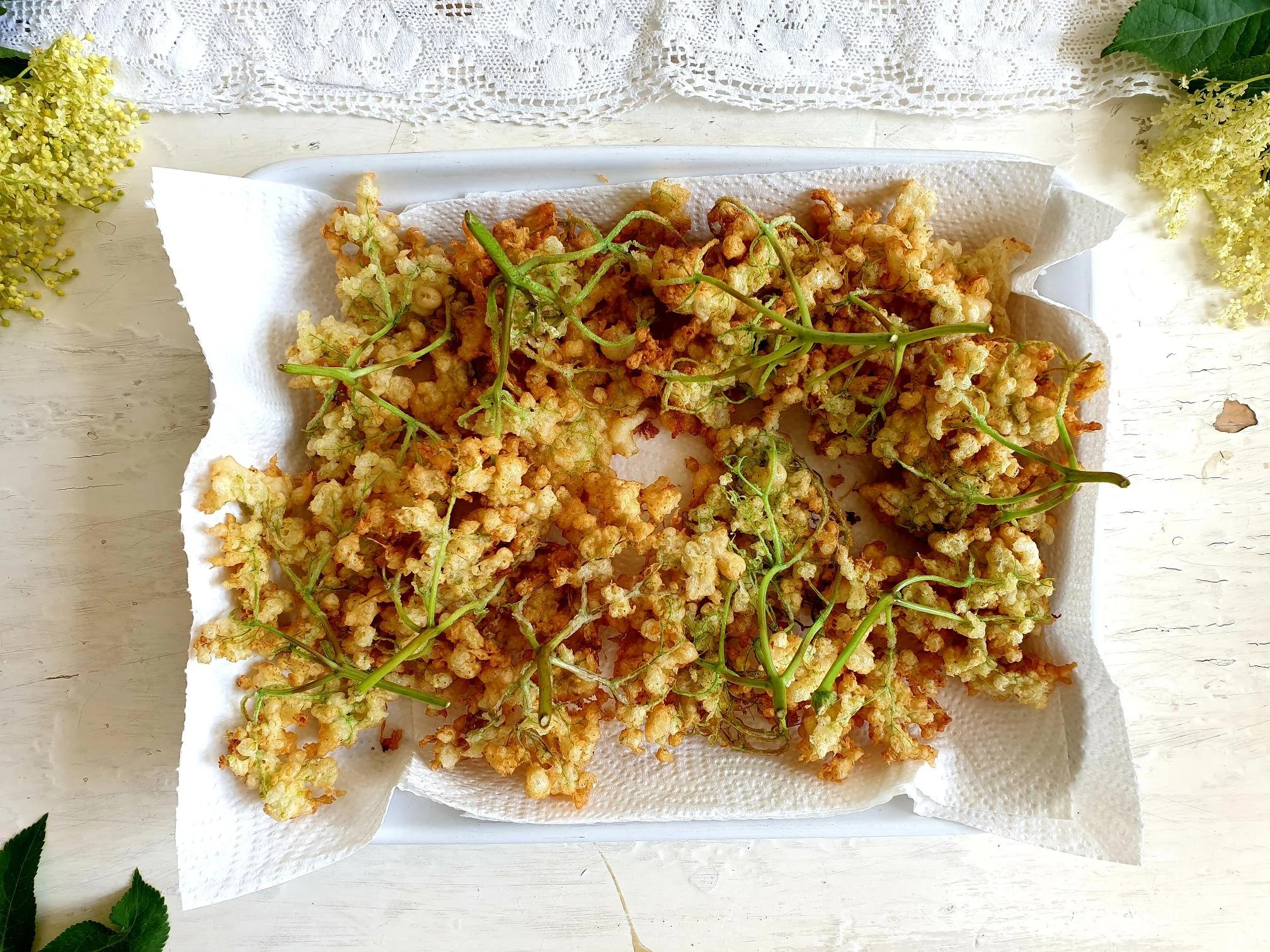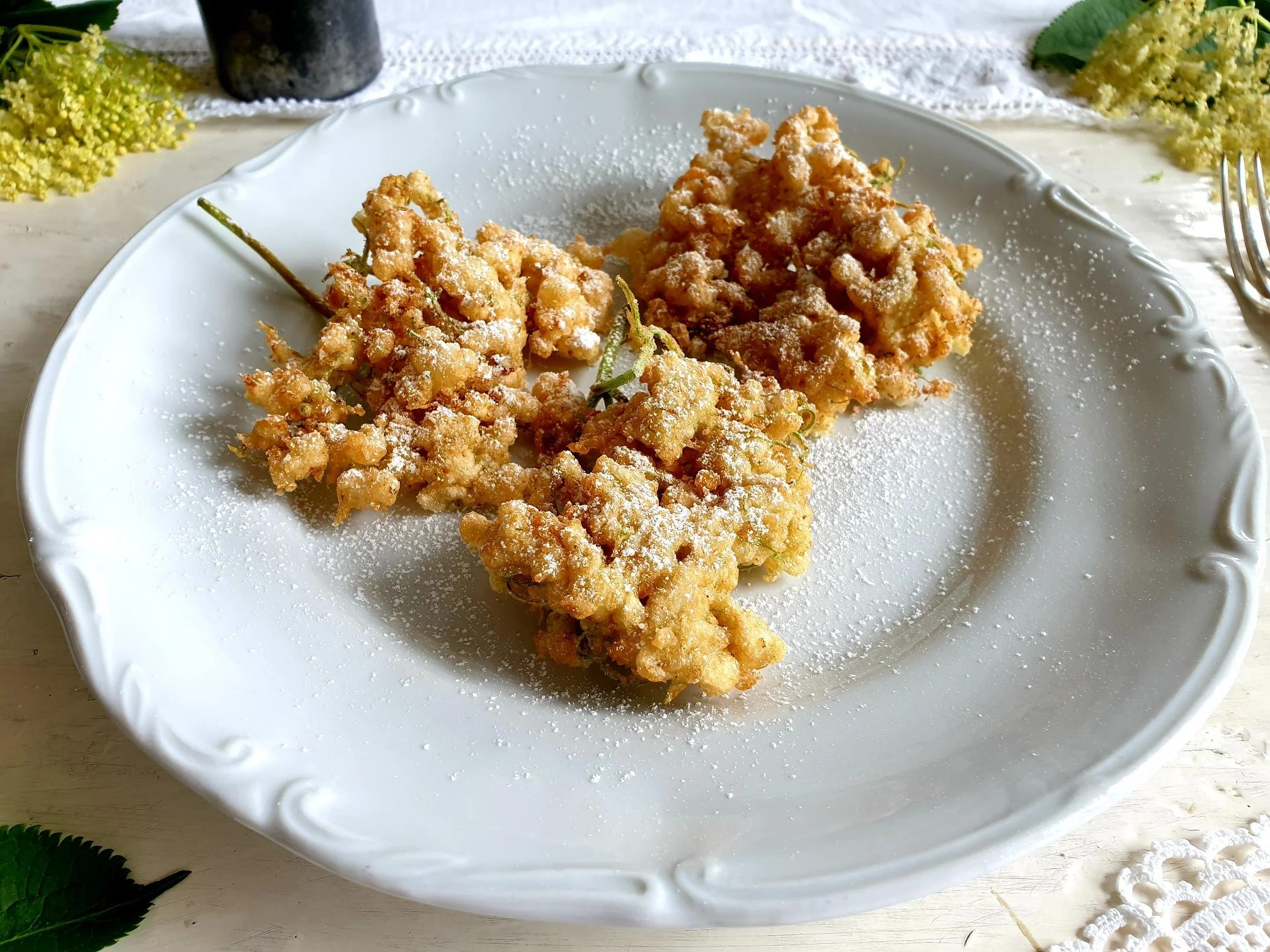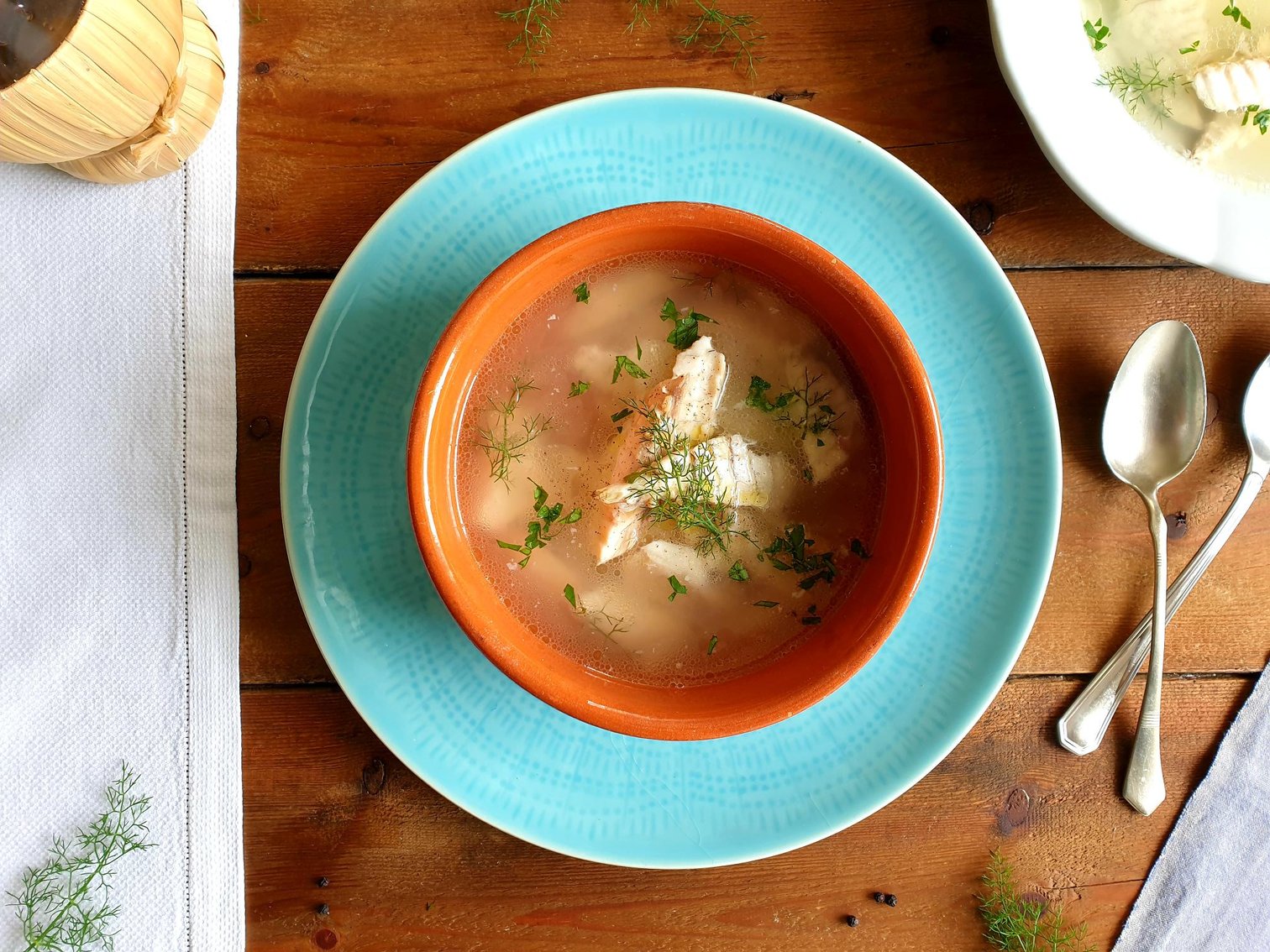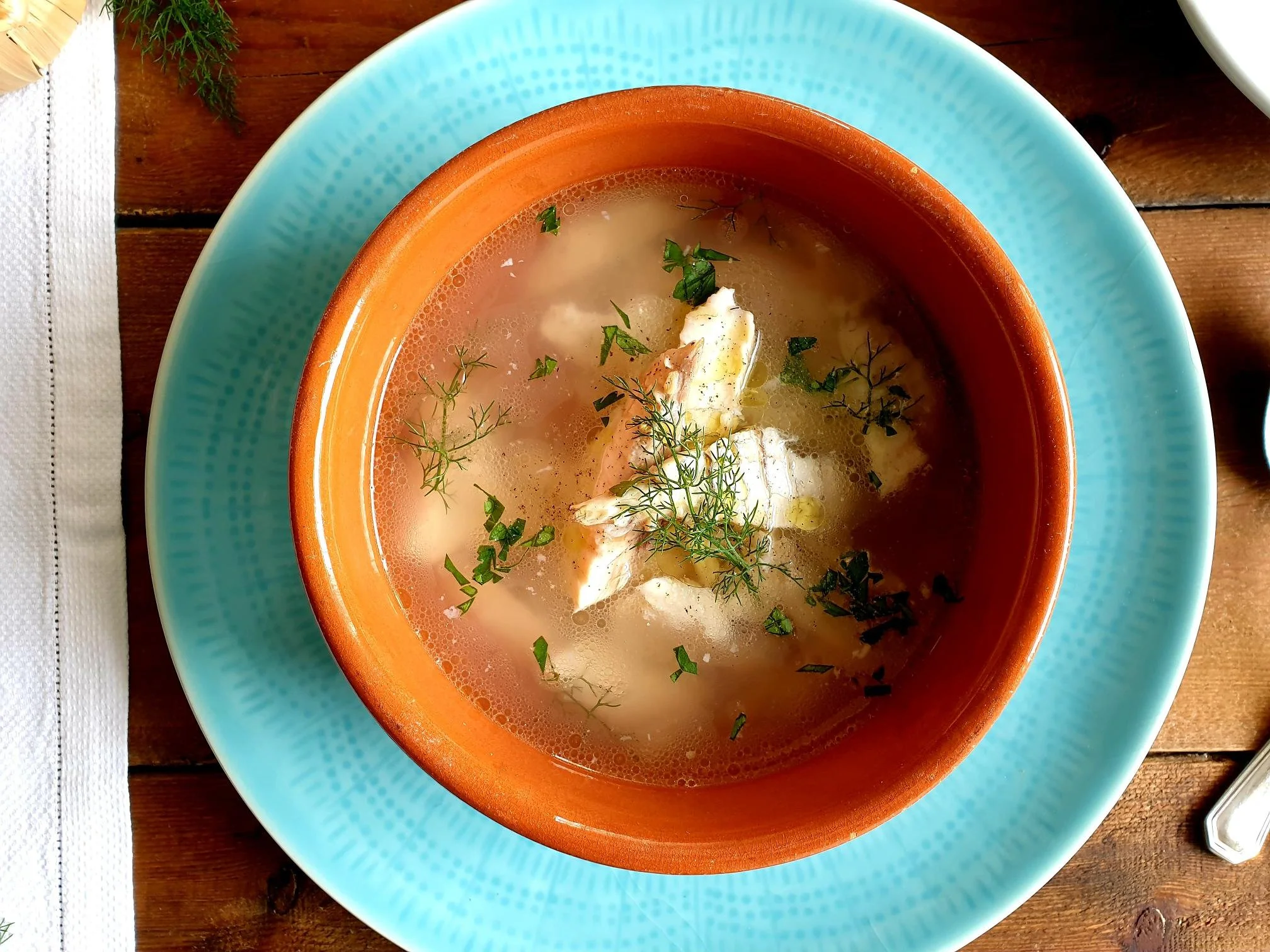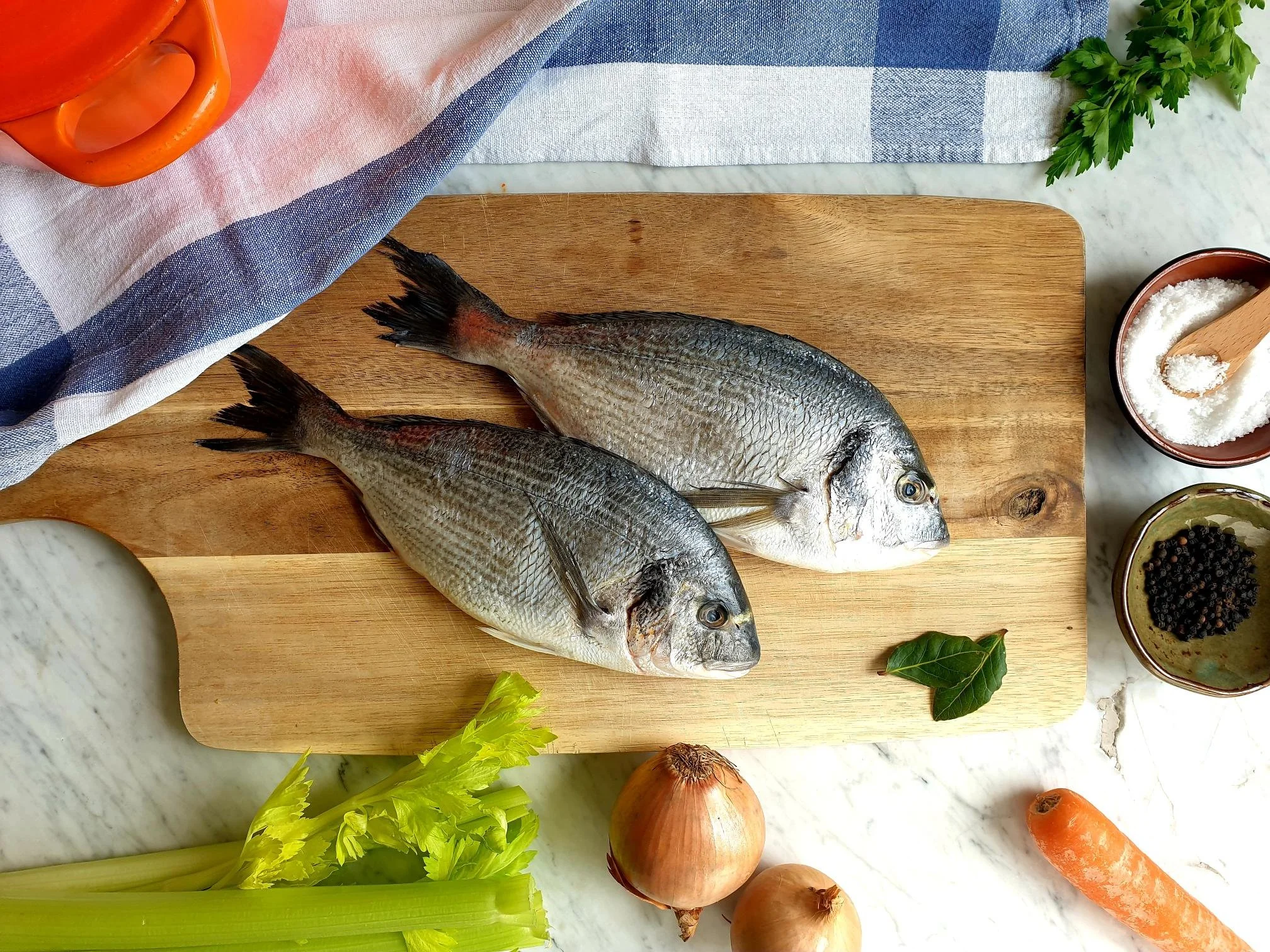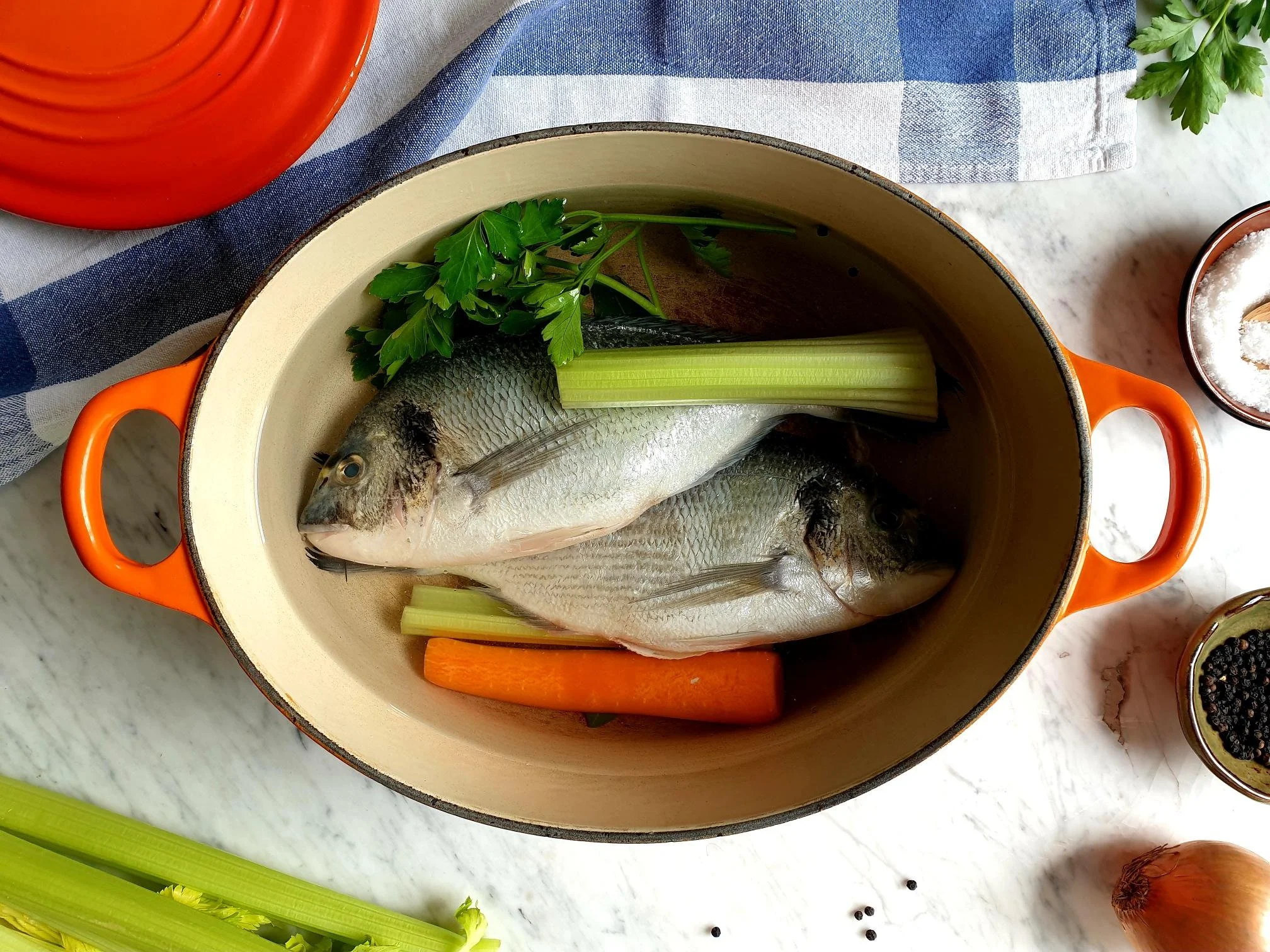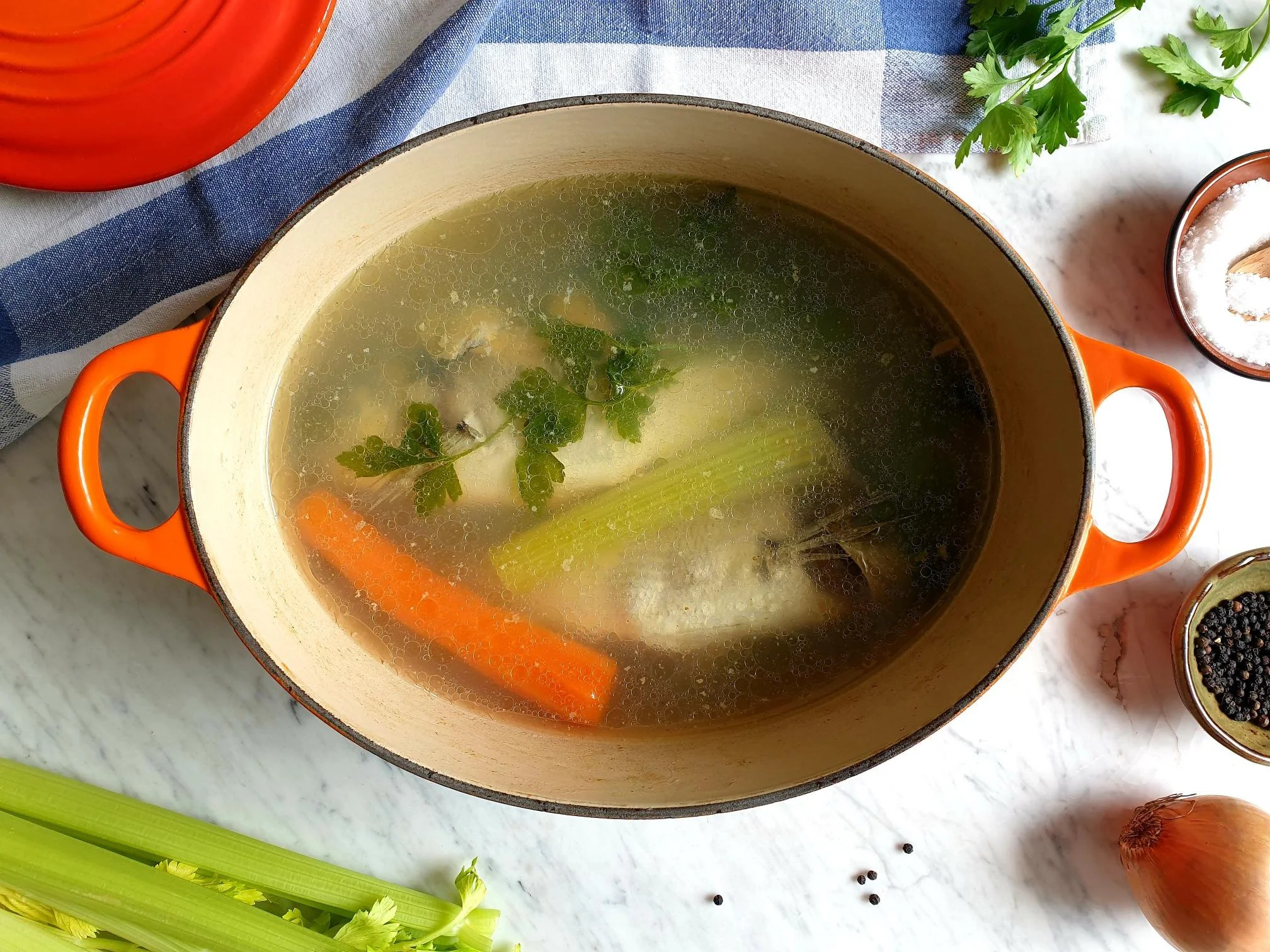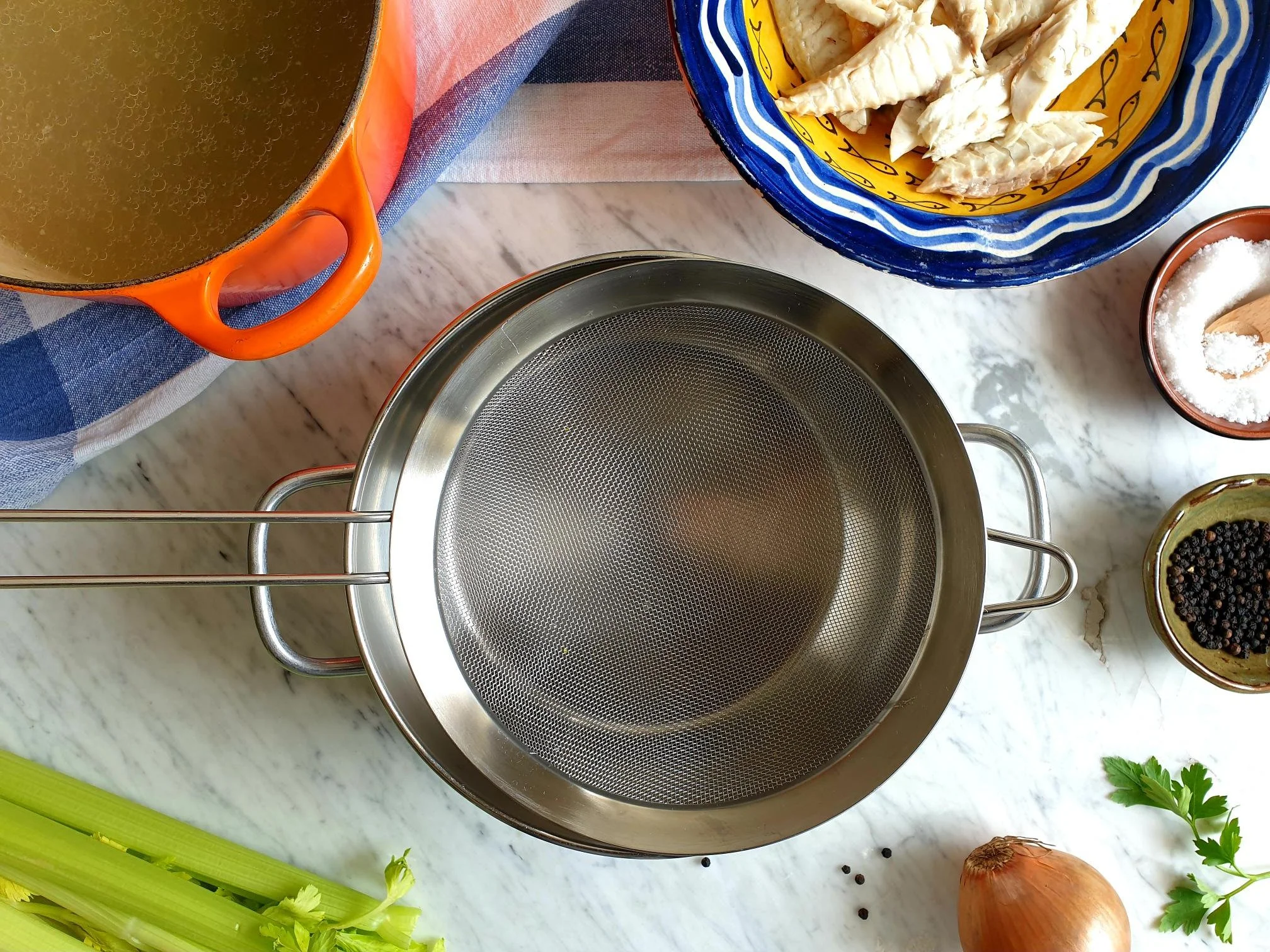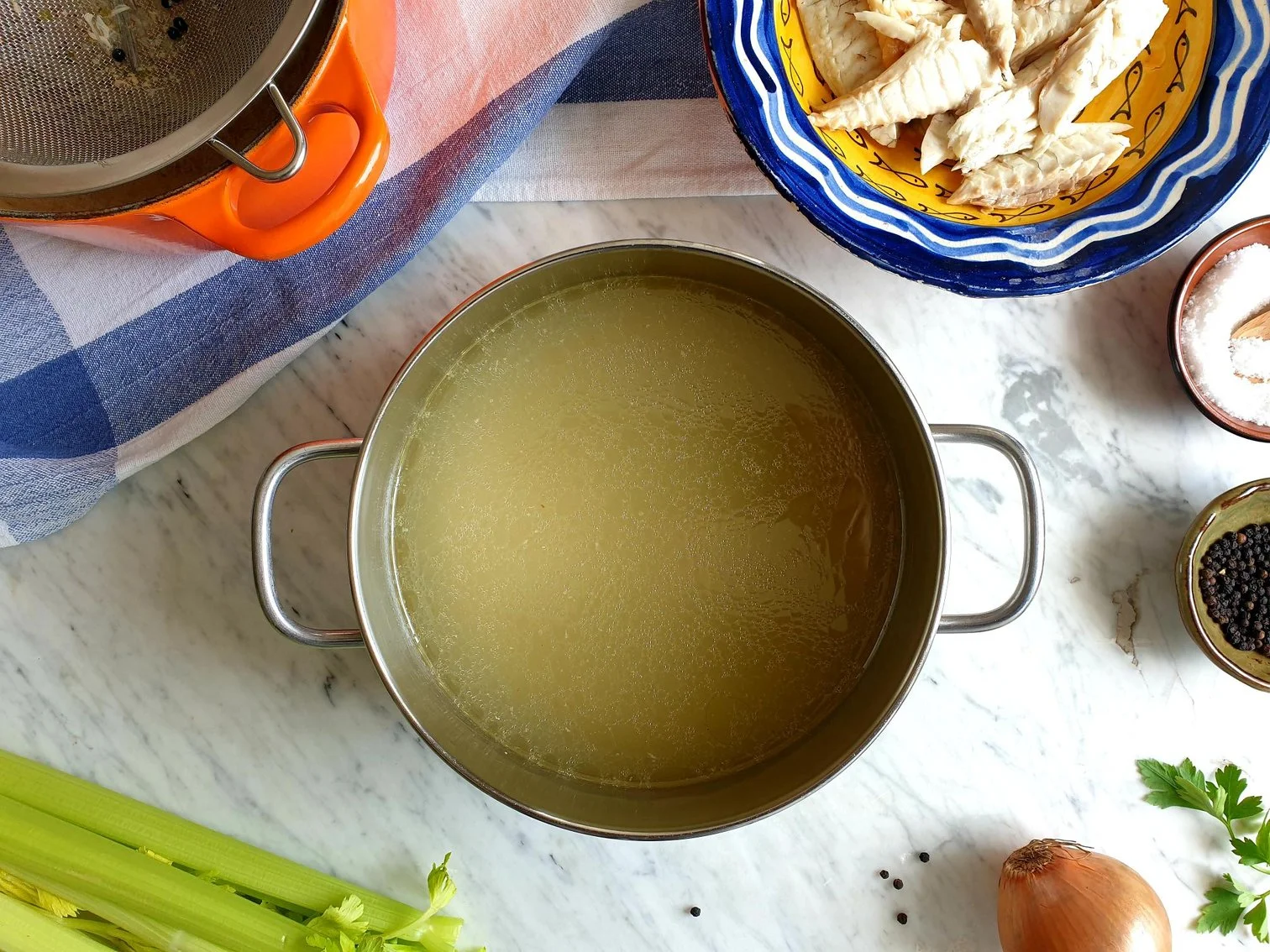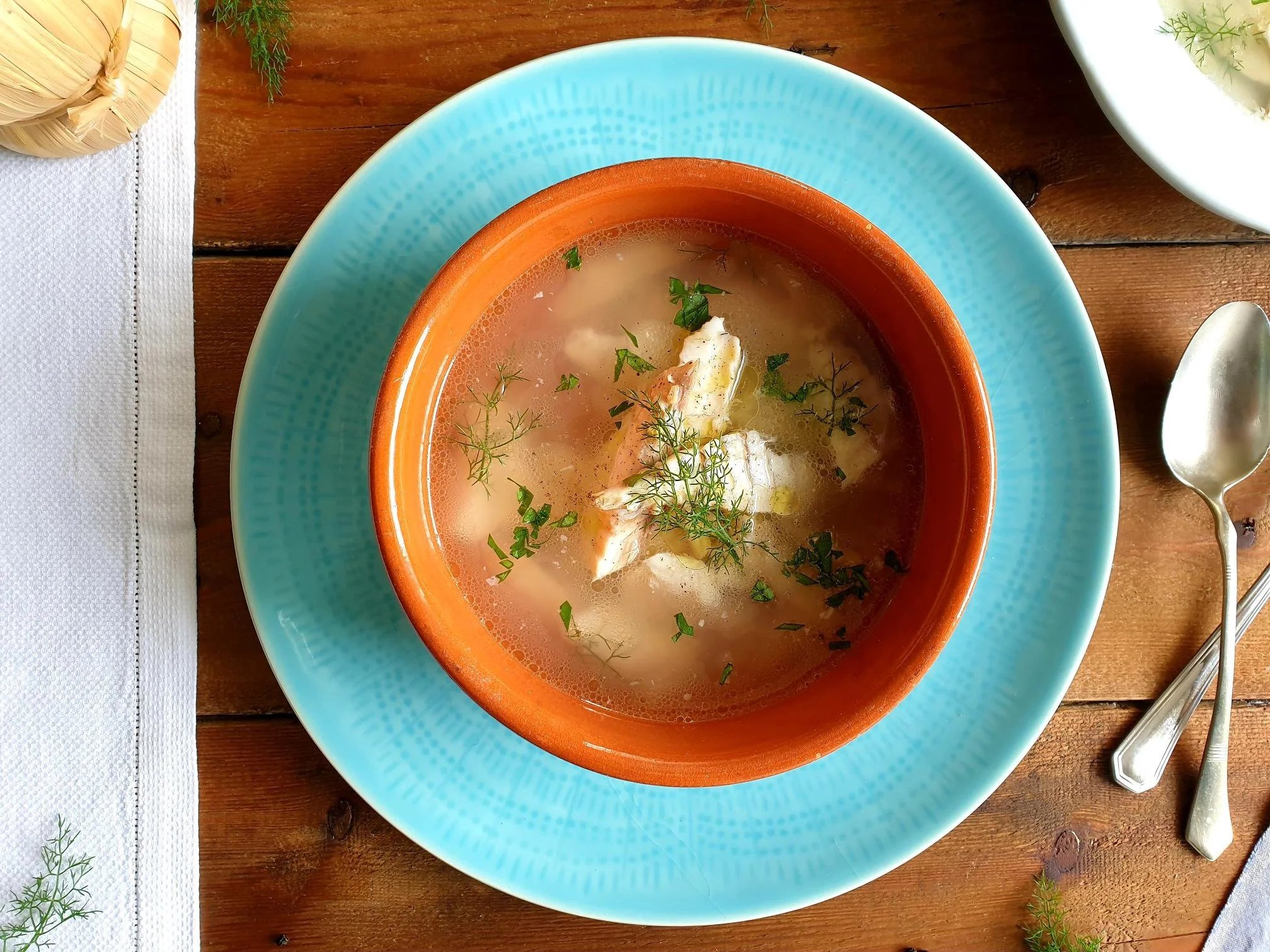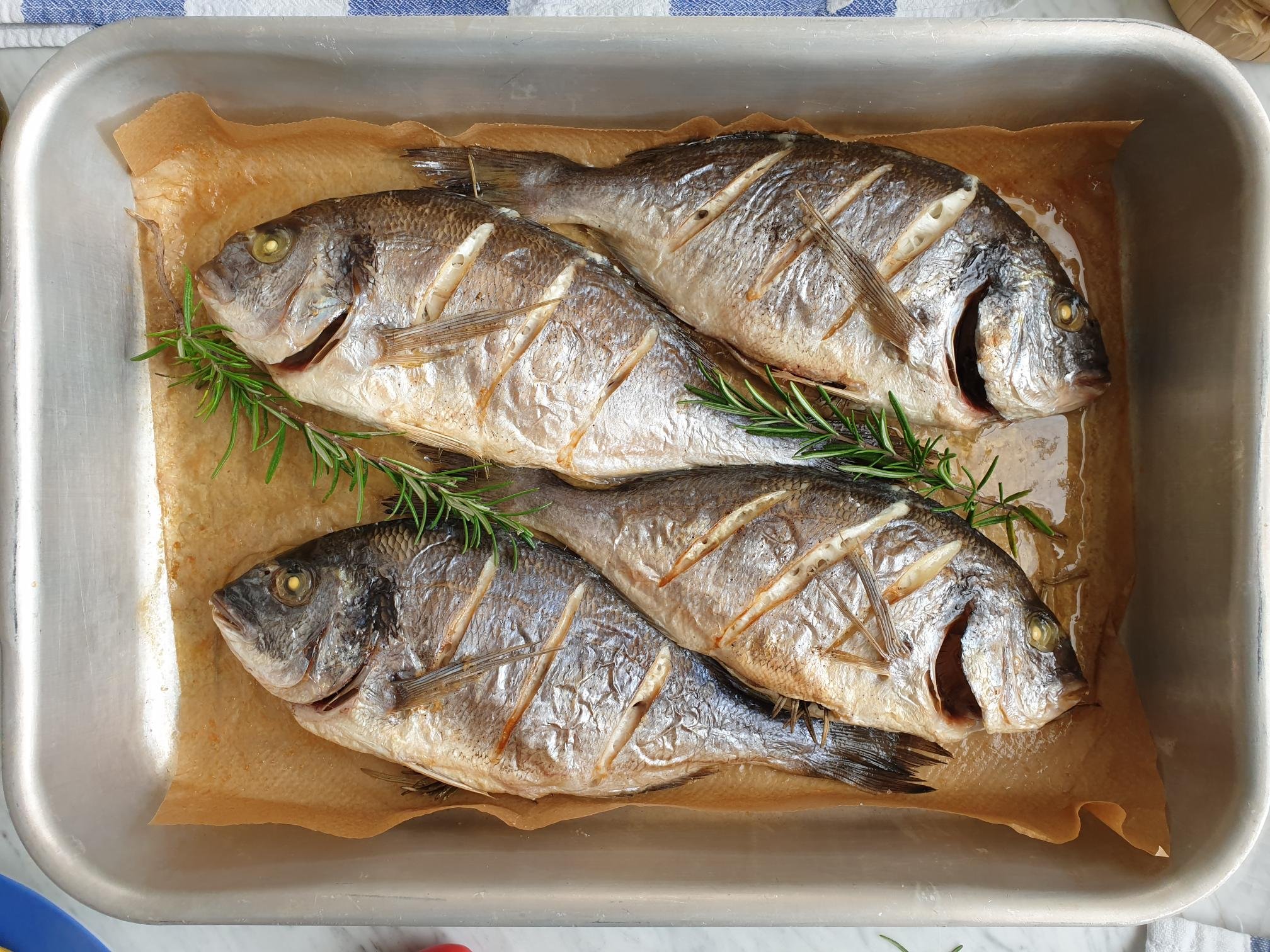Scampi in tomato (buzara style) sauce Istrian Recipe
Scampi/langoustines in buzara (busara) sauce is a one pot main fish course, and a recipe that proofs that cooking fish can be incredibly easy.
This is a very simple, flavourful and delicious dish that makes seafood lovers very happy indeed.
The dish is kind of a super tasty stew where the scampi are cooked in a simple tomato sauce, known as red buzara sauce (as supposed to white buzara sauce without the addition of tomatoes traditionally used to cook the mussels).
During the cooking process the langoustines release their juices and together with the rest of the ingredients make the most delicious sauce.
You will need plenty of fresh rustic crunchy bread or polenta to soak up all the sauce. It is a very informal dish as it it traditionally eaten with hands.
Great for dinner parties and kids have great fun unpeeling the langoustine tails. They feel a bit special and grown up, and it is a great way to get them familiar with the seafood from a very early age.
This special dish is very much loved and typically found and enjoyed in Dalmatia (Croatia), along the coast of Istria (In Croatia and Slovenia), in the town of Trieste and in the regions of Friuli Venezia Giulia and Veneto in Italy. The meaning and the origin of the term busara or buzara is still unclear.
It is not surprising that this dish is so popular in this areas as scampi found ideal conditions in the Kvarner Bay, offering the perfect environment for the scampi, being renowned to be the best in the world.
Along the Slovenian coast this dish is normally prepared and cooked in the households to mark a special occasion, as the langoustines, although readily available, could be a bit pricey. It can also be found on the menu in almost every seafood based restaurant as Škampi na buzaro.
My dad used to make the best one. On Saturday morning he would go to the local fish market and come back with full bag of fresh langoustines. Keeping the quantities small when it came to food was surely not his strength. We all knew there would be a feast in the evening with friends coming over. When my father cooked langoustines our family friends never minded a last minute invitation.
I am sharing here the family recipe for this simple yet wonderful and successful dish.
Recipe
Ingredients
Serves 4
5 Tbsp extra virgin olive oil
1 onion (about 70g), peeled and finely chopped
1kg langoustines, fresh or frozen (can use prawns instead) If using frozen langoustines or prawns make sure they are defrosted safely beforehand.
400g tin good quality chopped tomatoes or plum tomatoes, chopped (you can use fresh tomatoes if you prefer, but make sure they are well ripen and sweet, remove the skin and chop them)
100ml white wine
1-2 Tbsp dry breadcrumbs
fresh flat leaf parsley, a handful (about 10g), finely chopped, plus some extra for garnishing, optional
1-2 cloves of garlic, peeled and crushed
sea salt, to taste
Wash the langoustines under cold running water and place them into a colander.
Take a pair of kitchen scissors and one individual langoustine in your hand, turn it upside down, facing the soft shell side of the tail towards you. Insert the scissors at the bottom of it and cut through along the length of the entire tail.
This is quite an essential part as the juices will go out of the langoustines and give a sauce a rich taste, but it will also really help you to remove the tails once cooked.
Put extra virgin olive oil in a large skillet or saucepan, big enough to accommodate all the langoustines, preferably in one layer, they can overlap a bit.
Add finely chopped onions and cook on a medium-law heat until the onions are translucent and soft. Add crushed garlic and cook together with the onions for a minute or so stirring constantly in order to avoid garlic burning.
Place the langoustines in a pan and cook for about 10 minutes giving a pan a good shake now and again.
Pour white wine, deglaze the pan and let it evaporate.
Add chopped tomatoes, dry breadcrumbs, finely chopped parsley, 400ml of water and a pinch of sea salt.
Cook with the lid partially uncovered on a gentle heat for about 15-20 minutes.
During the cooking give a pan a little shake now and again. Taste the sauce and adjust the seasoning. If the sauce is too thick just add a splash of water or, on the contrary, if you think the sauce is too thin, add a pinch of breadcrumbs.
Serve the dish with soft cooked or grilled polenta, or simply, how it is traditionally done, with plenty of rustic crunchy bread. Not cutlery needed here, the dish should be enjoyed eaten with your hands.
Just a thought
You can use a bit of dry chilli flakes if you like a bit of a heat in your food and wish to add a bit of a kick to the dish. The langoustines, however, are quite mild and delicate in taste with a sweet note, so try to not over do it with the chilli as you will cover the taste.

